 |
||
|
HOME
|
US Navy -
ships
|
US Navy - air
units
|
USMC - air
units
|
International
Navies
|
Weapon Systems
|
Special Reports |
||
|
US Navy - Guided Missile Destroyer DDG 96 - USS Bainbridge |
||
|
||
| 07/24 | ||
|
Type, class:
Guided Missile Destroyer - DDG; Arleigh Burke class, Flight IIA Builder: General Dynamics Bath Iron Works, Bath, Maine, USA STATUS: Awarded: March 6, 1998 Laid down: May 7, 2003 Launched: October 30, 2004 Commissioned: November 12, 2005 IN SERVICE Homeport: Naval Station Norfolk, Virginia Namesake: Commodore William Bainbridge (1774-1833) Ships Motto: COMPETENCE - DEDICATION - DISCIPLINE Technical Data: see: INFO > Arleigh Burke class Guided Missile Destroyer - DDG |
||
| images | ||
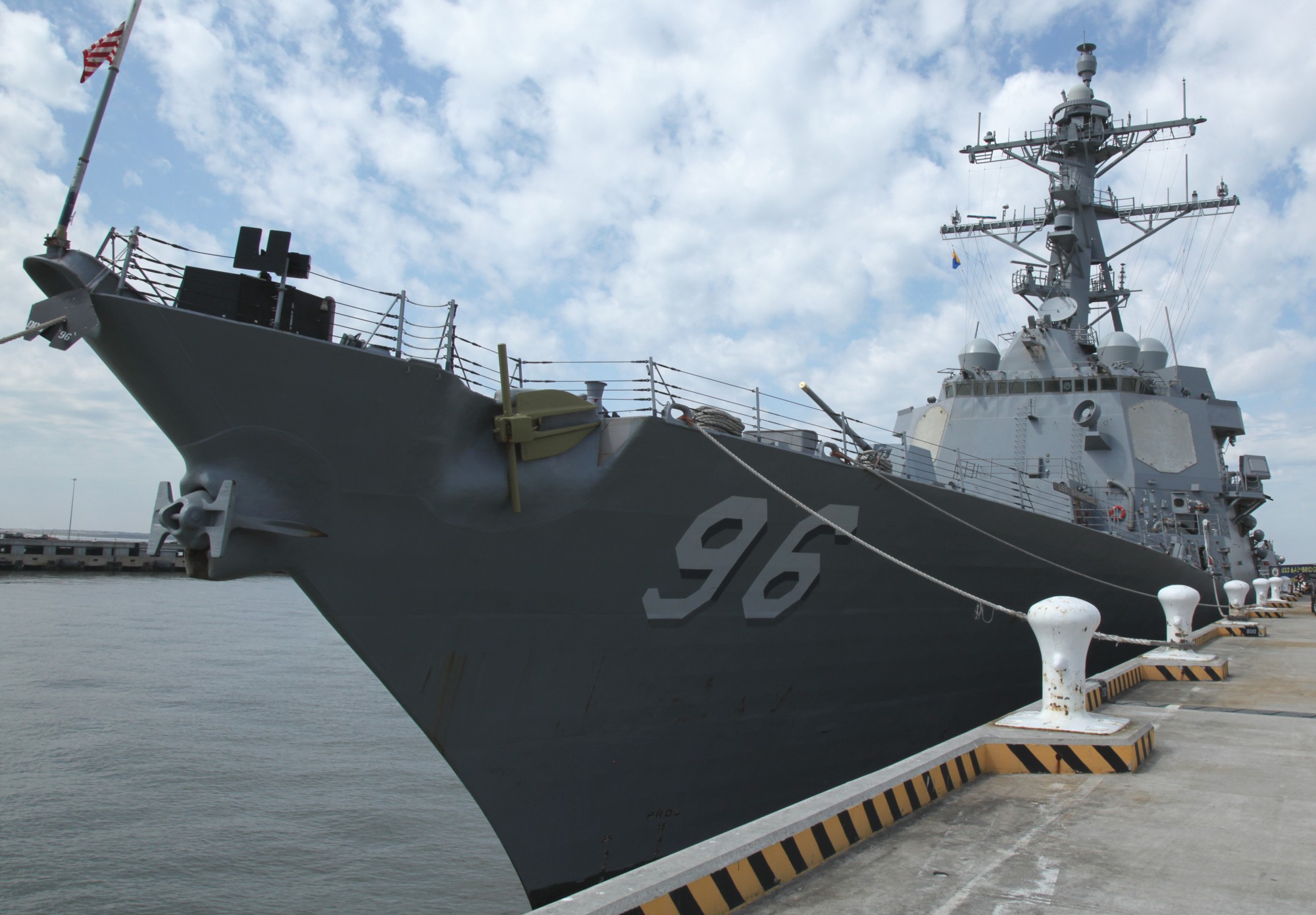 returning to Naval Station Norfolk after a Docking Selected Restricted Availability (DSRA) at General Dynamics NASSCO, Norfolk, Virginia - December 6, 2023 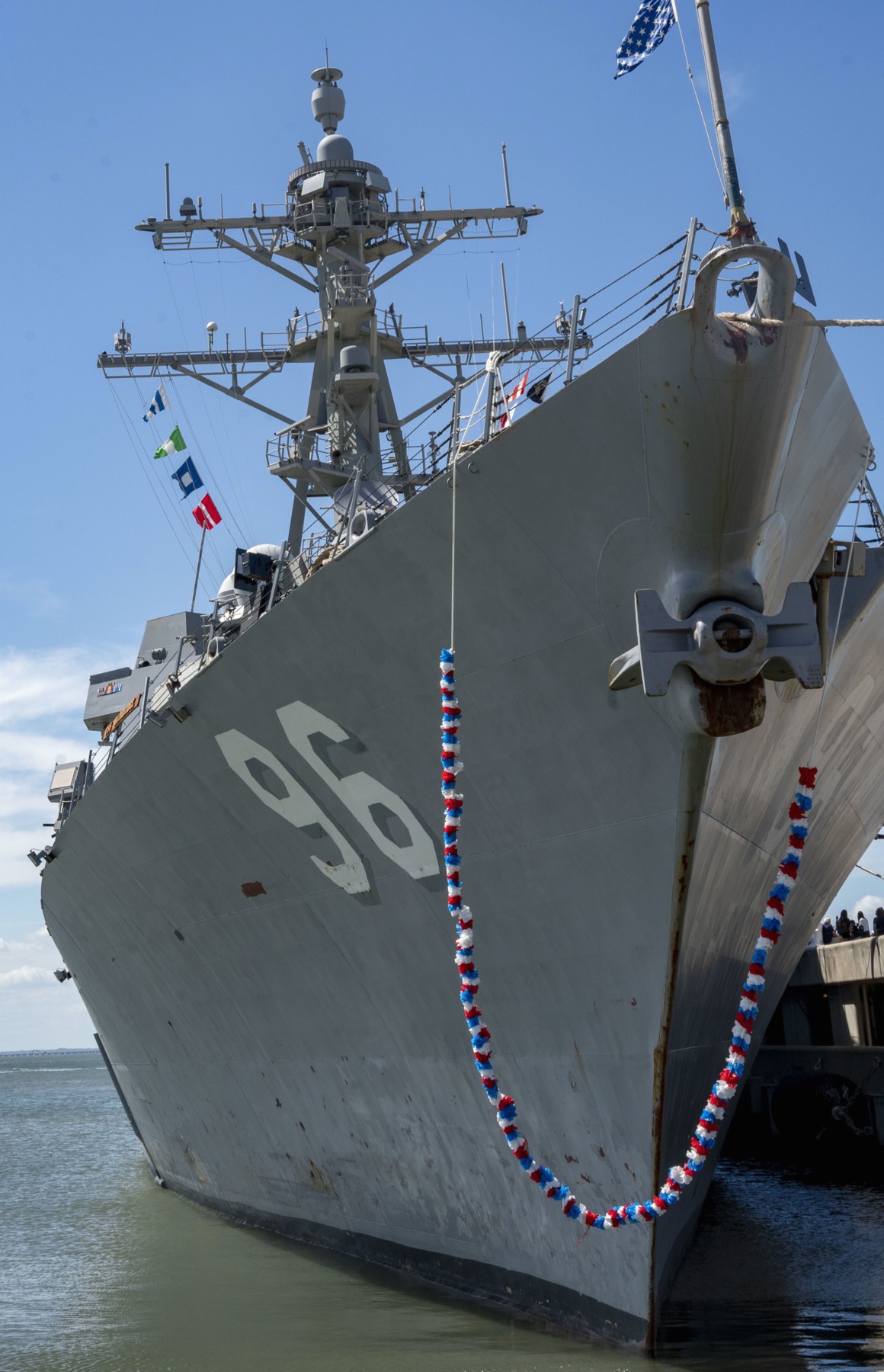 returning to Naval Station Norfolk, Virginia - September 9, 2022 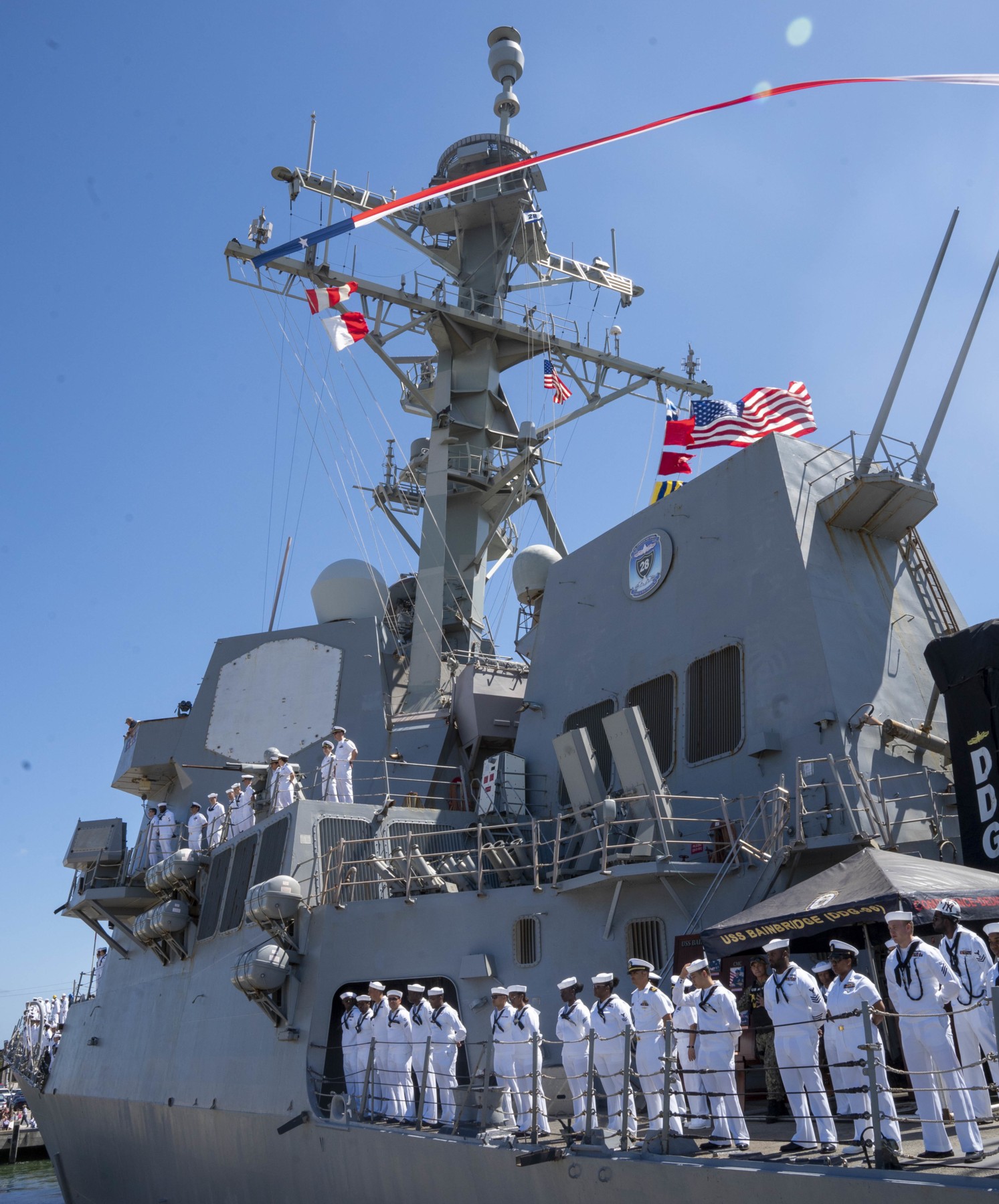 returning to Naval Station Norfolk, Virginia - September 9, 2022 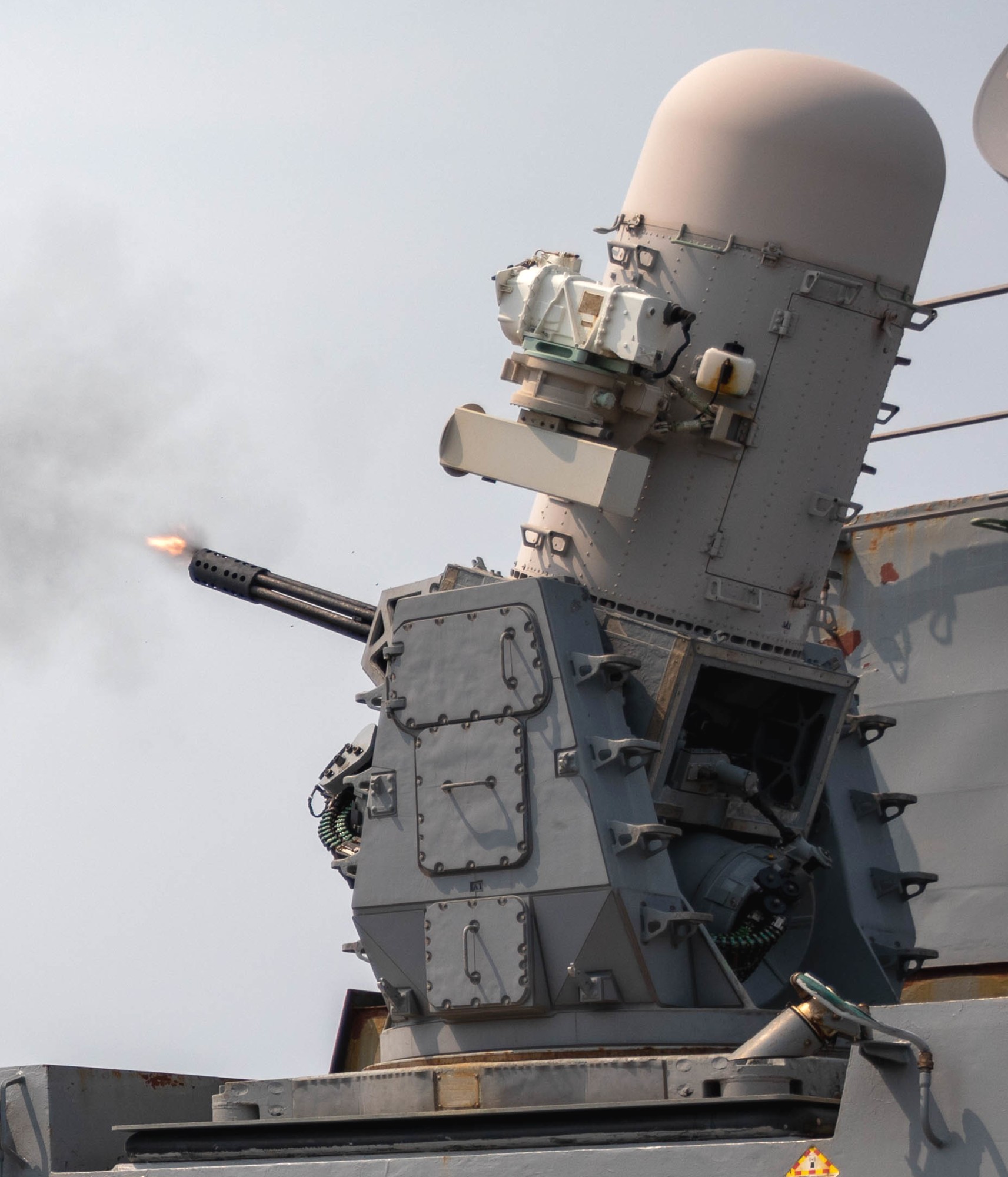 Mk.15 Phalanx CIWS fire - Mediterranean Sea - August 2022 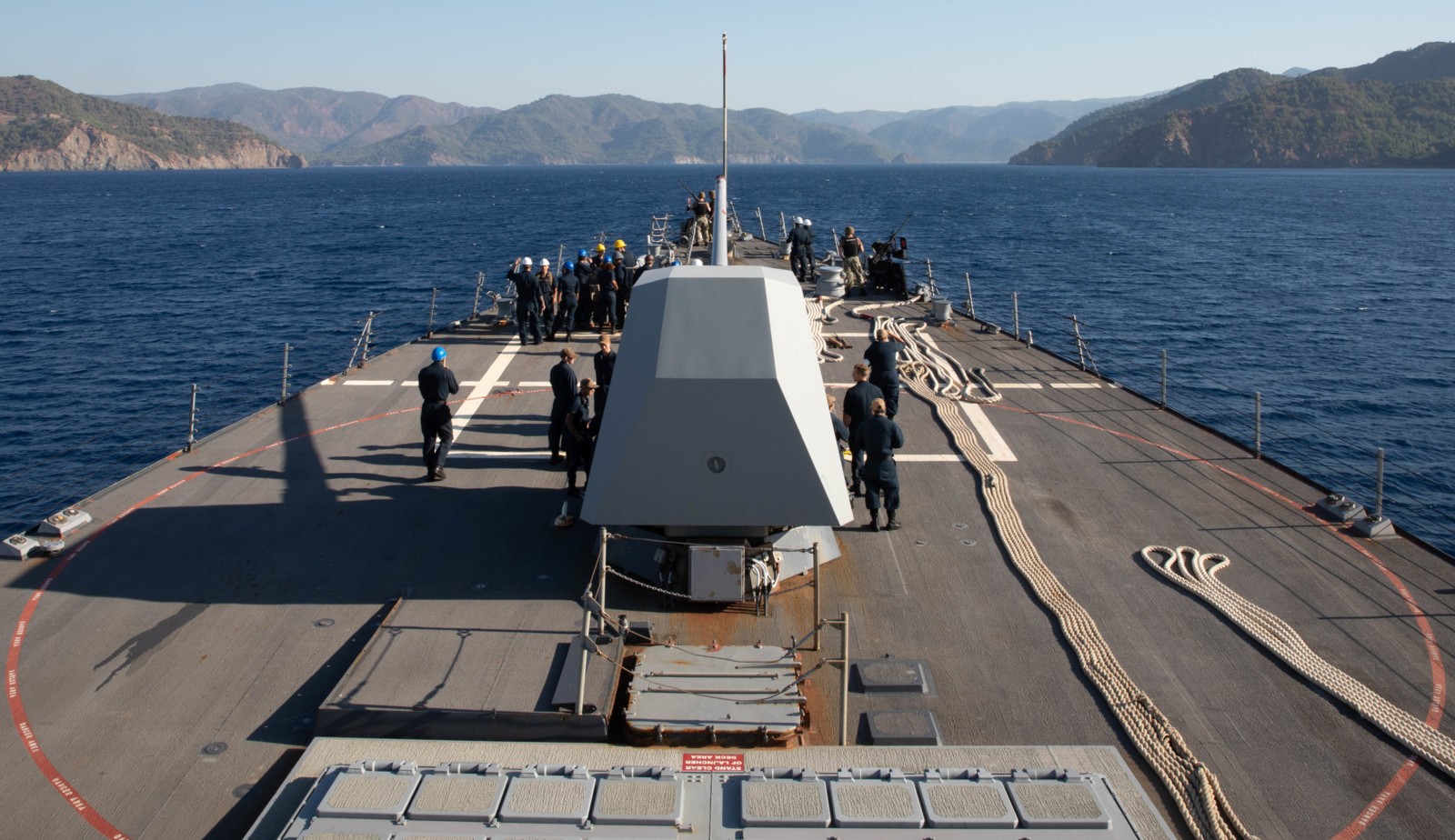 Marmaris, Turkey - July 18, 2022 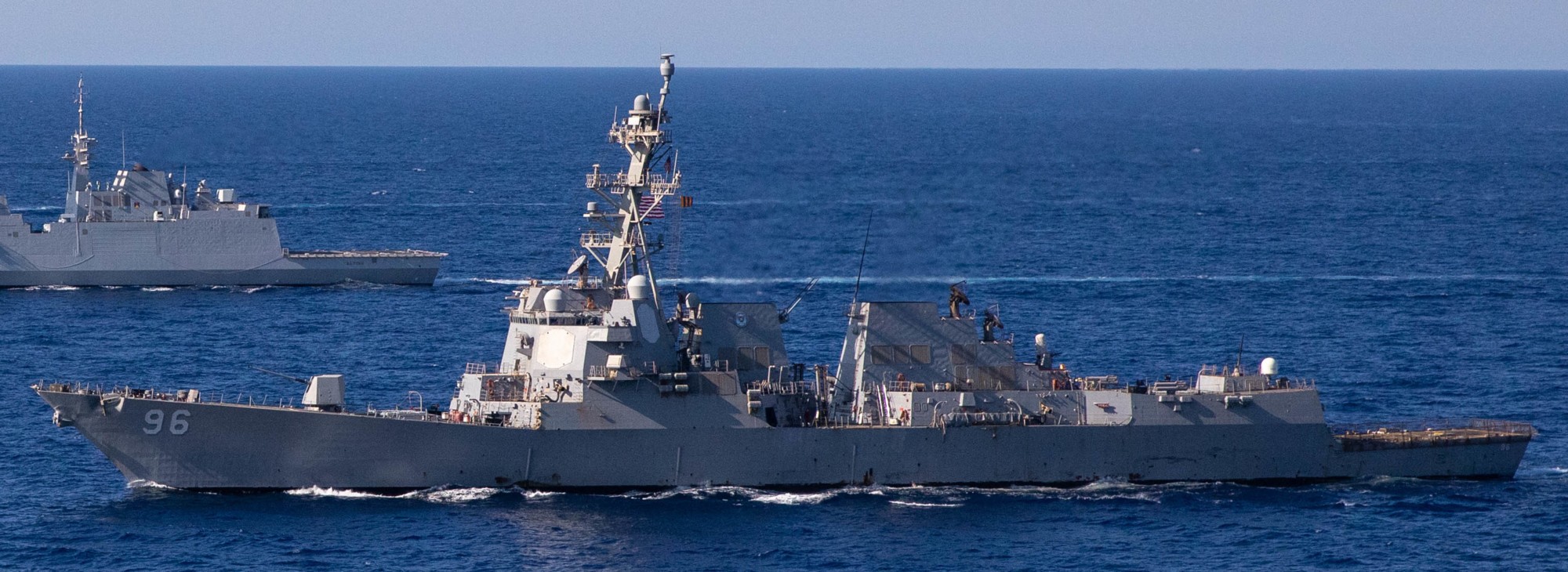 Adriatic Sea - July 2022 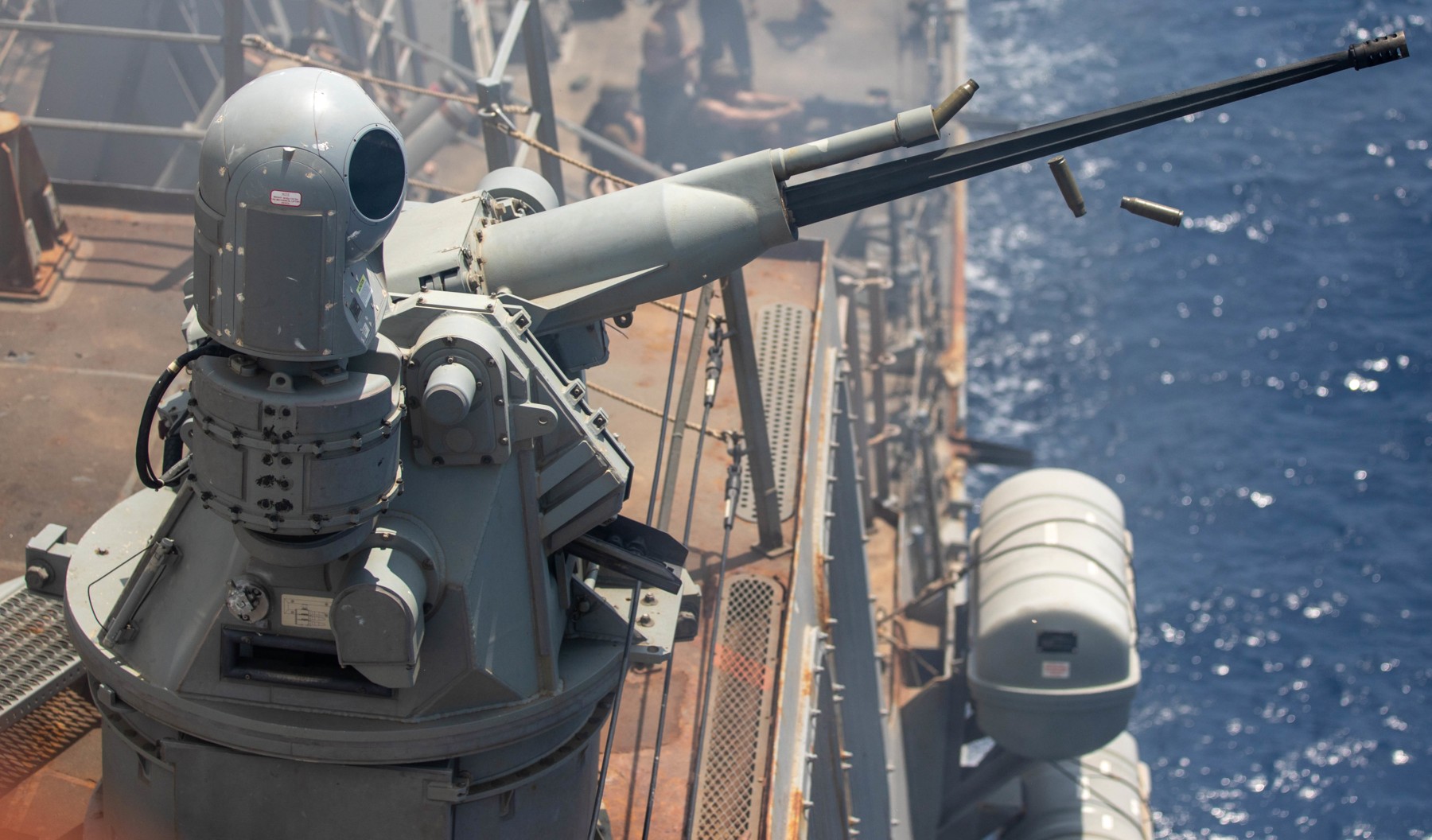 Mk.38 Mod.2 machine gun fire - Ionian Sea - July 2022 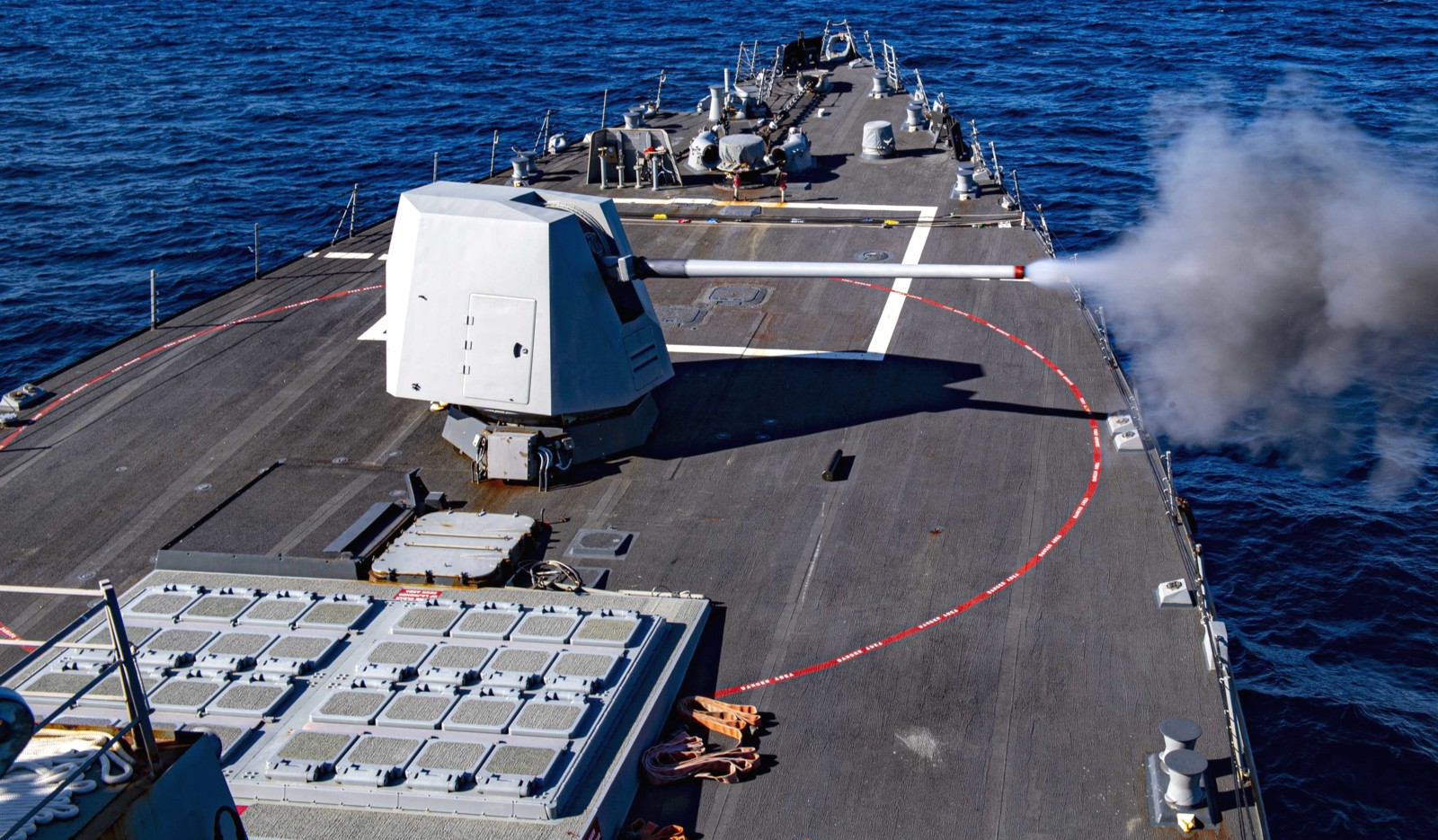 Mk.45 Mod.4 gun fire - Mediterranean Sea - February 2022 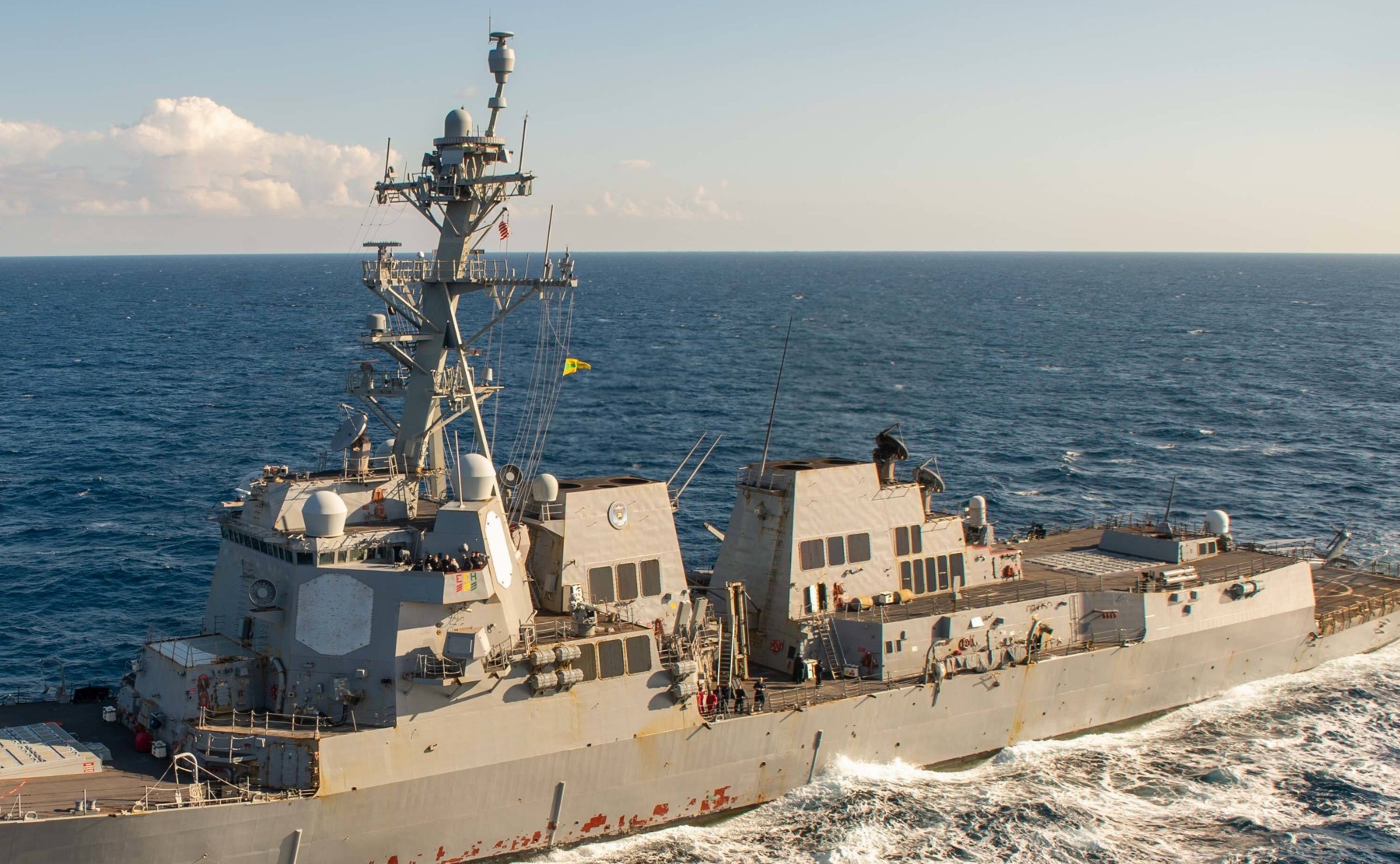 Mediterranean Sea - January 2022 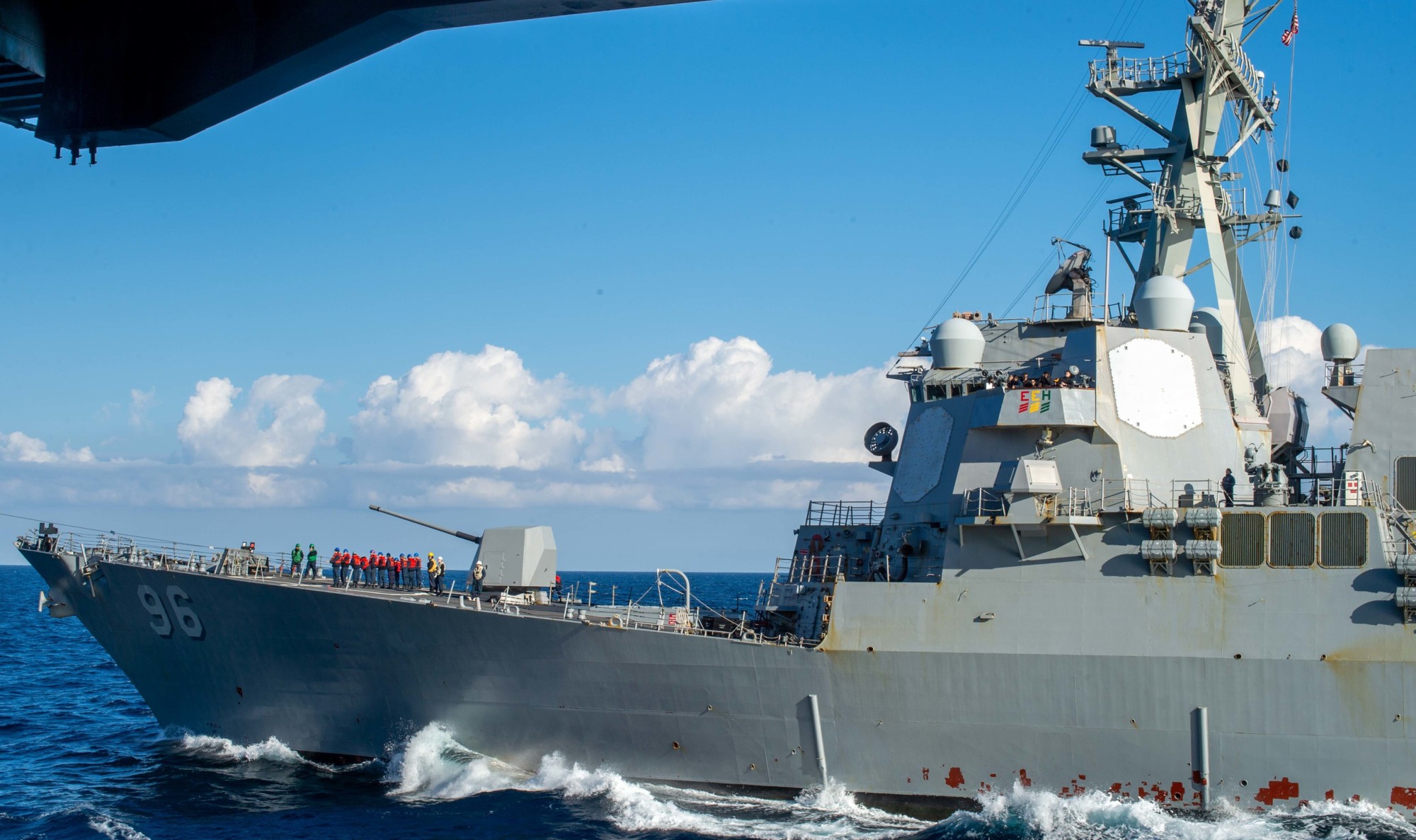 Mediterranean Sea - January 2022 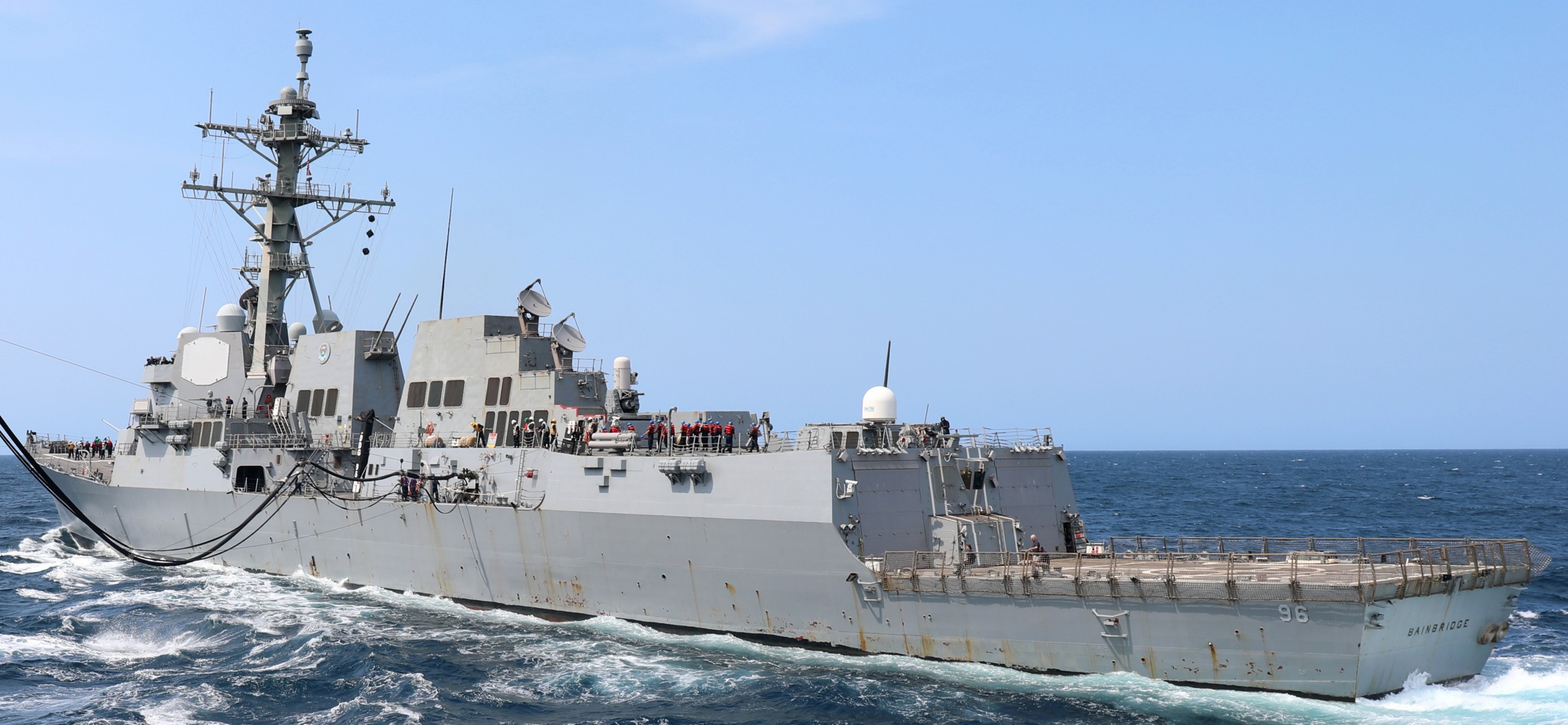 Atlantic Ocean - July 2021 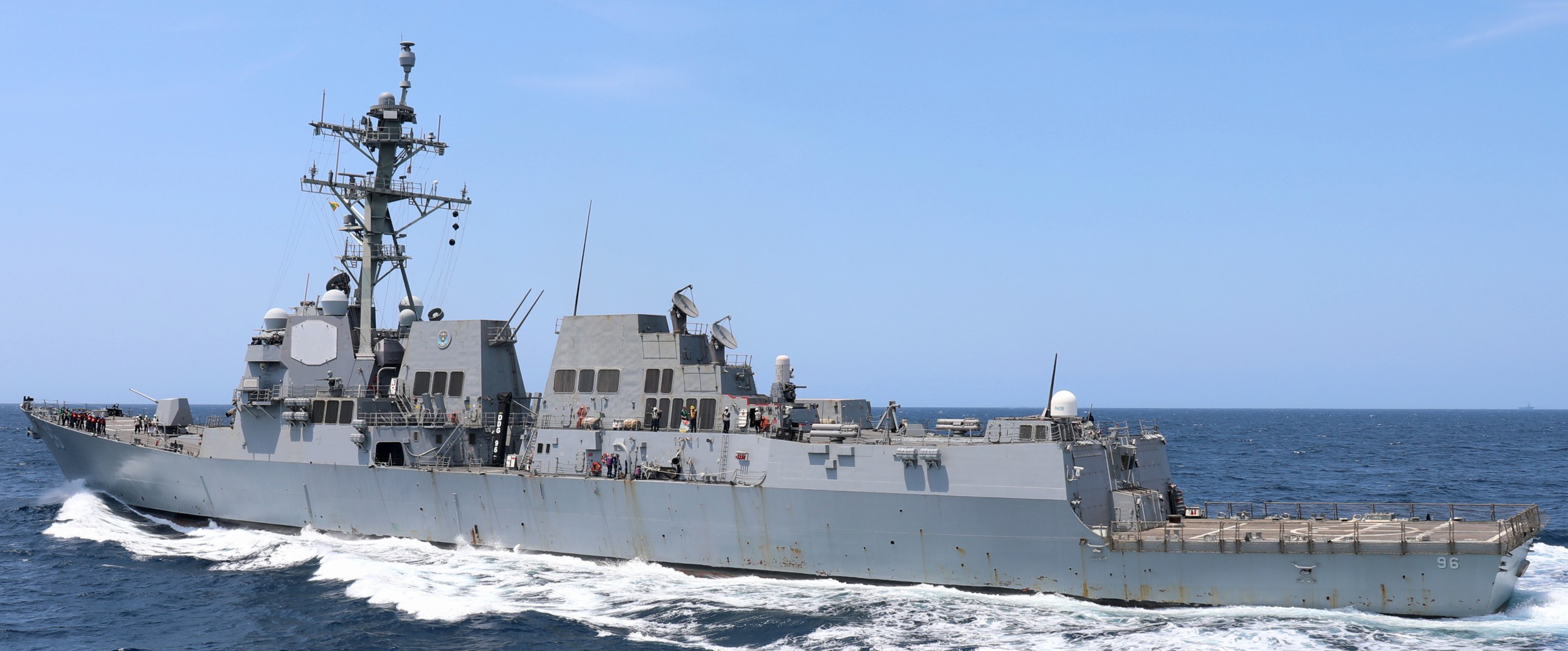 Atlantic Ocean - July 2021 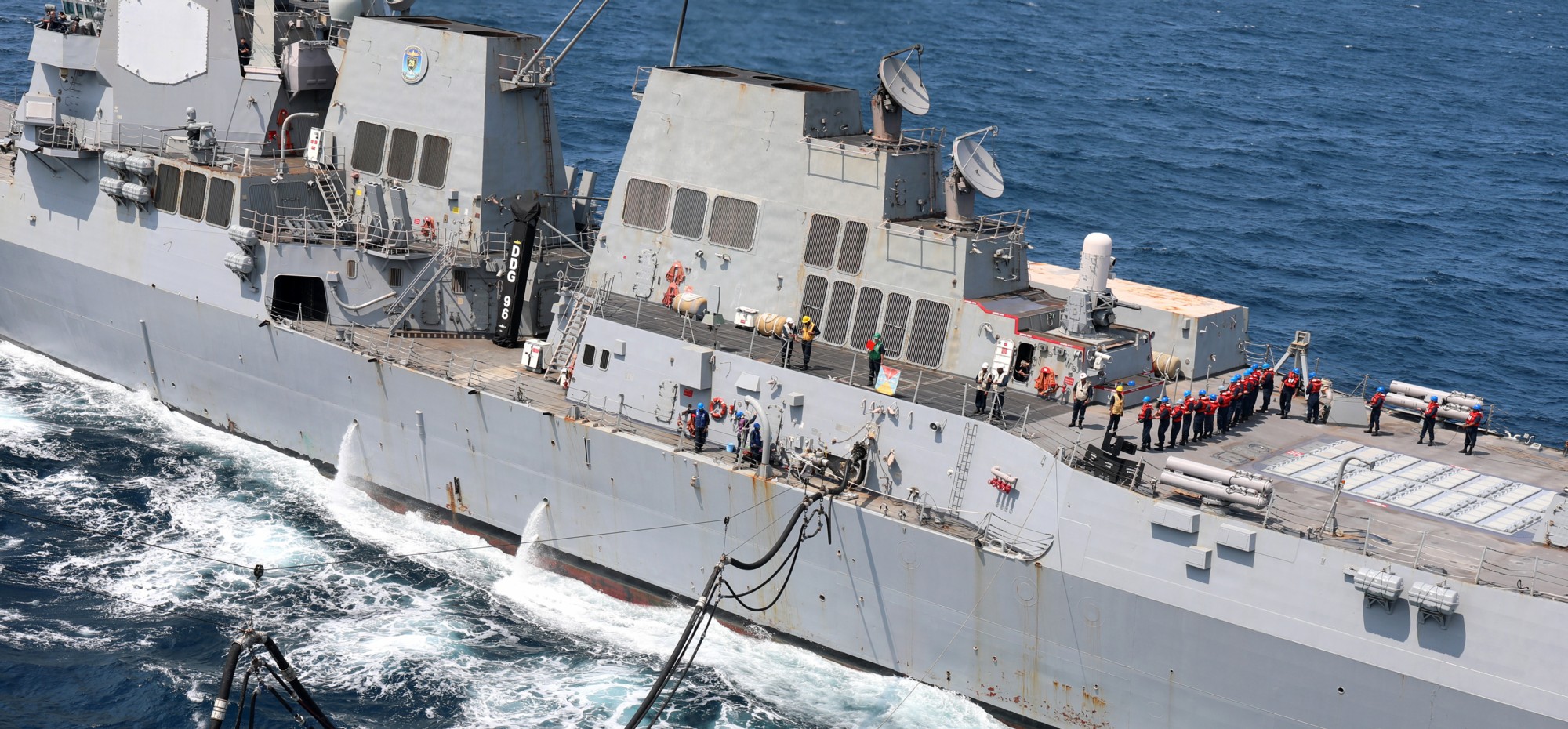 Atlantic Ocean - July 2021 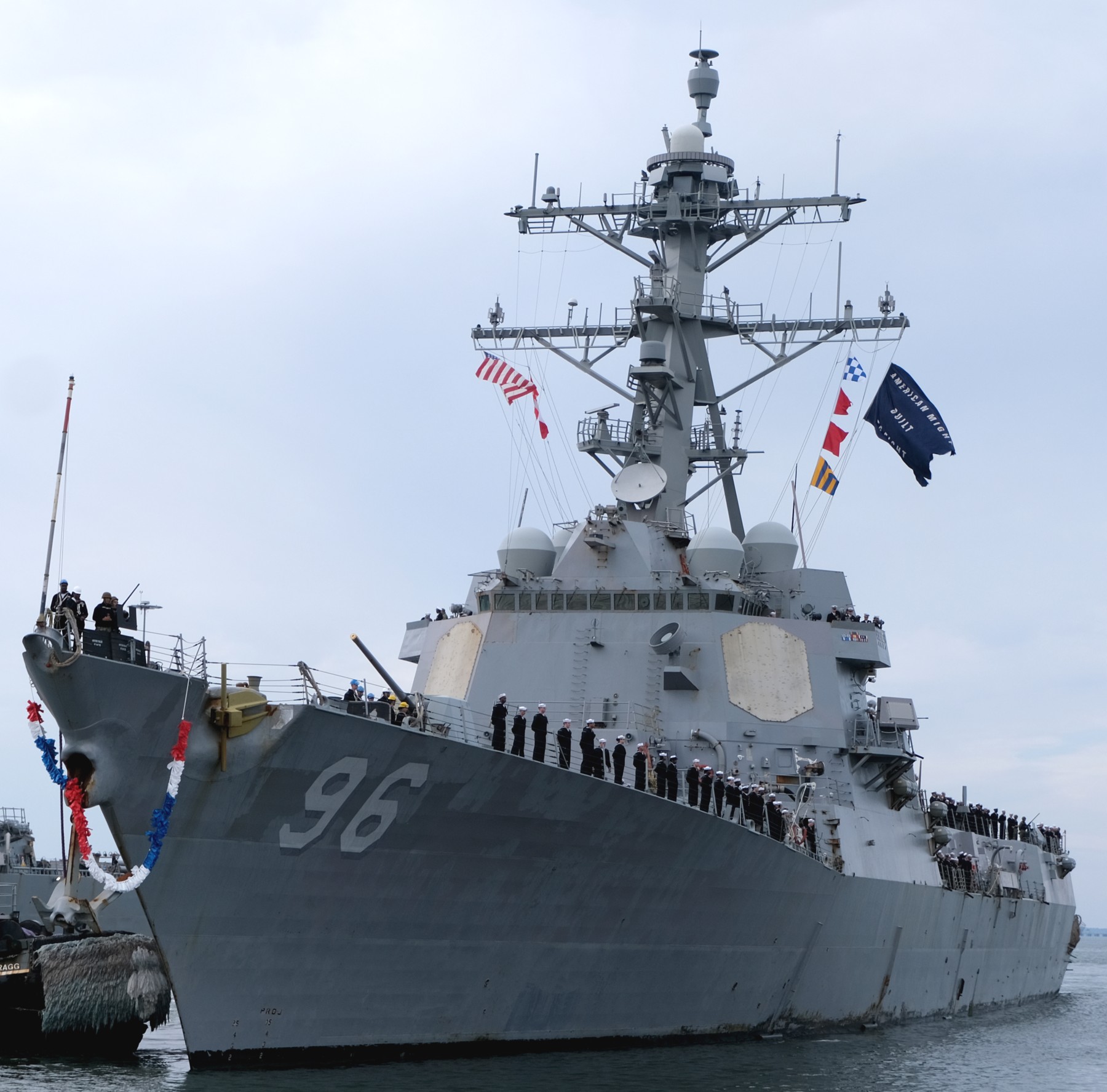 returning to Naval Station Norfolk, Virginia - November 5, 2019 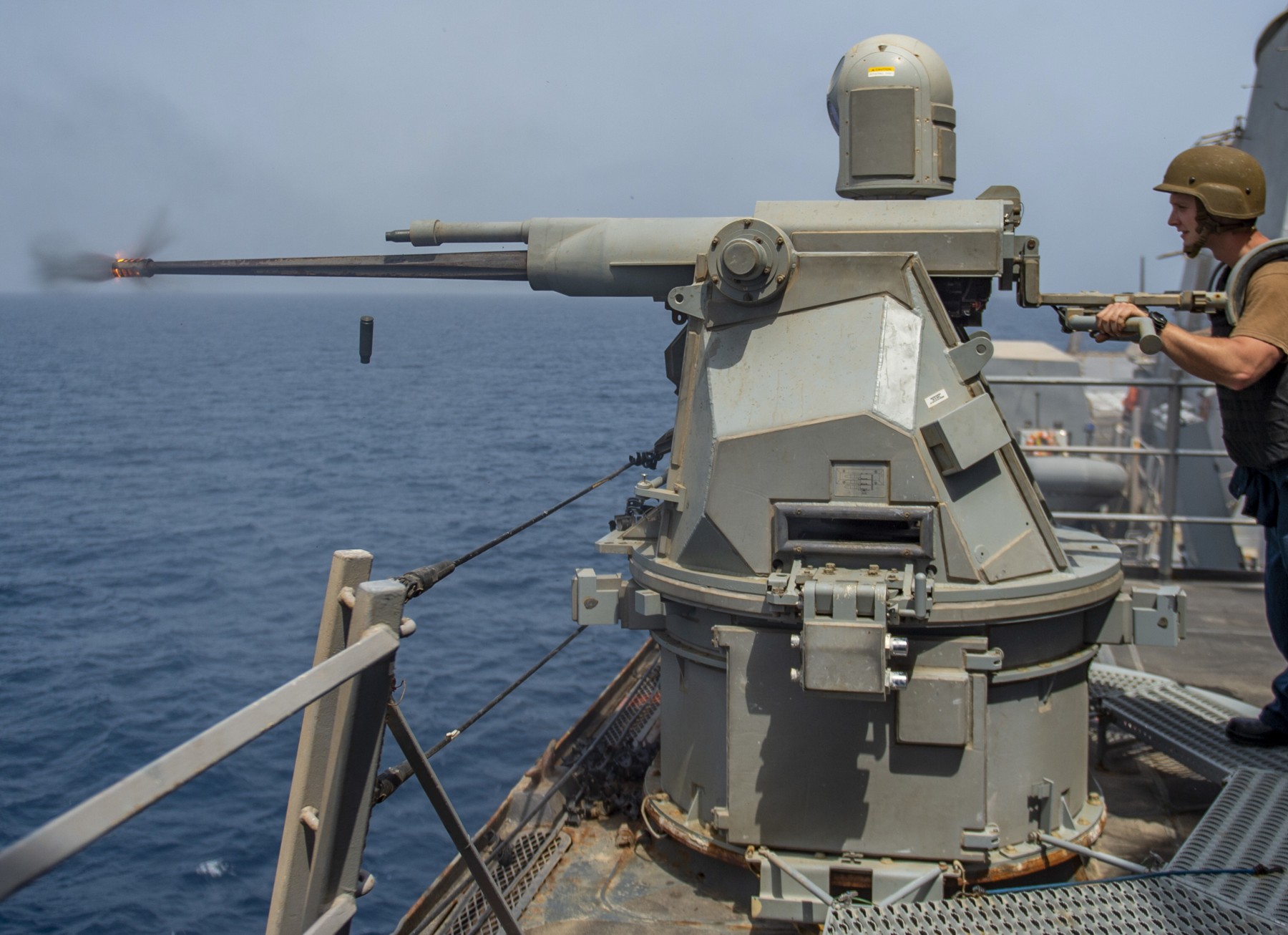 Mk.38 Mod.2 machine gun fire in manual use - Arabian Sea - July 2019 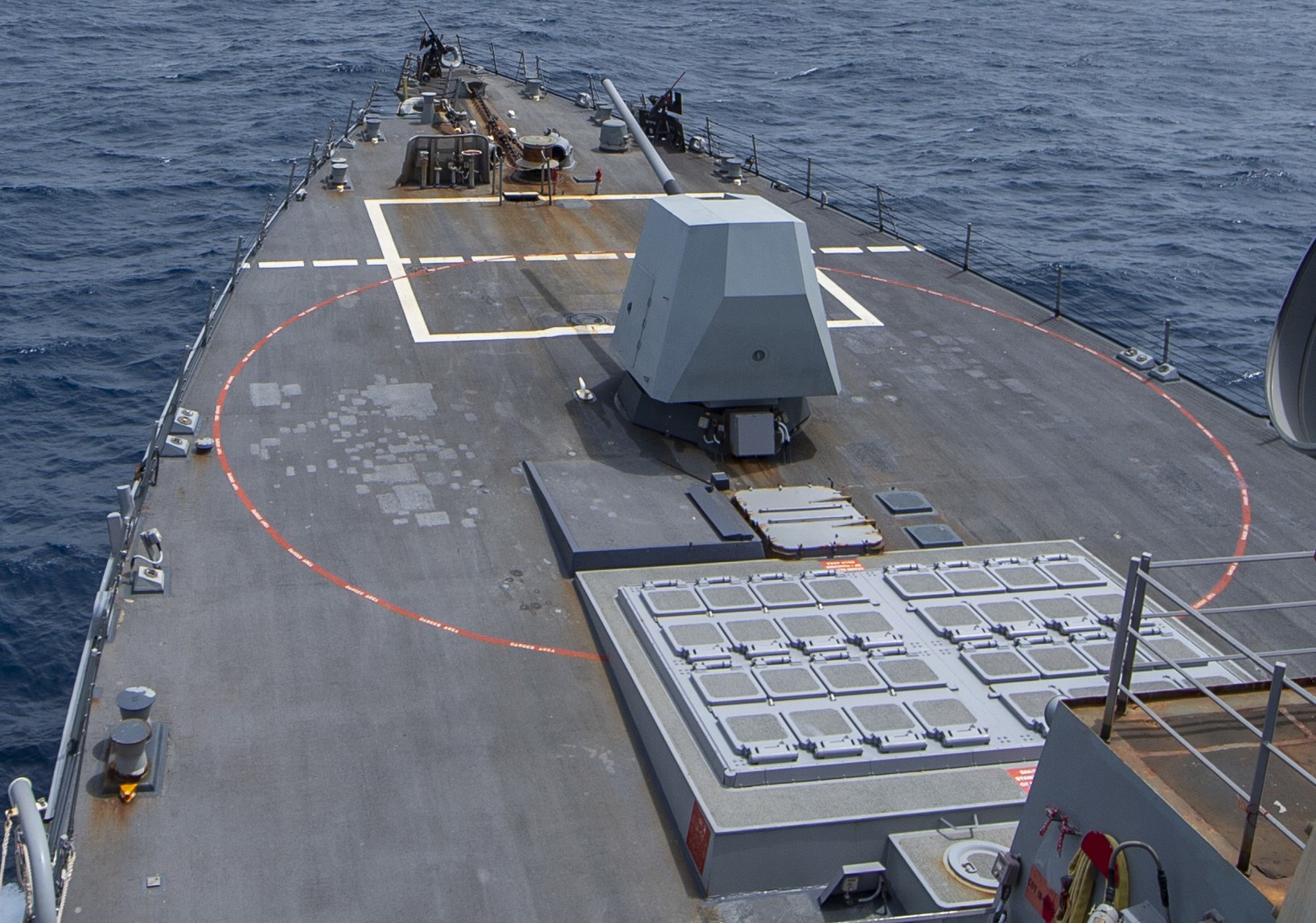 Arabian Sea - June 2019 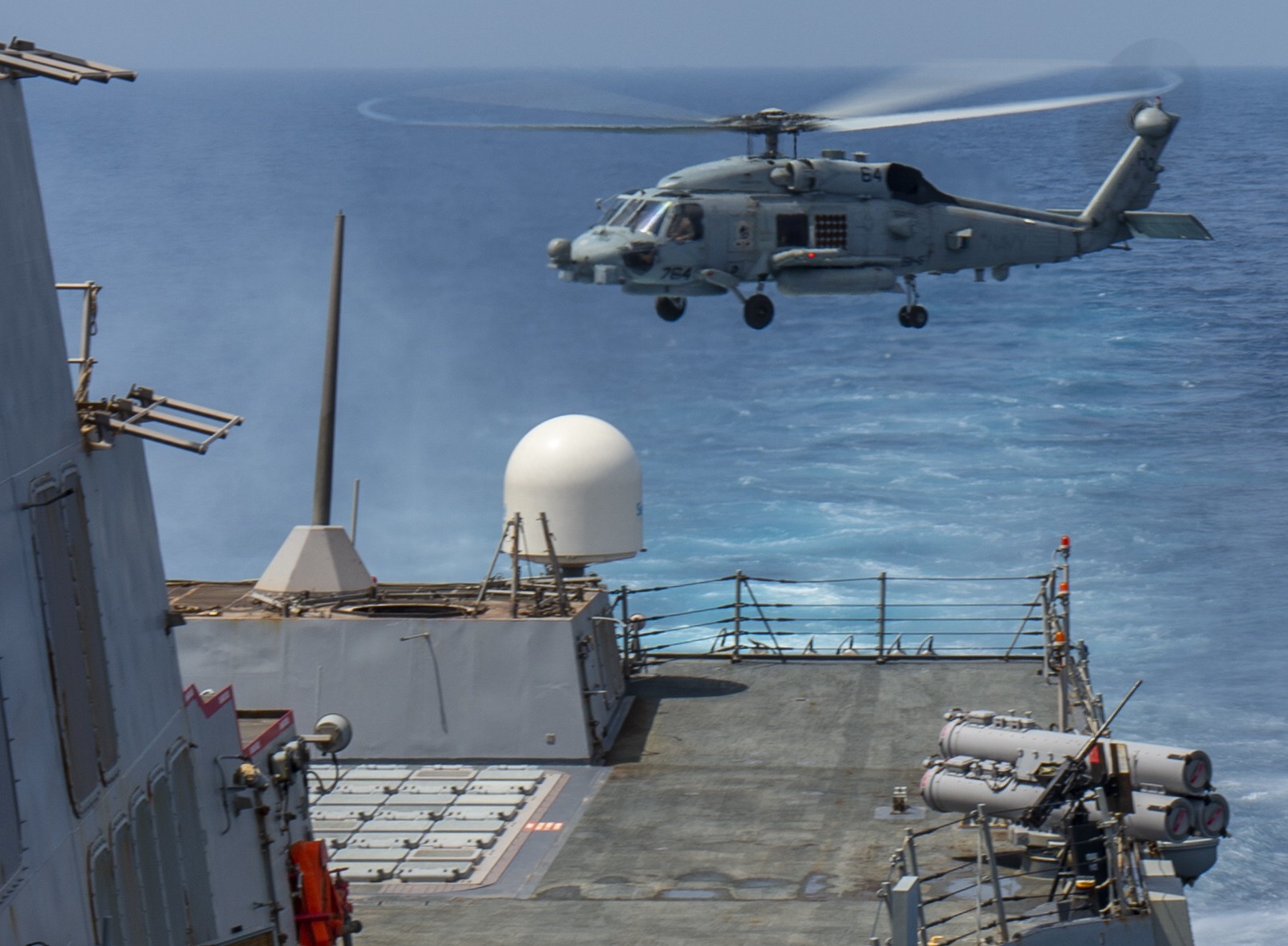 Arabian Sea - May 2019 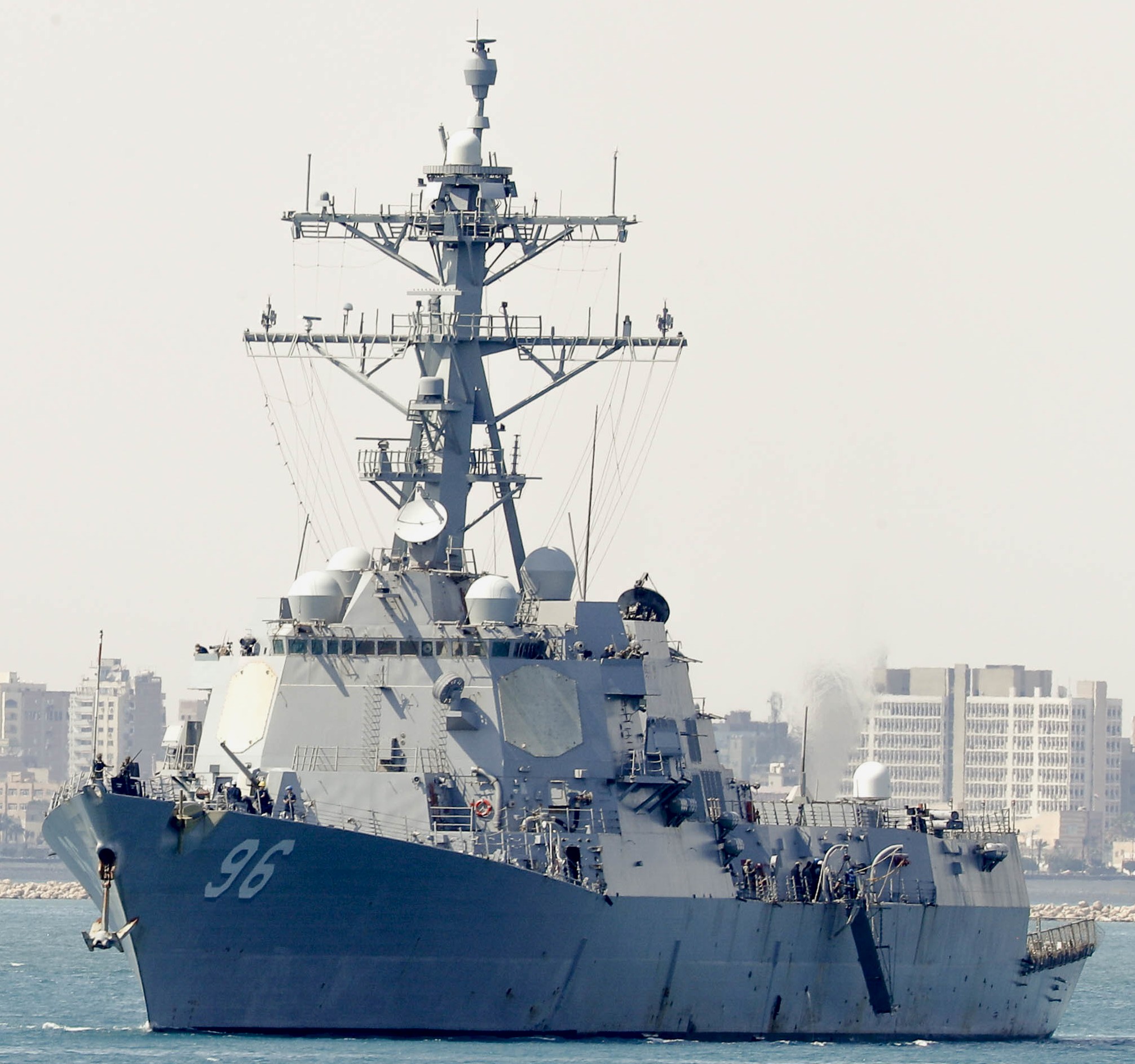 Suez Canal - May 9, 2019 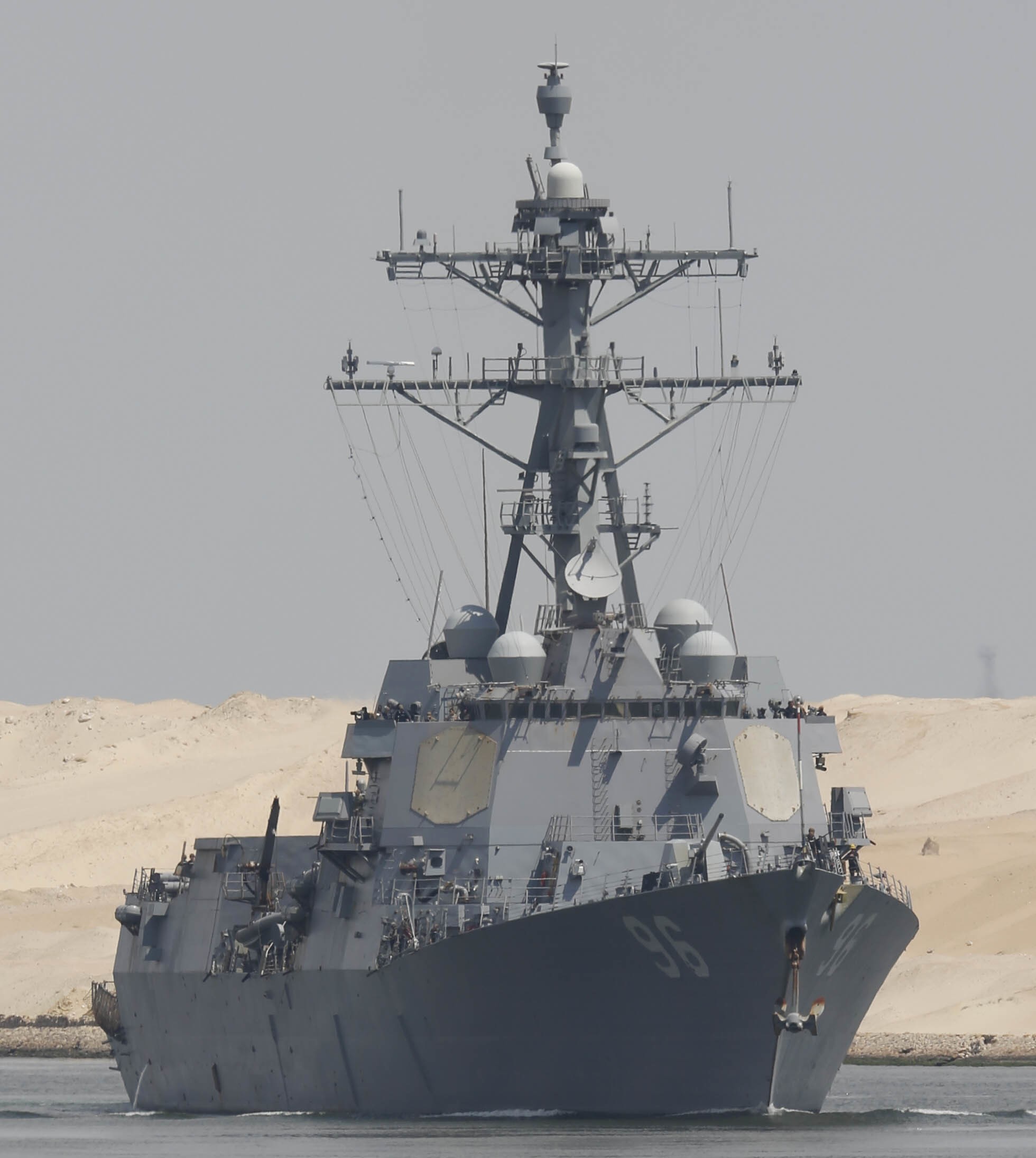 Suez Canal - May 9, 2019 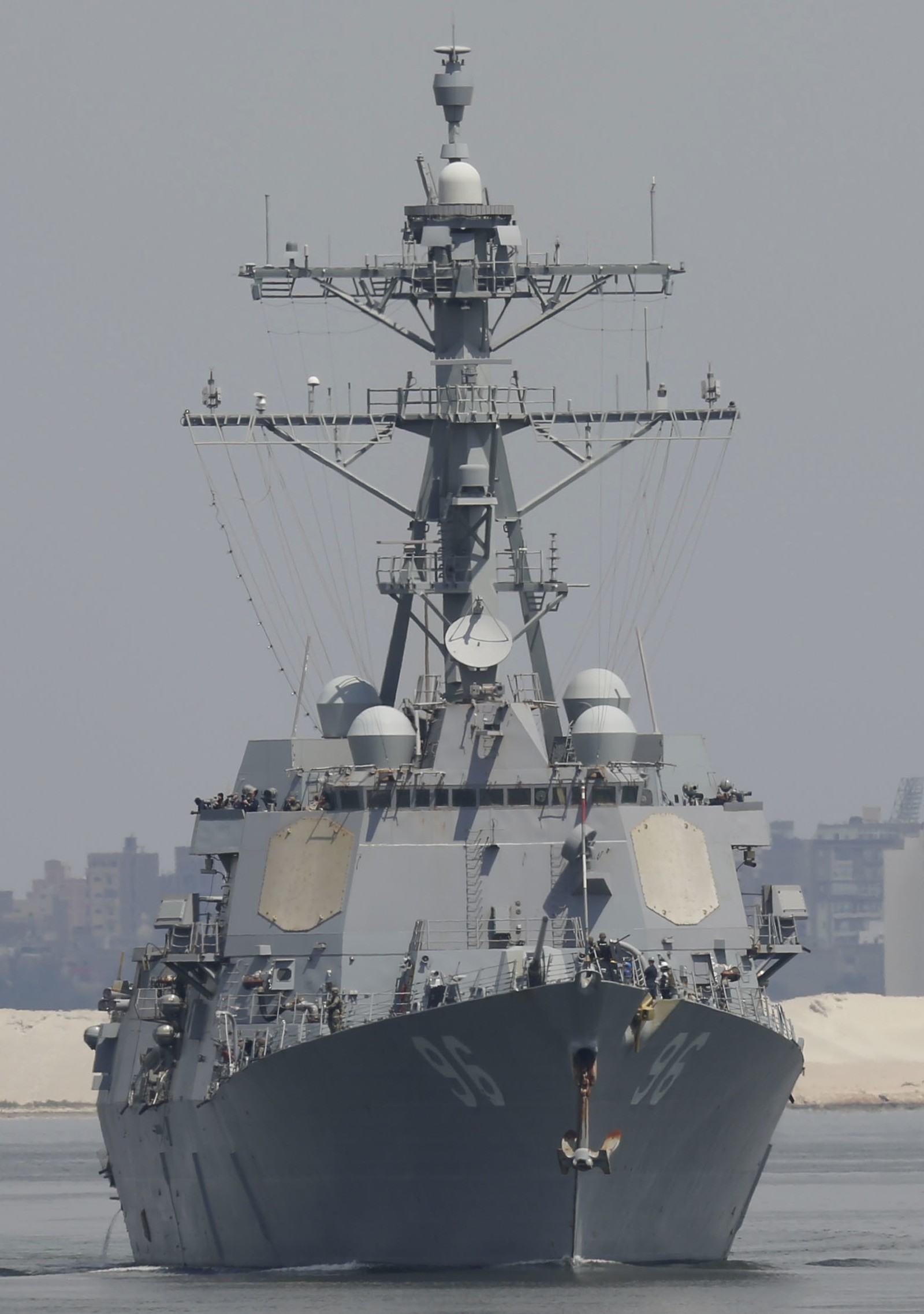 Suez Canal - May 9, 2019 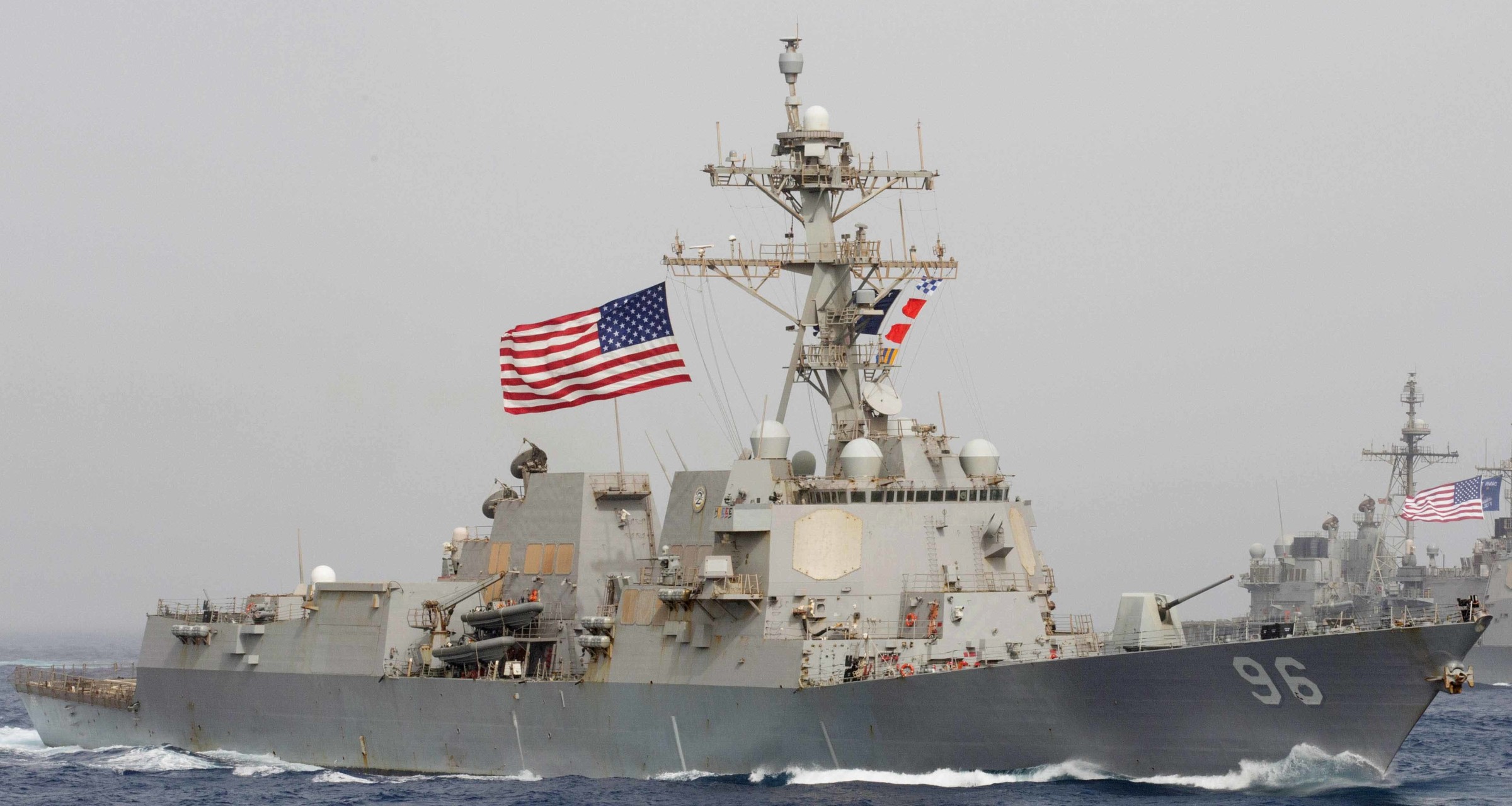 Mediterranean Sea - April 2019 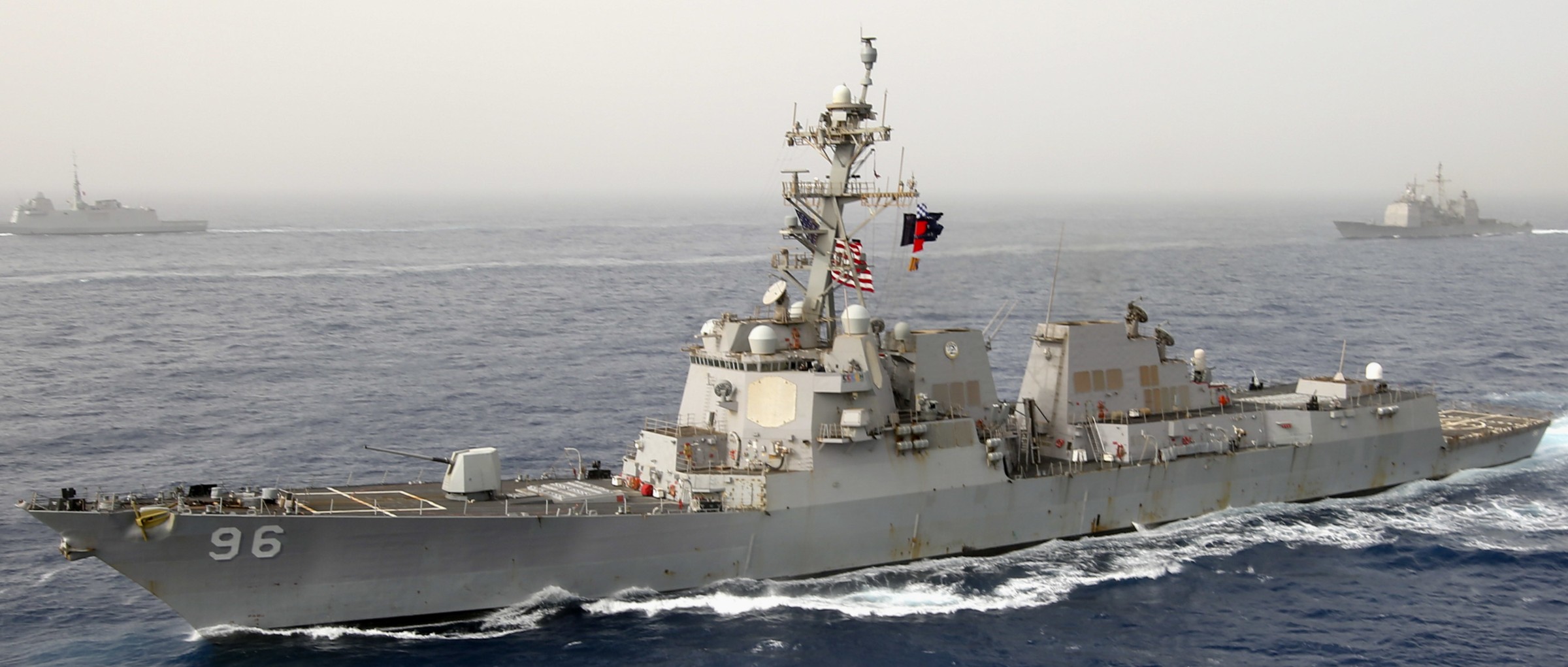 Mediterranean Sea - April 2019 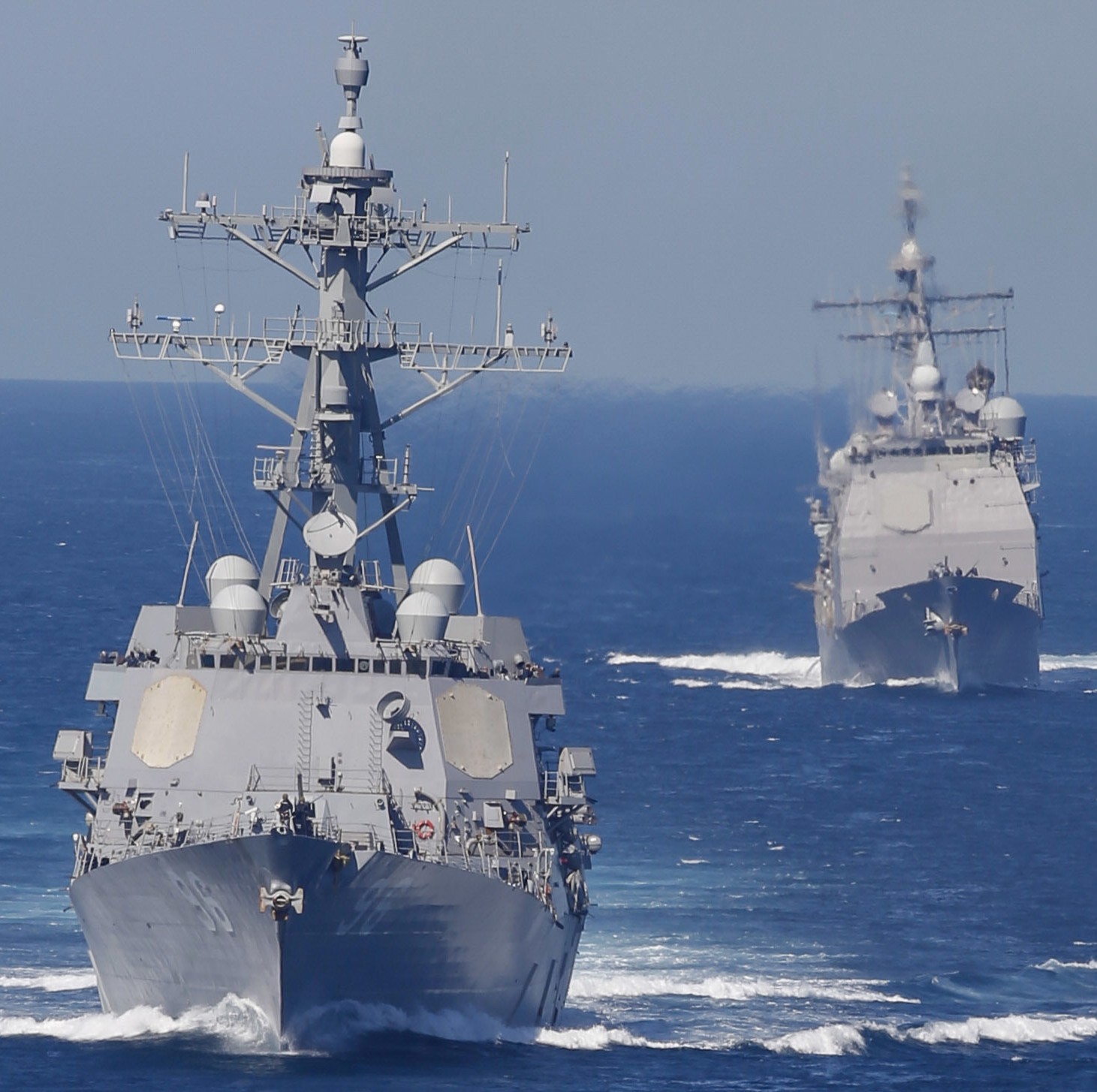 Strait of Gibraltar - April 13, 2019 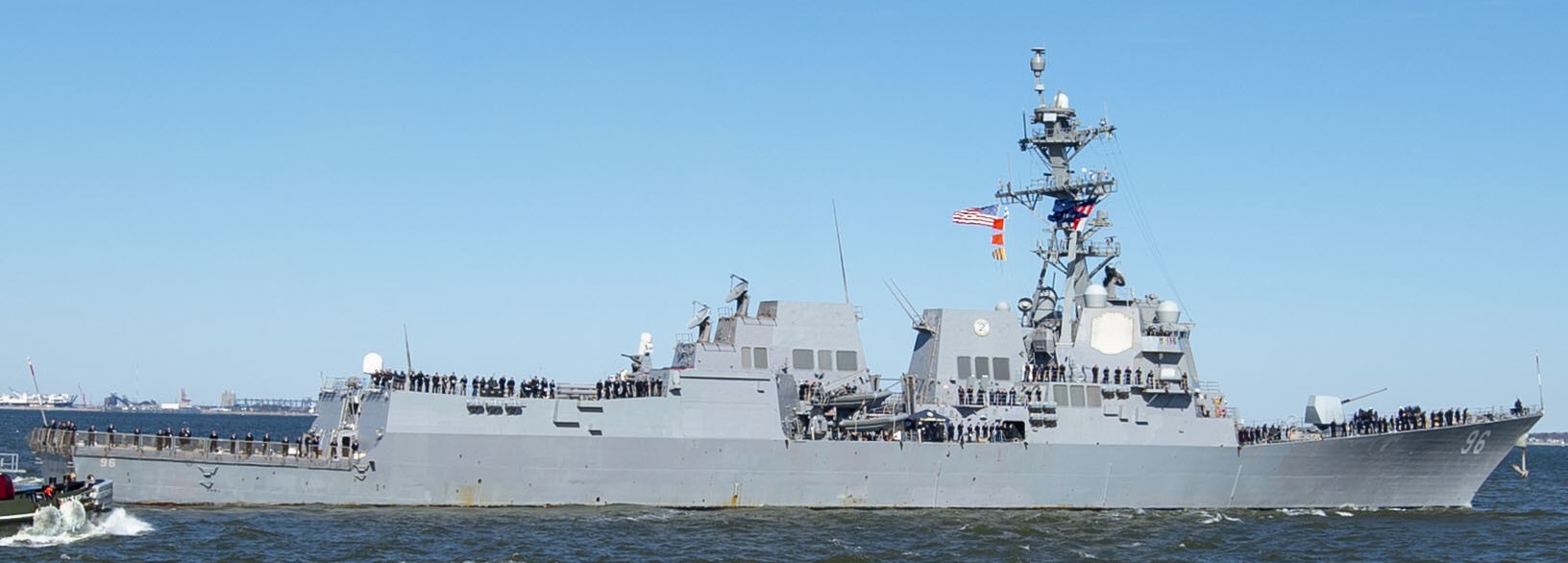 departing Naval Station Norfolk, Virginia for a scheduled deployment - April 1, 2019 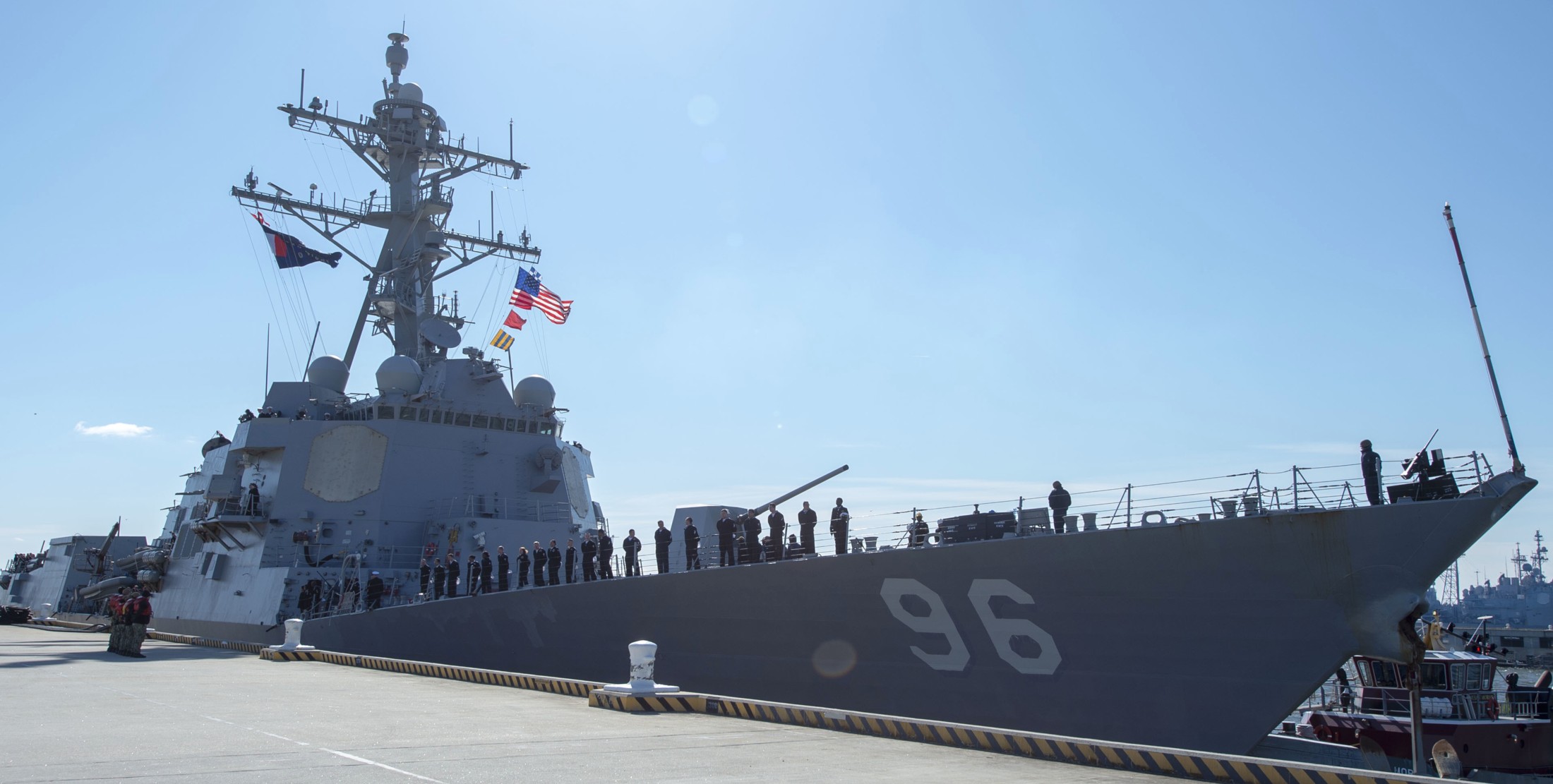 departing Naval Station Norfolk, Virginia for a scheduled deployment - April 1, 2019 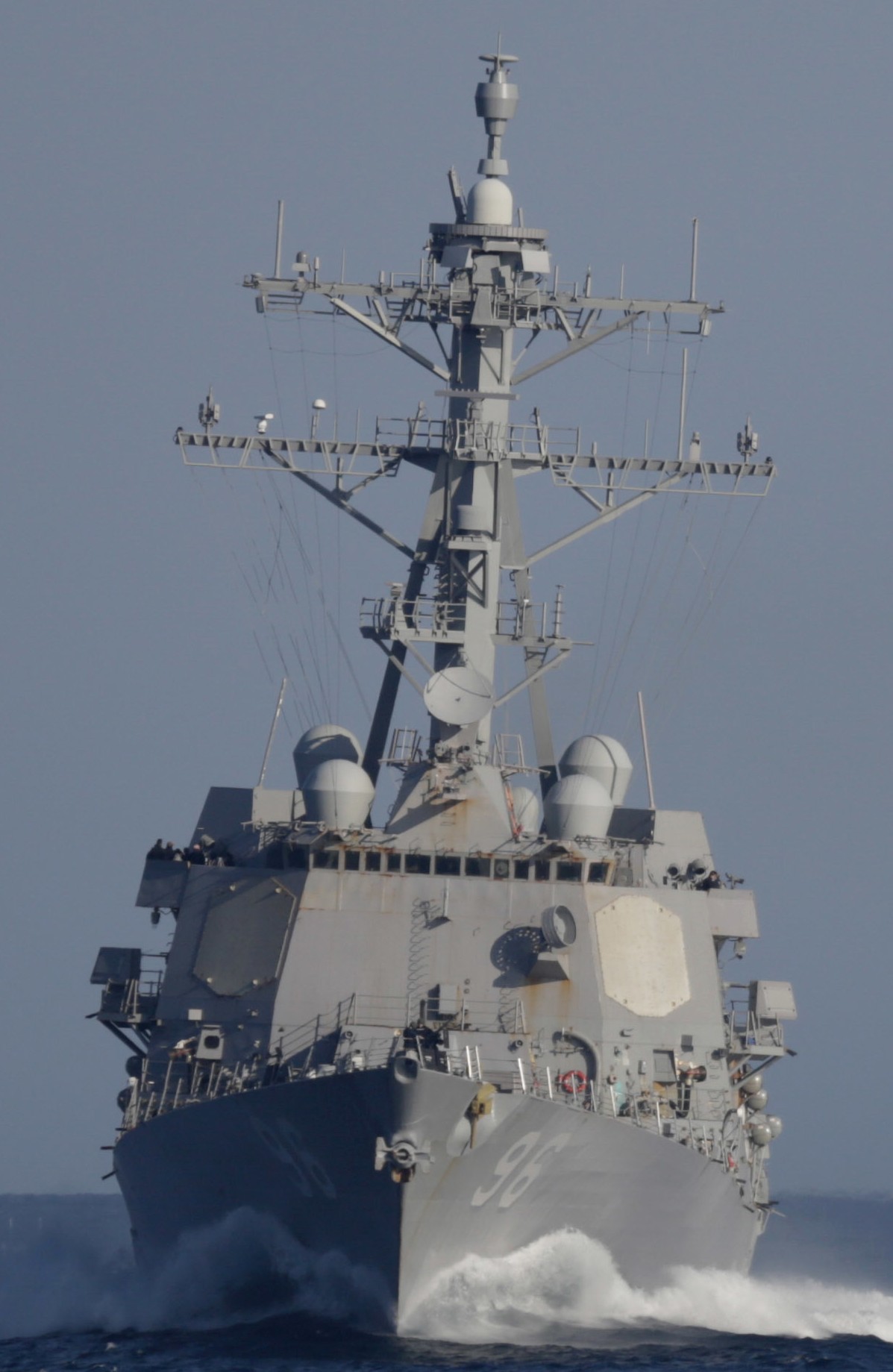 Atlantic Ocean - February 2019 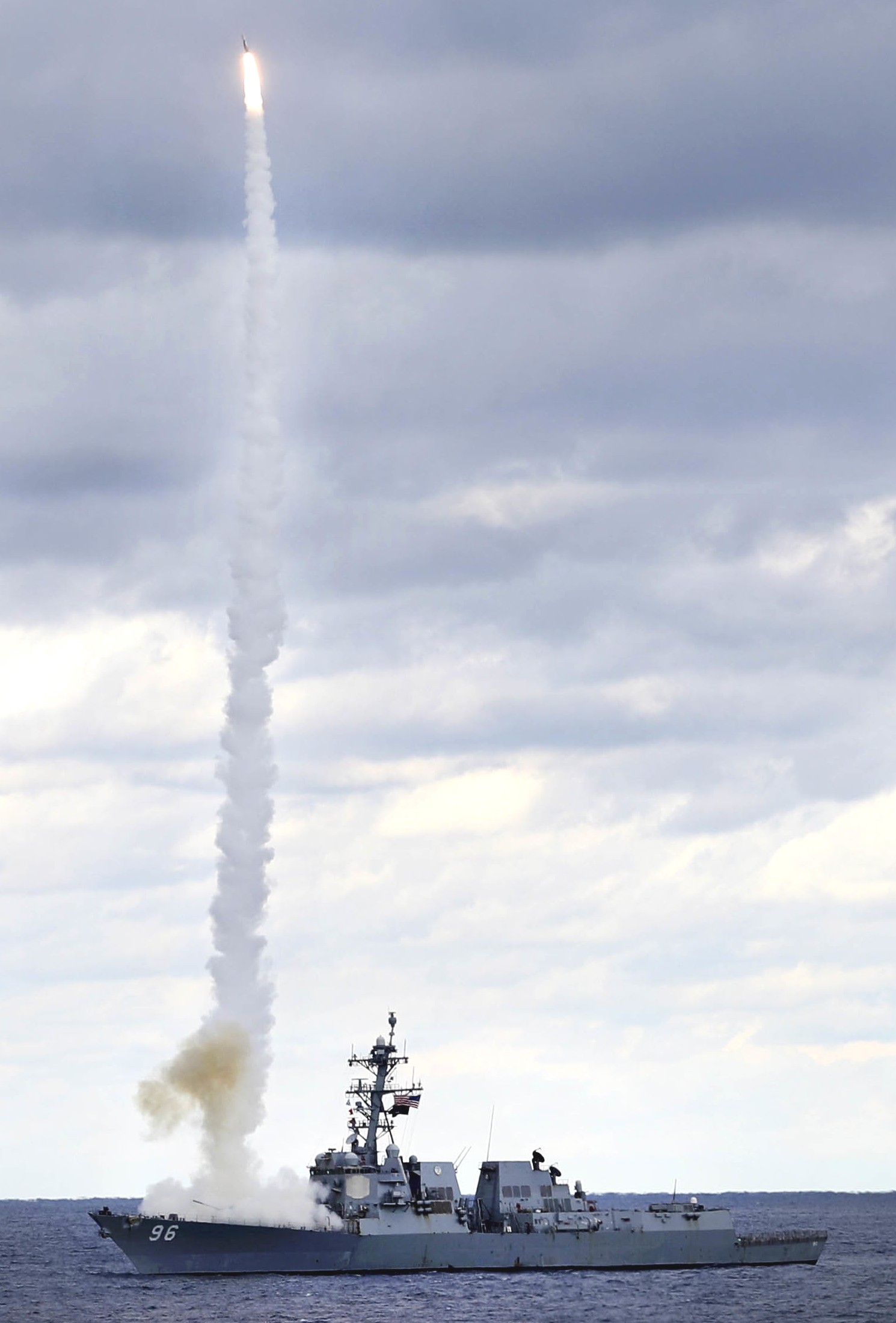 launching a Standard Missile SM-2MR Block IIIA - Atlantic Ocean - November 2018 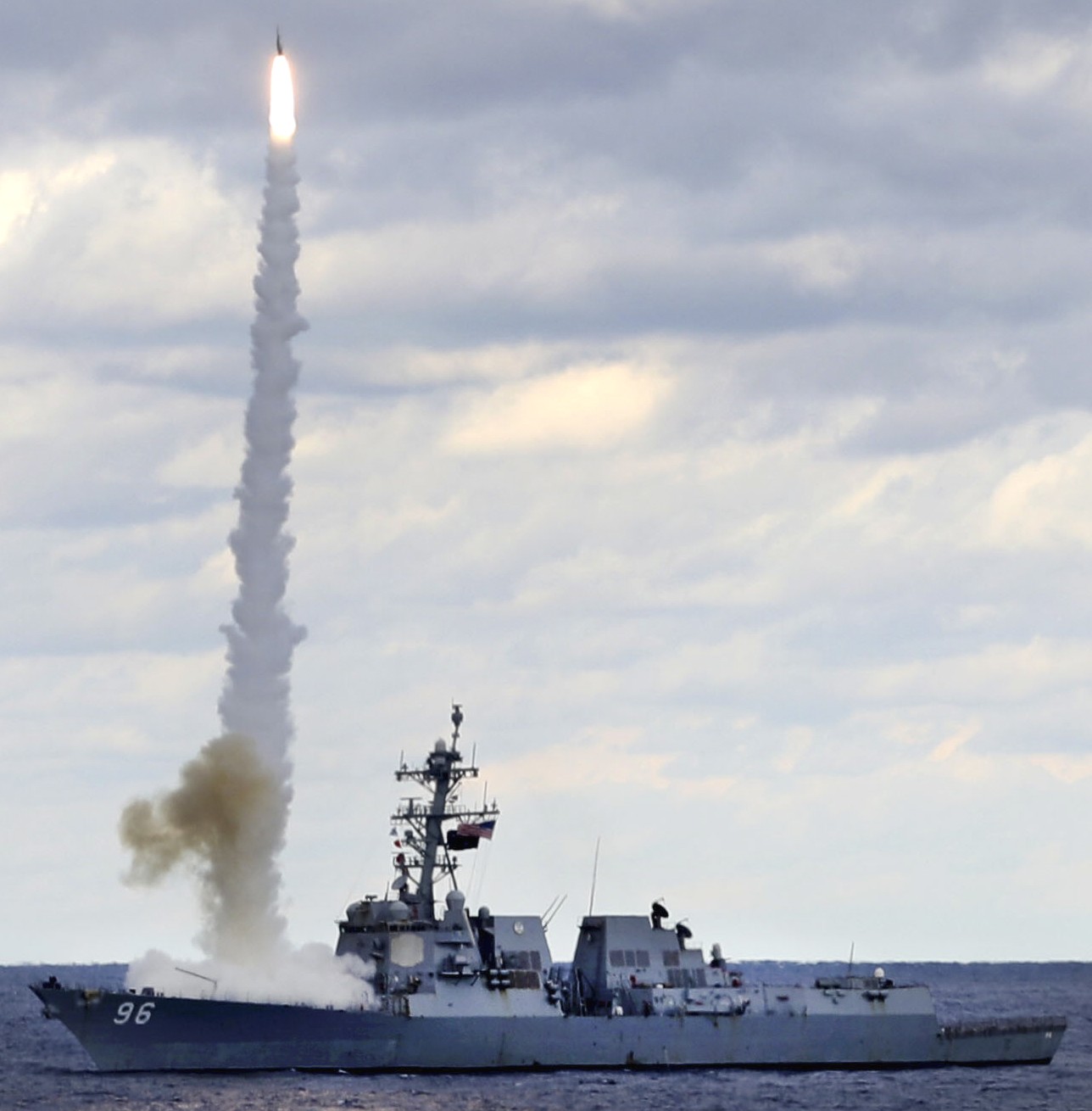 launching a Standard Missile SM-2MR Block IIIA - Atlantic Ocean - November 2018 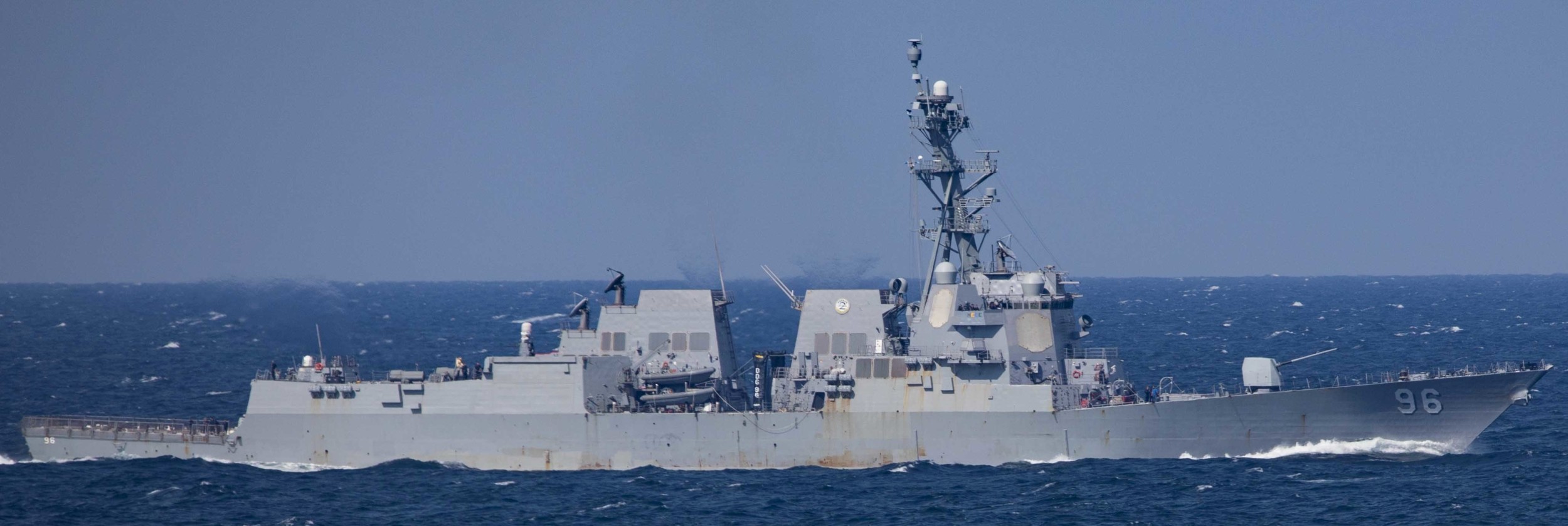 Atlantic Ocean - October 2018 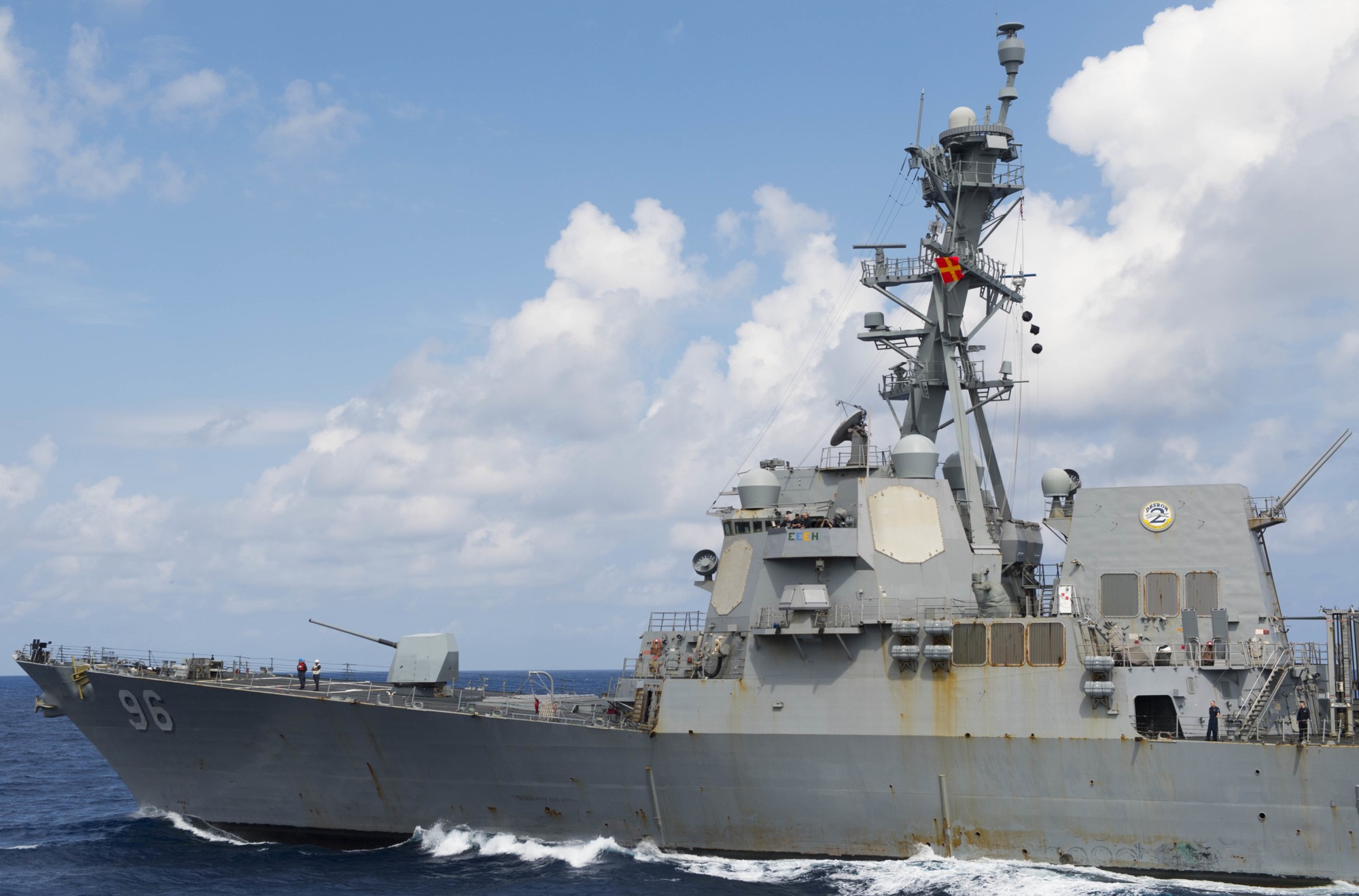 Atlantic Ocean - July 2018 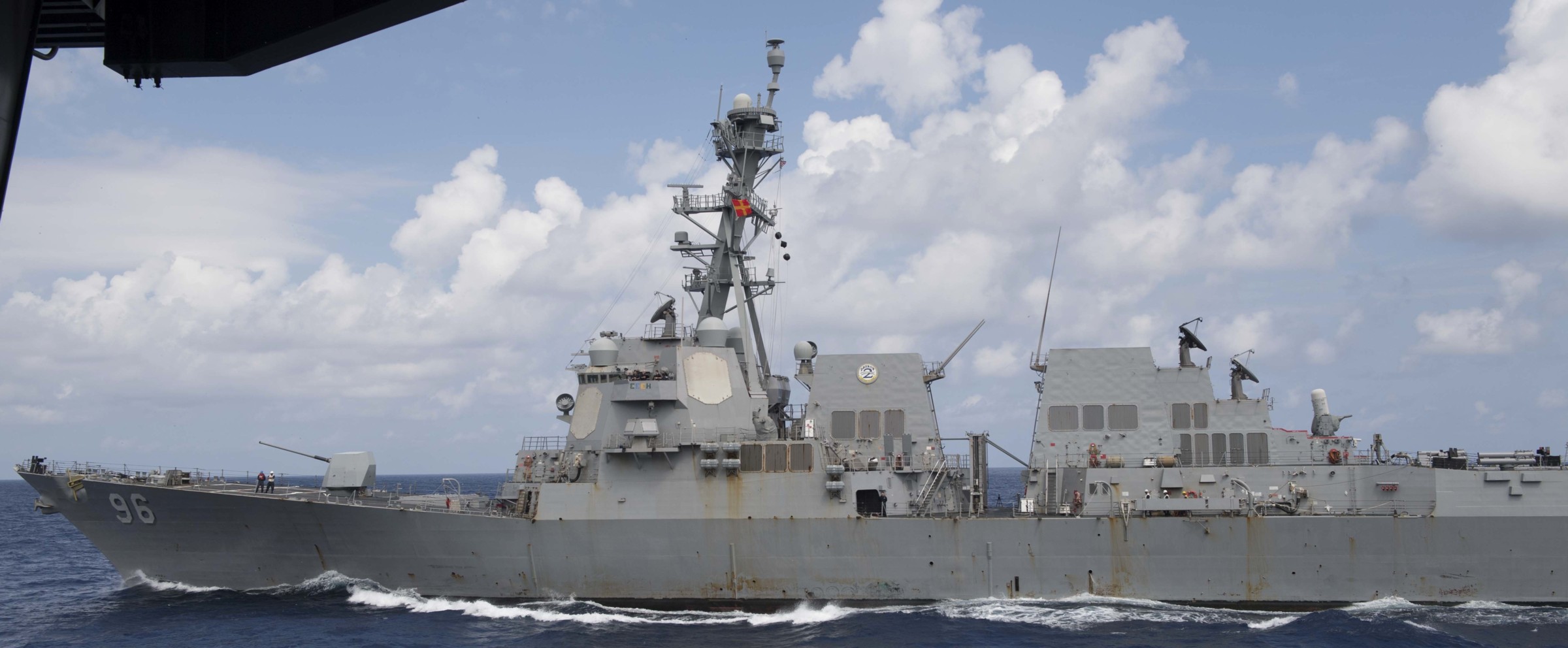 Atlantic Ocean - July 2018 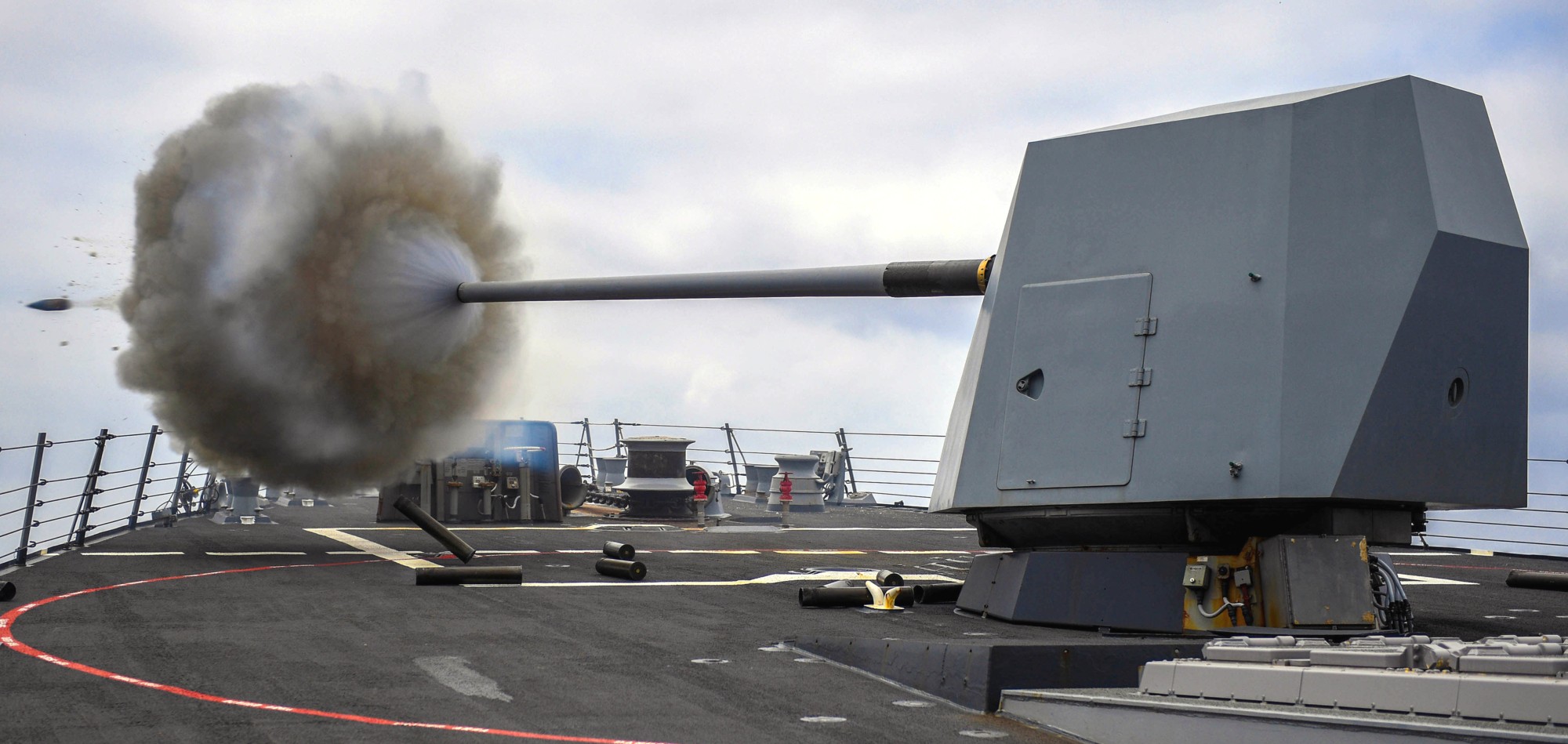 Mk.45 Mod.4 gun fire - Atlantic Ocean - June 2018 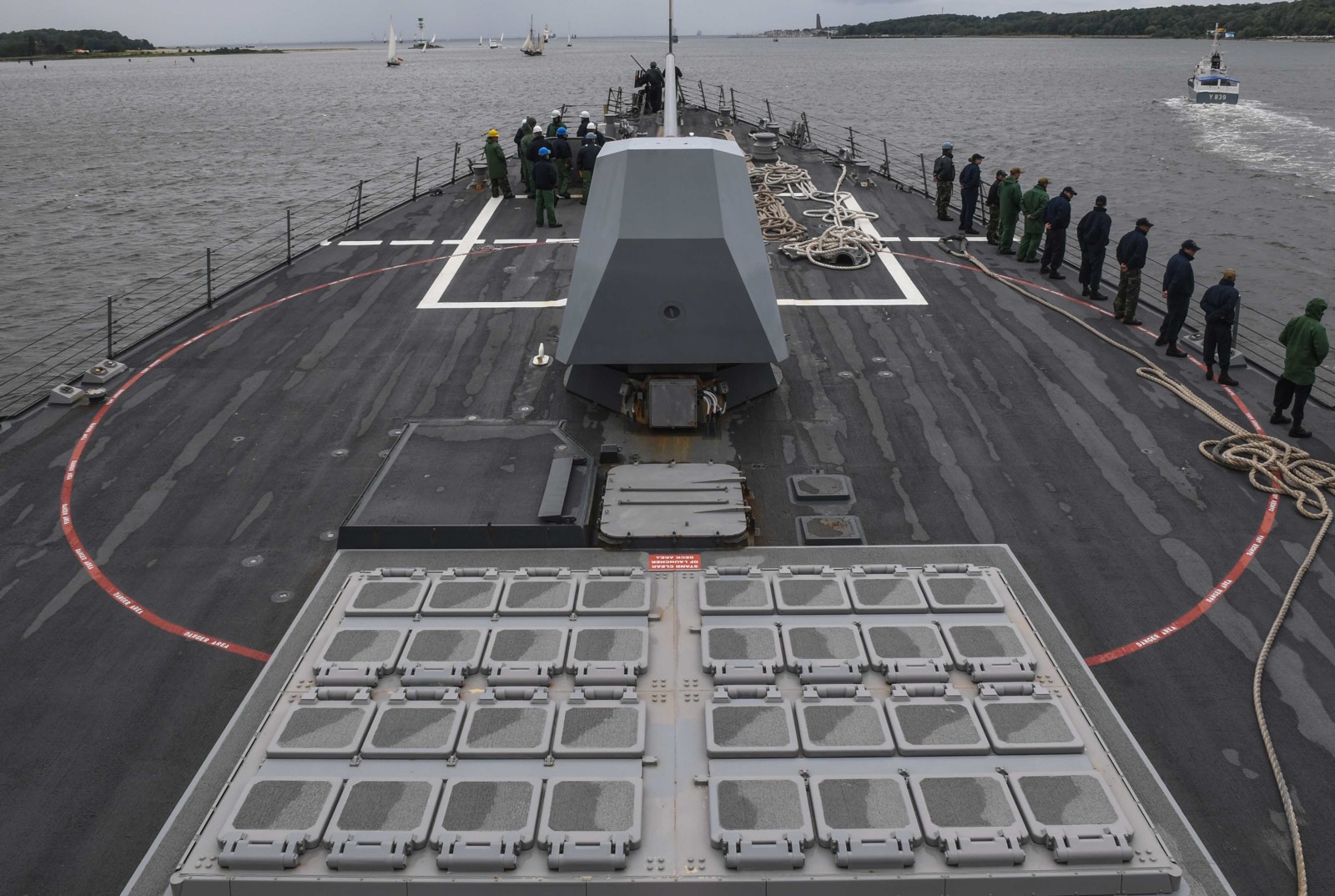 Kiel, Germany - June 2018 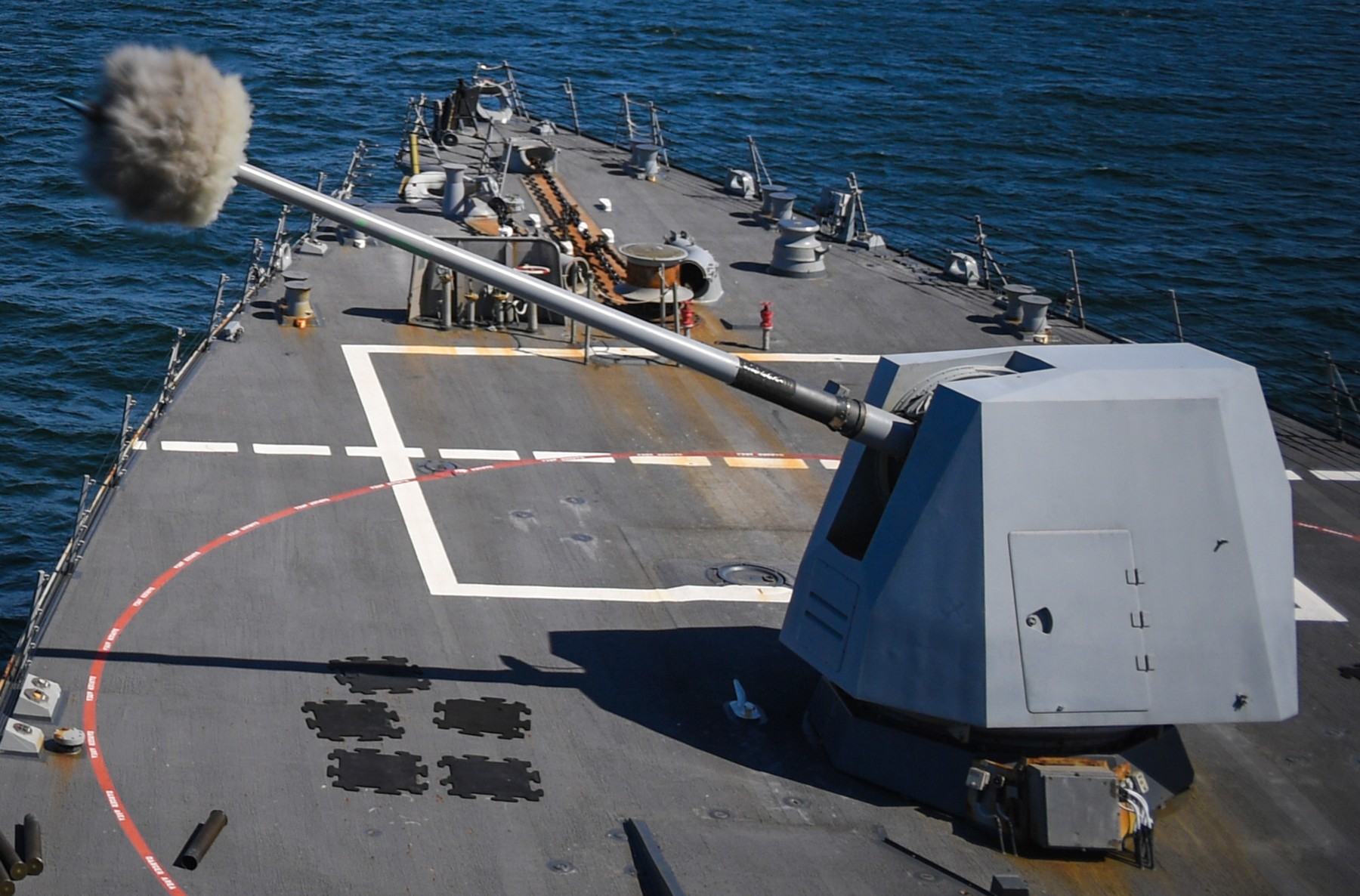 Mk.45 Mod.4 gun fire - Baltic Sea - June 2018 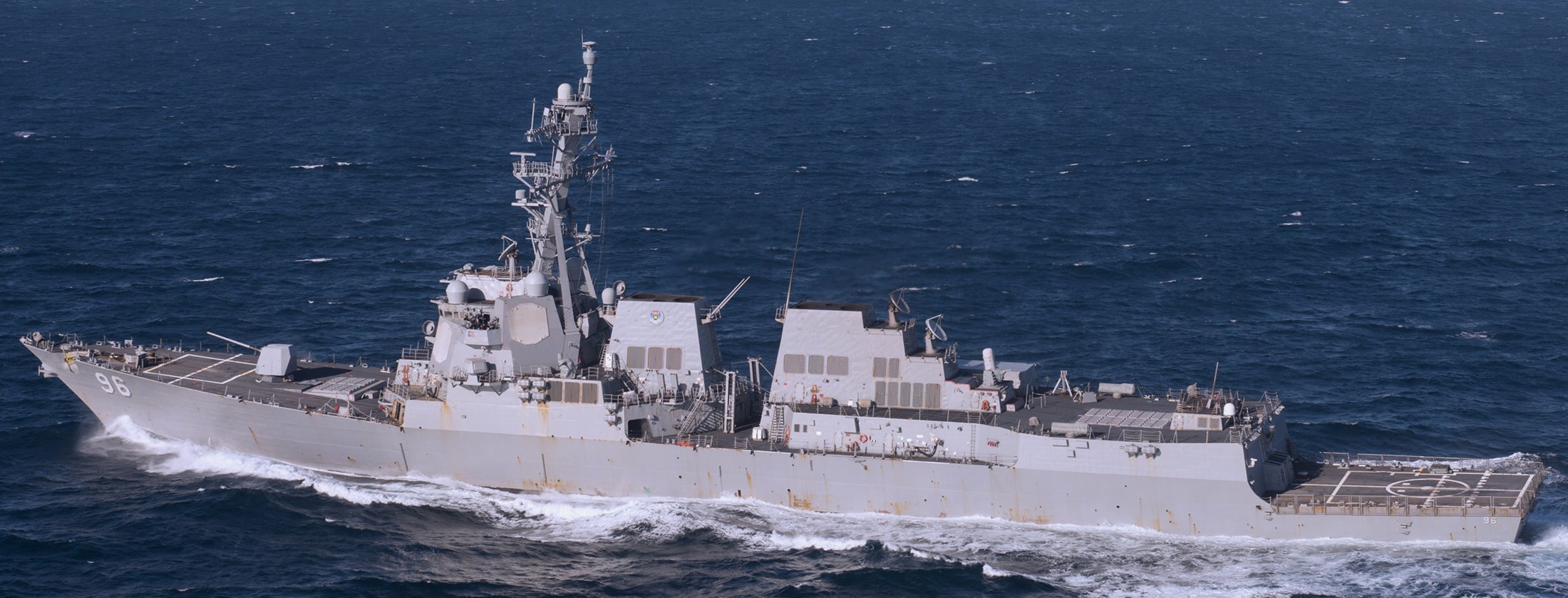 Atlantic Ocean - February 2018 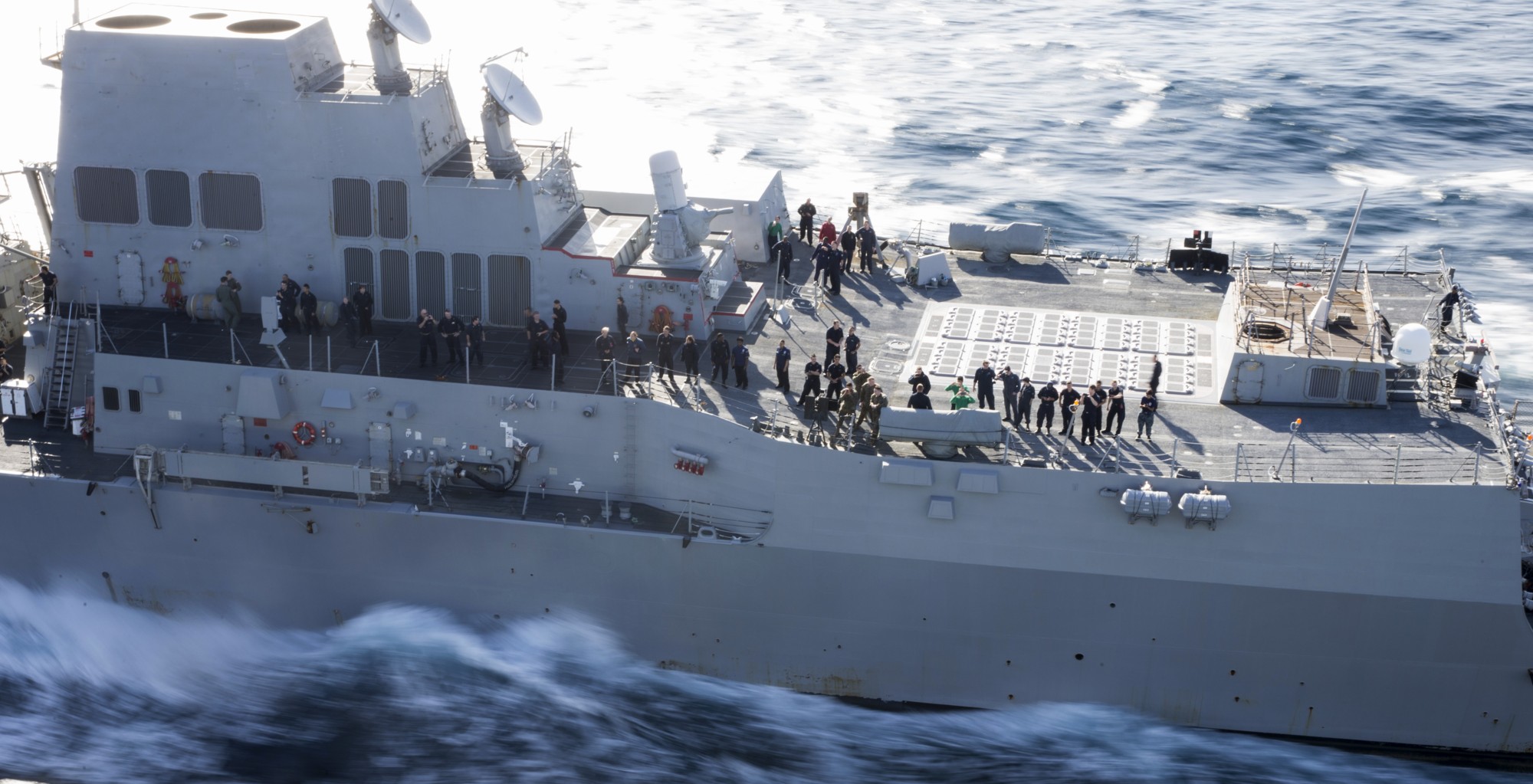 Atlantic Ocean - October 2017 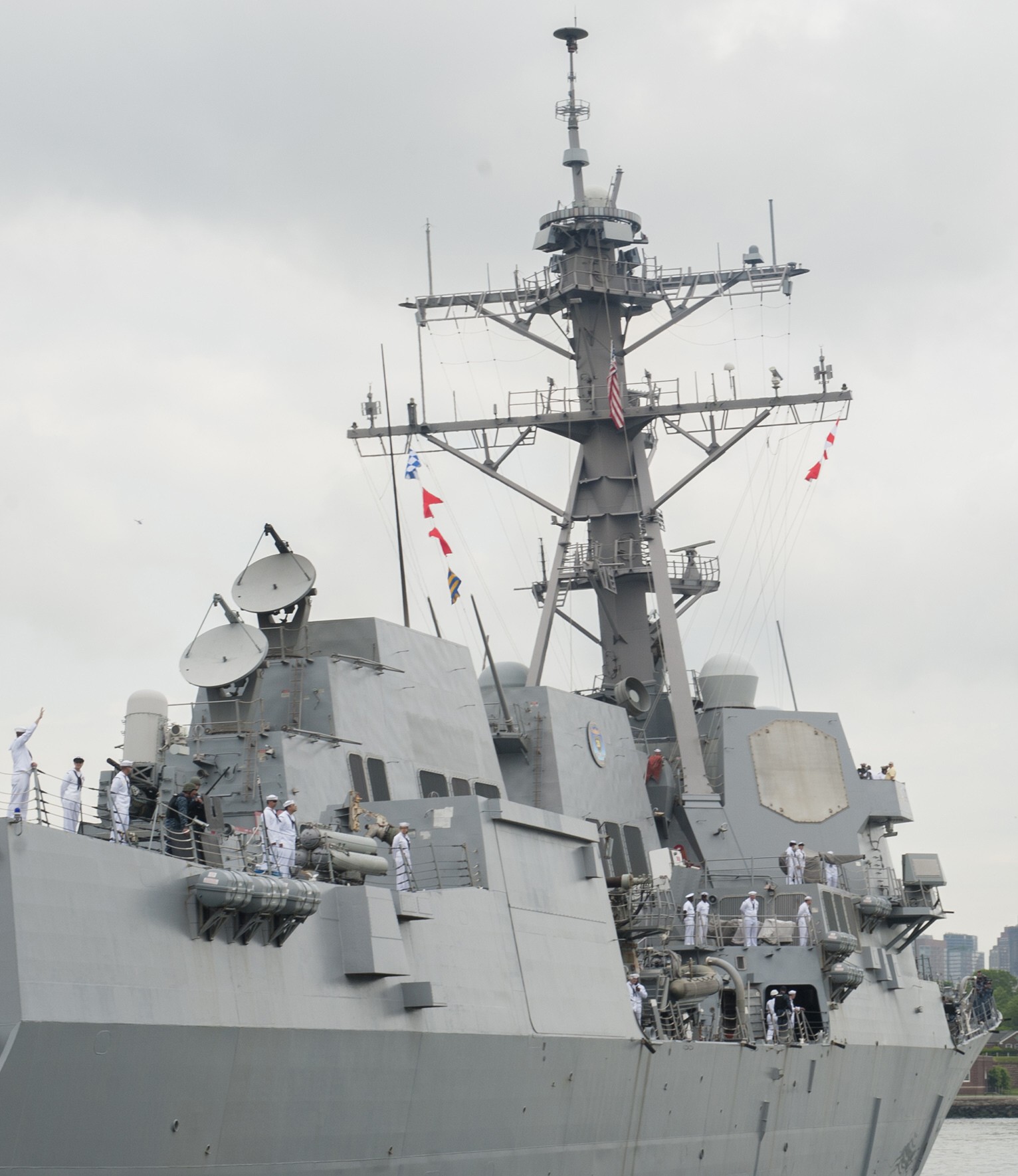 Fleet Week New York - May 2016 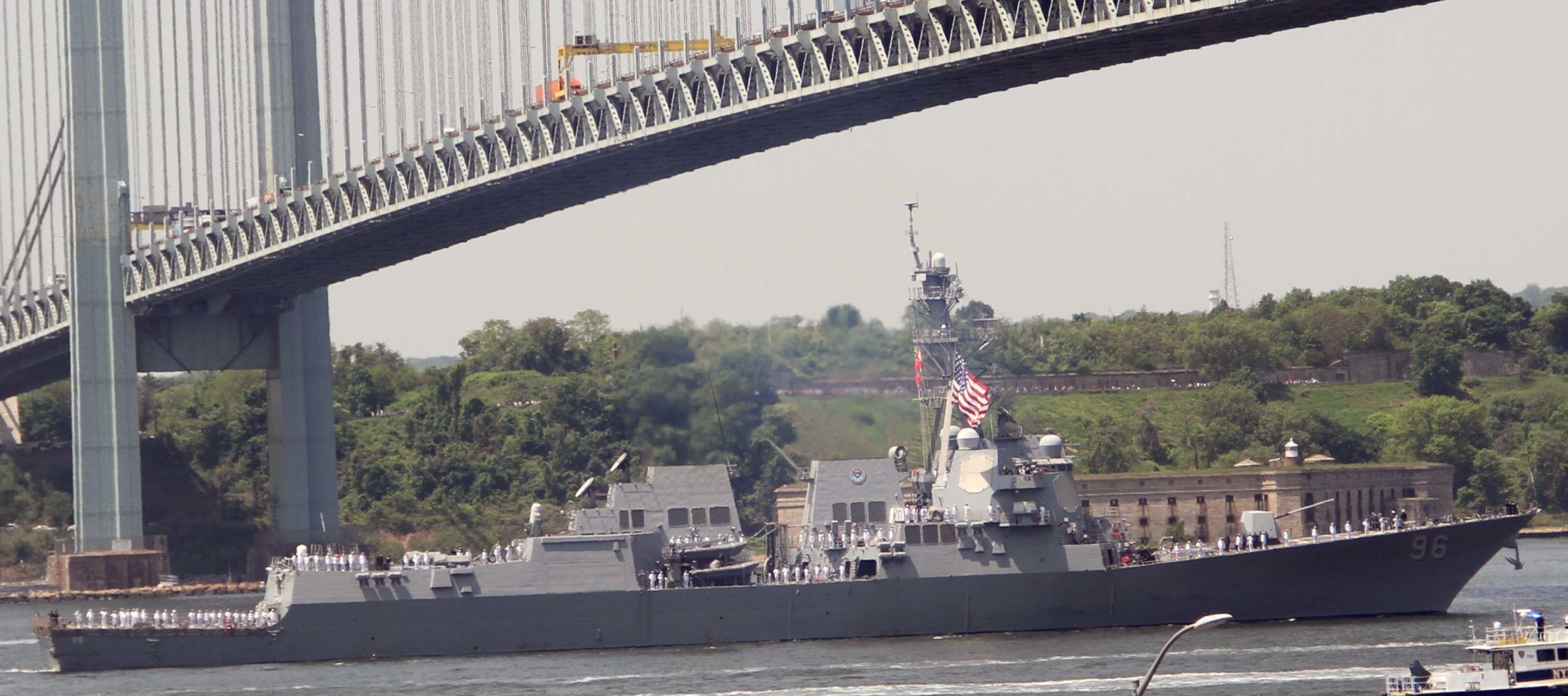 Fleet Week New York - May 2016 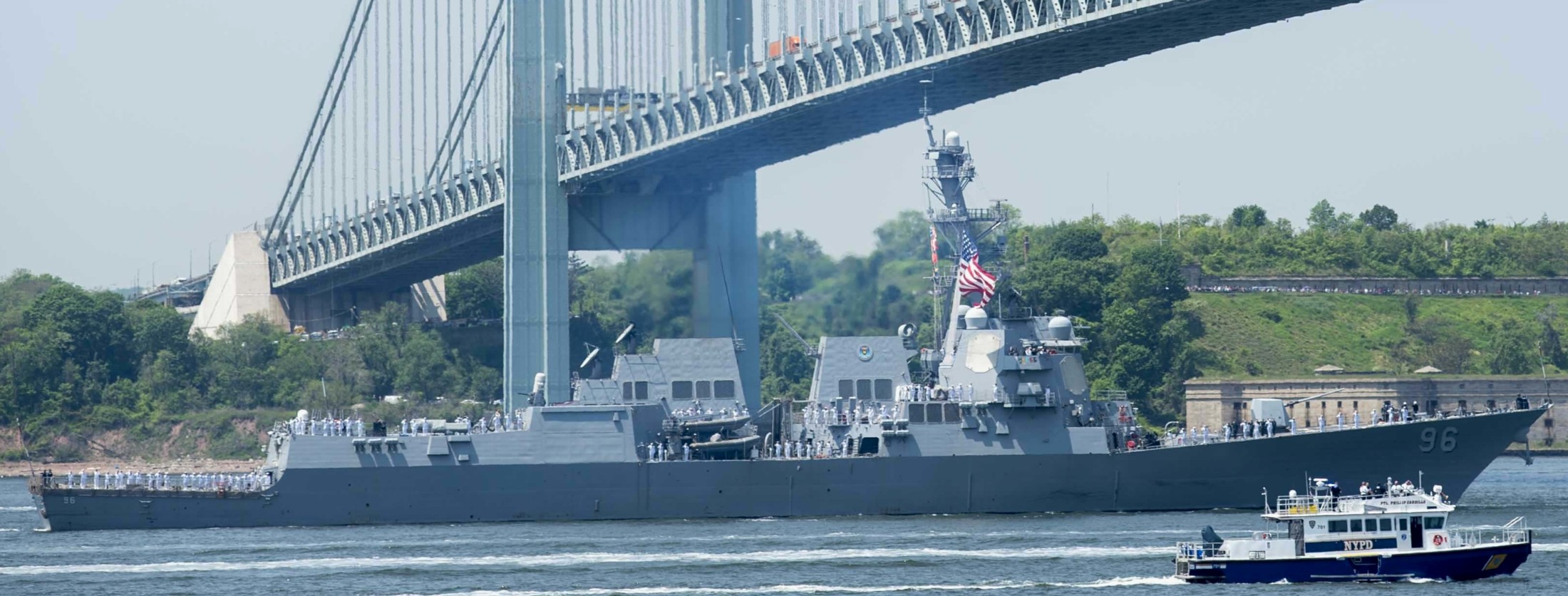 Fleet Week New York - May 2016 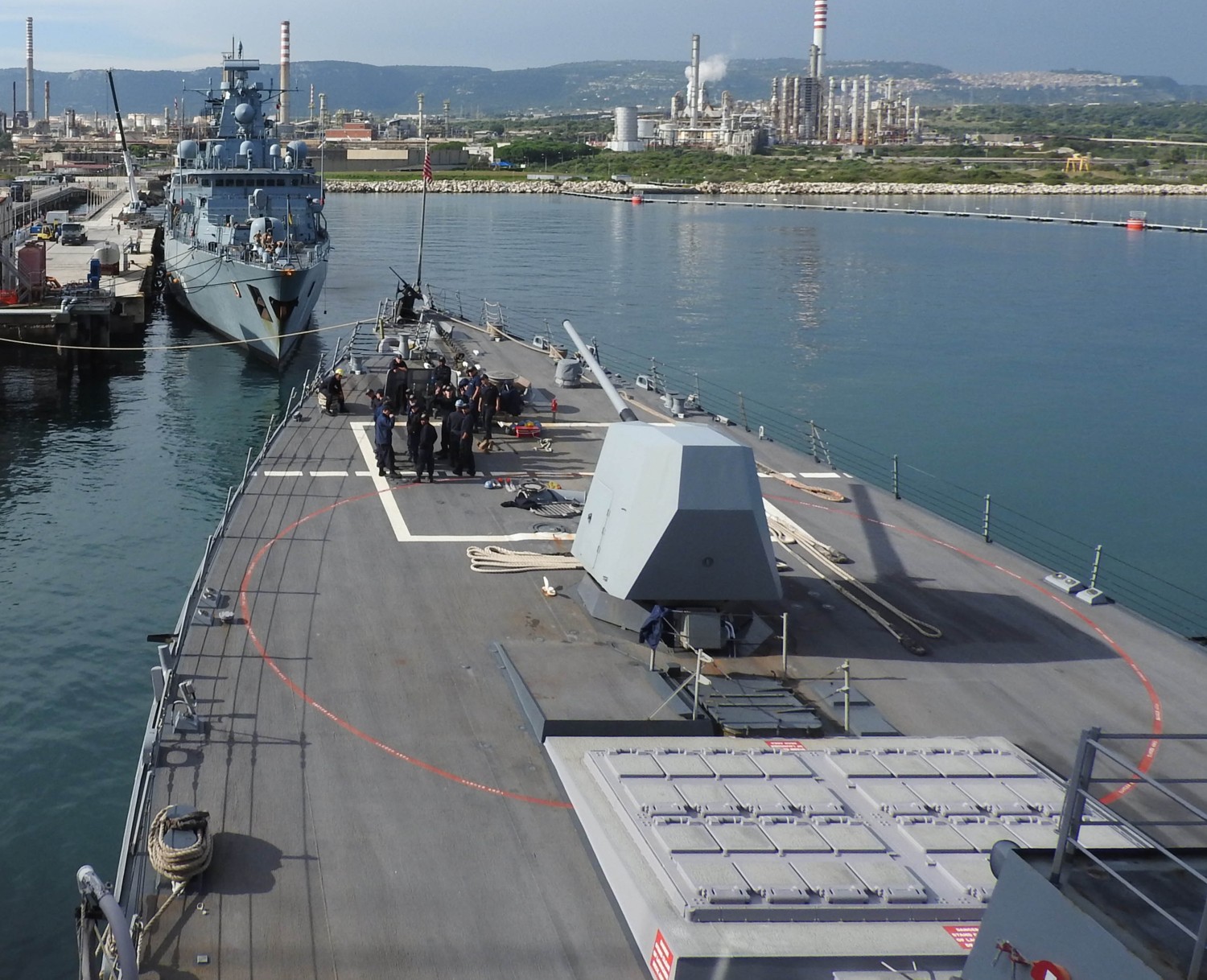 Augusta Bay, Sicily, Italy - October 2015 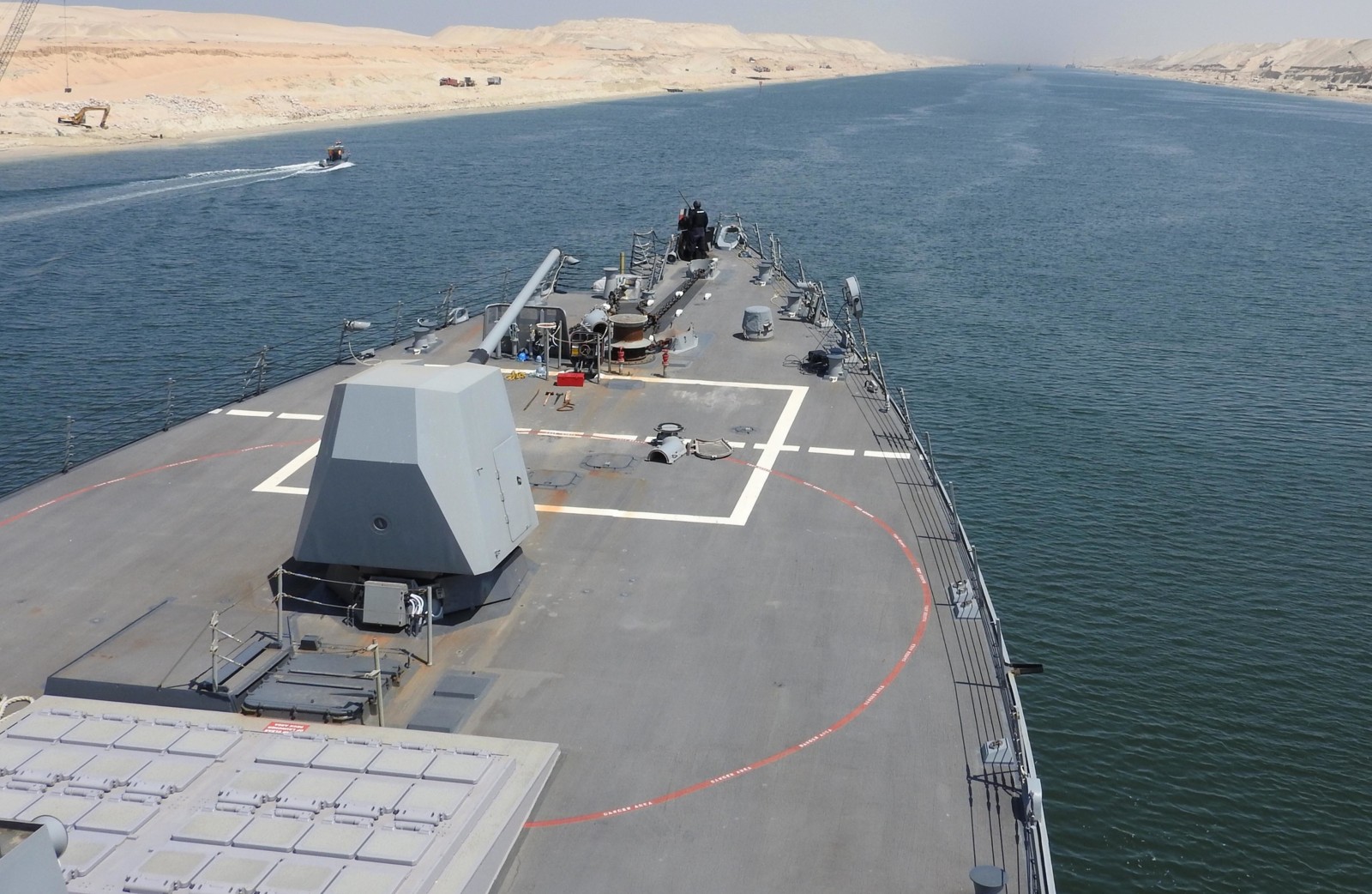 Suez Canal - September 2, 2015 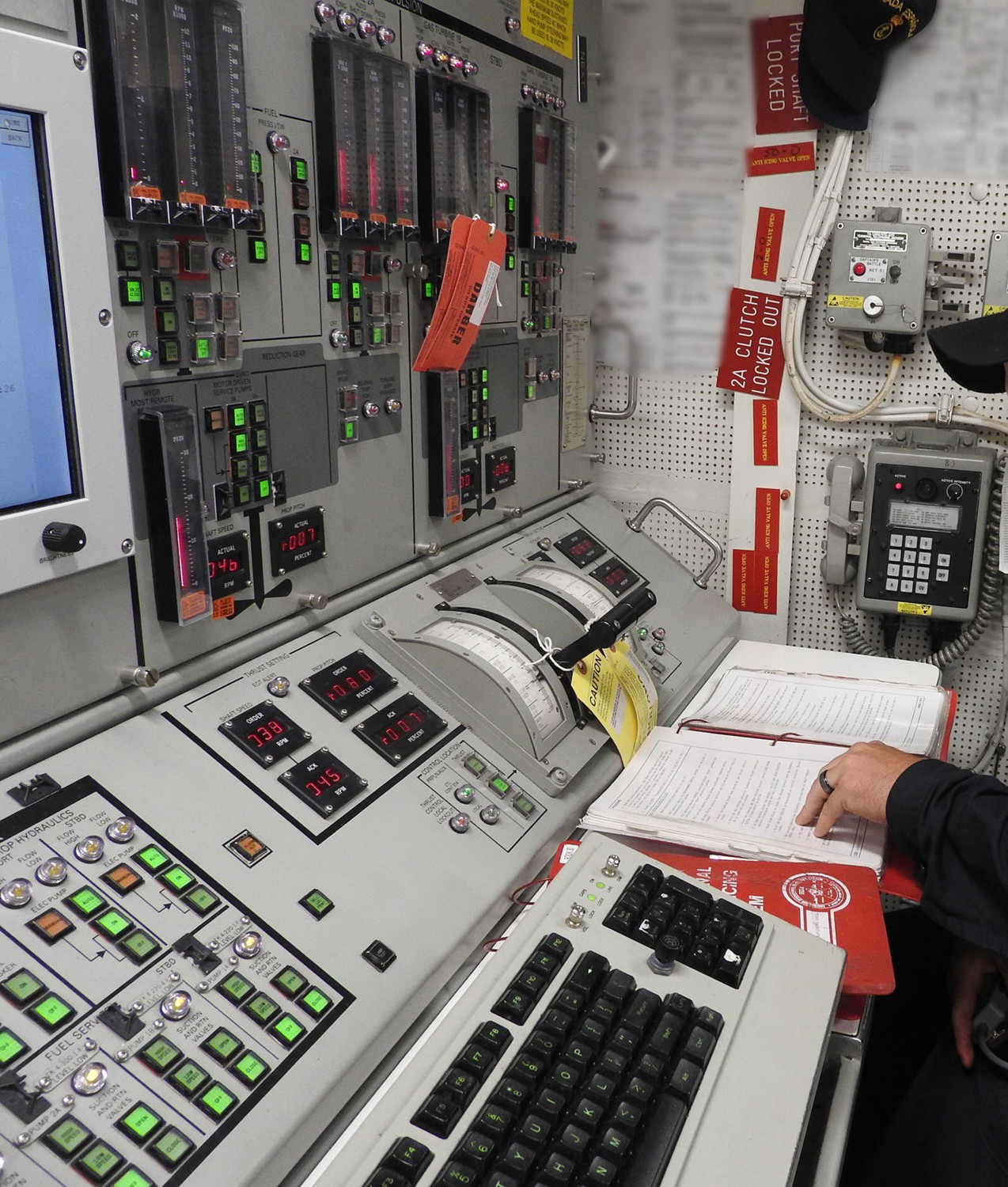 propulsion control station - Indian Ocean - July 2015 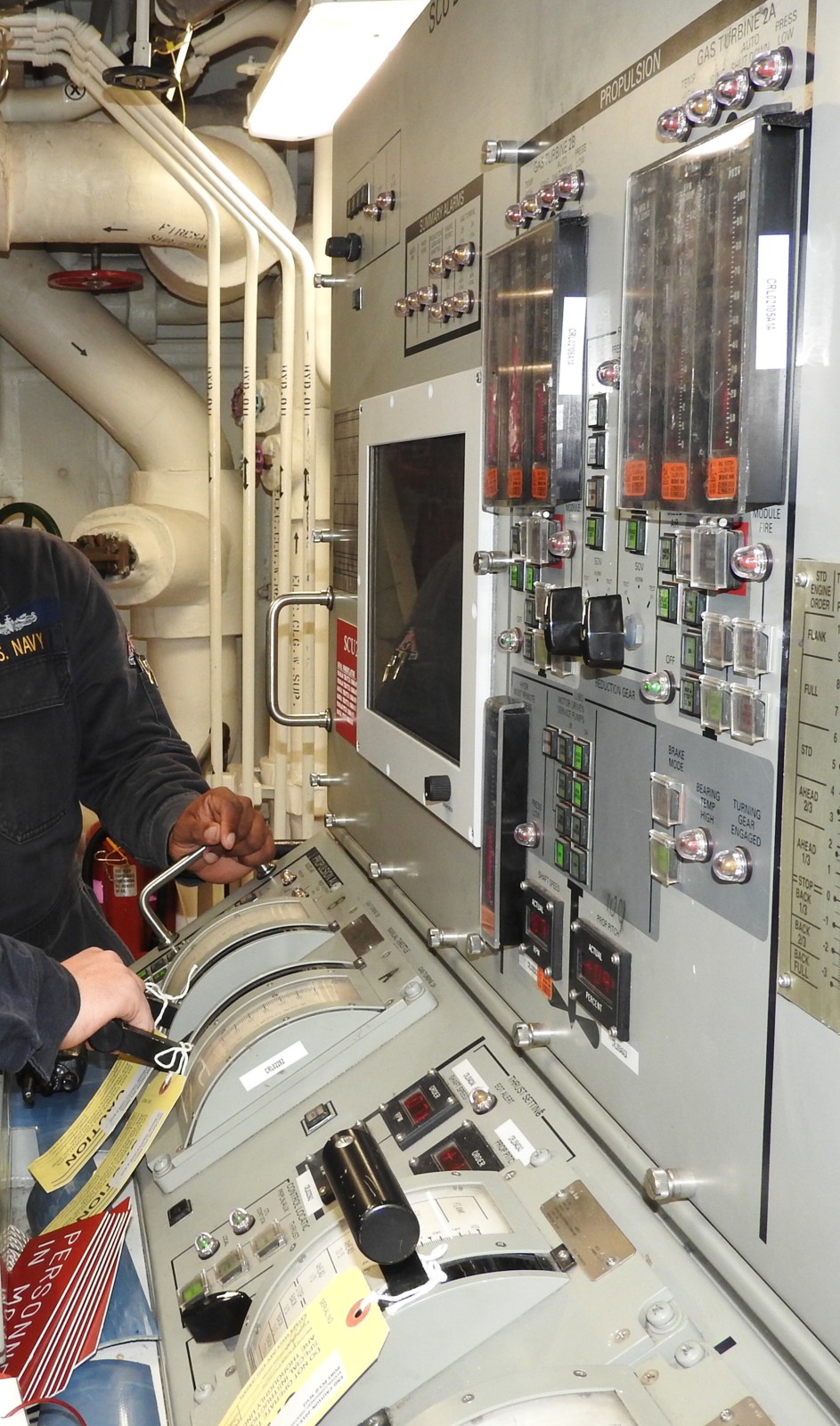 propulsion control station - Indian Ocean - July 2015  departing Naval Station Norfolk, Virginia for a scheduled deployment - May 3, 2015 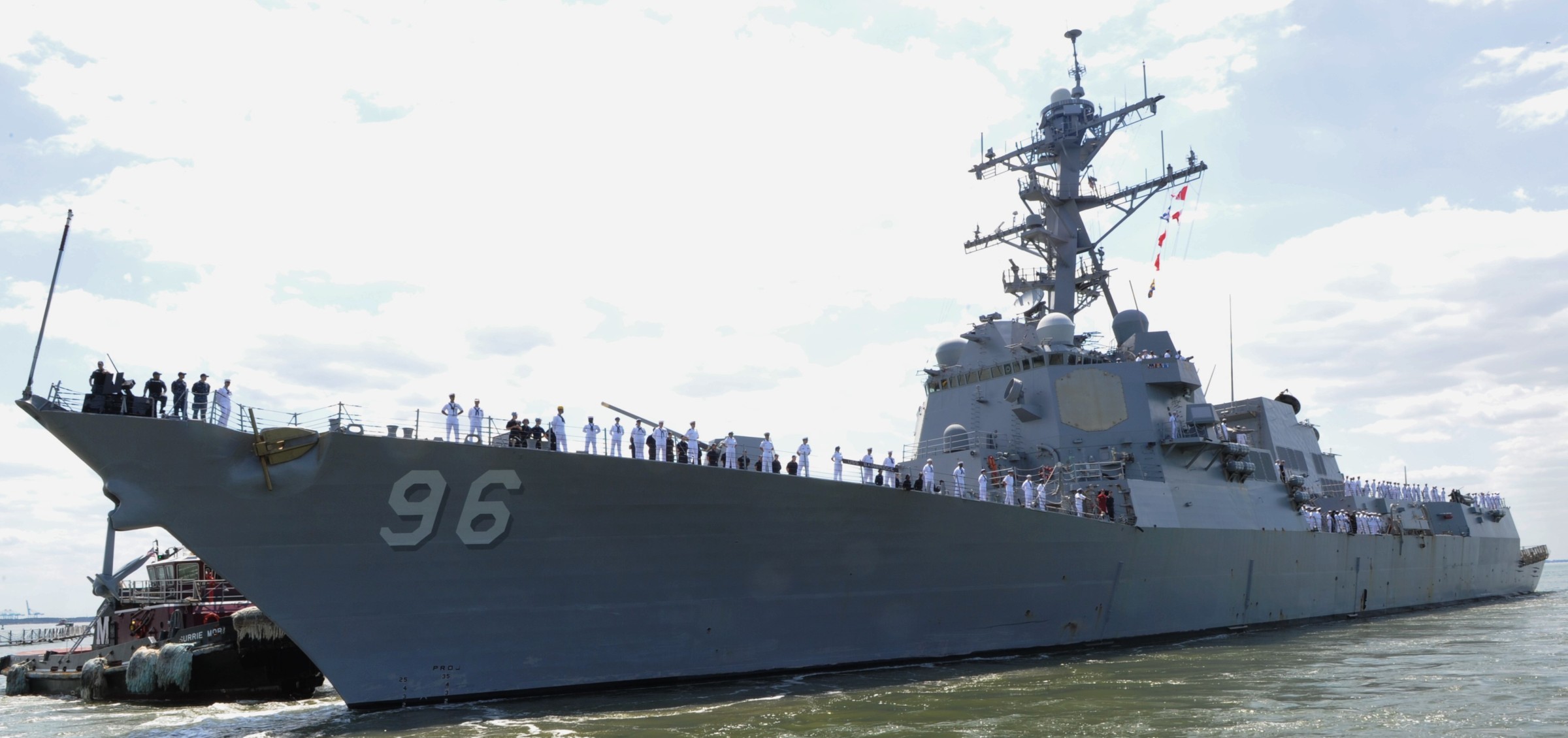 departing Naval Station Norfolk, Virginia for a scheduled deployment - May 3, 2015 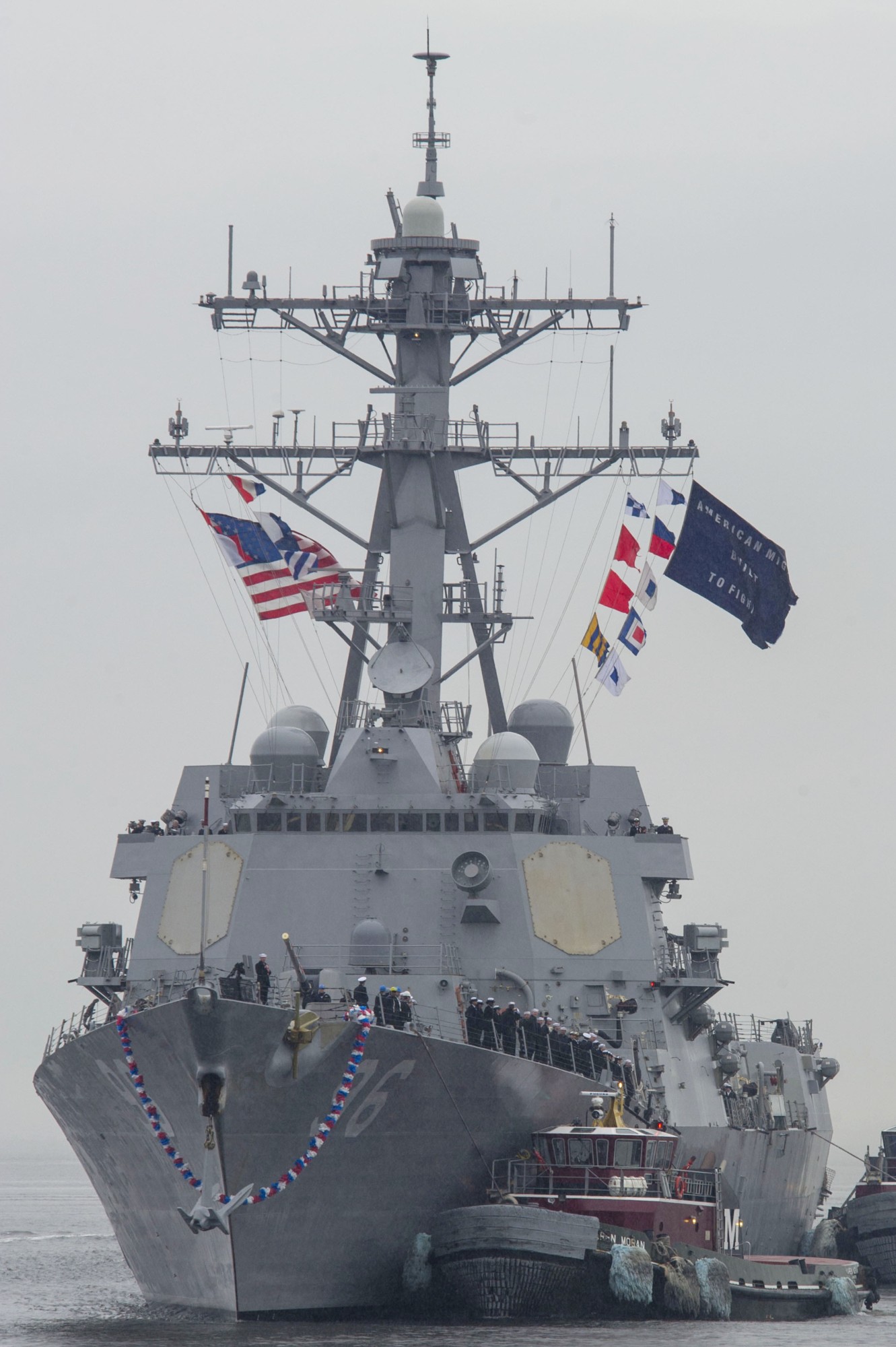 returning to Naval Station Norfolk, Virginia - January 14, 2014 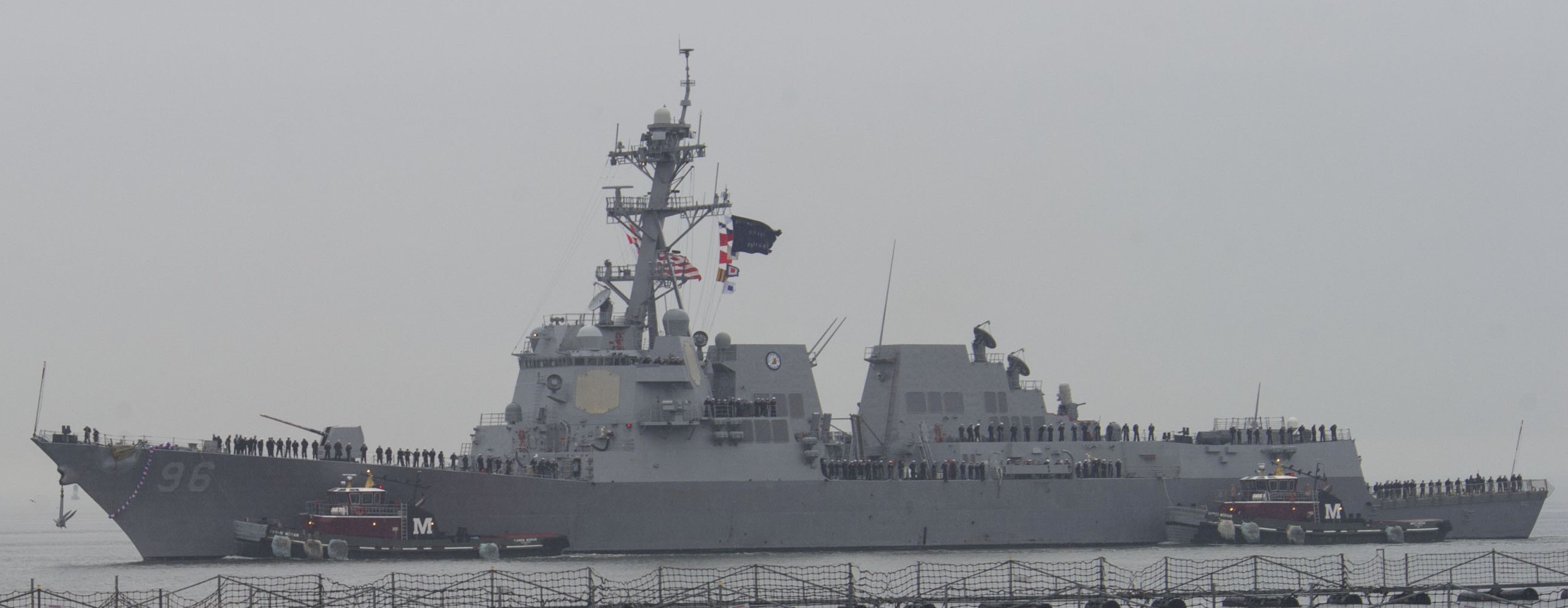 returning to Naval Station Norfolk, Virginia - January 14, 2014 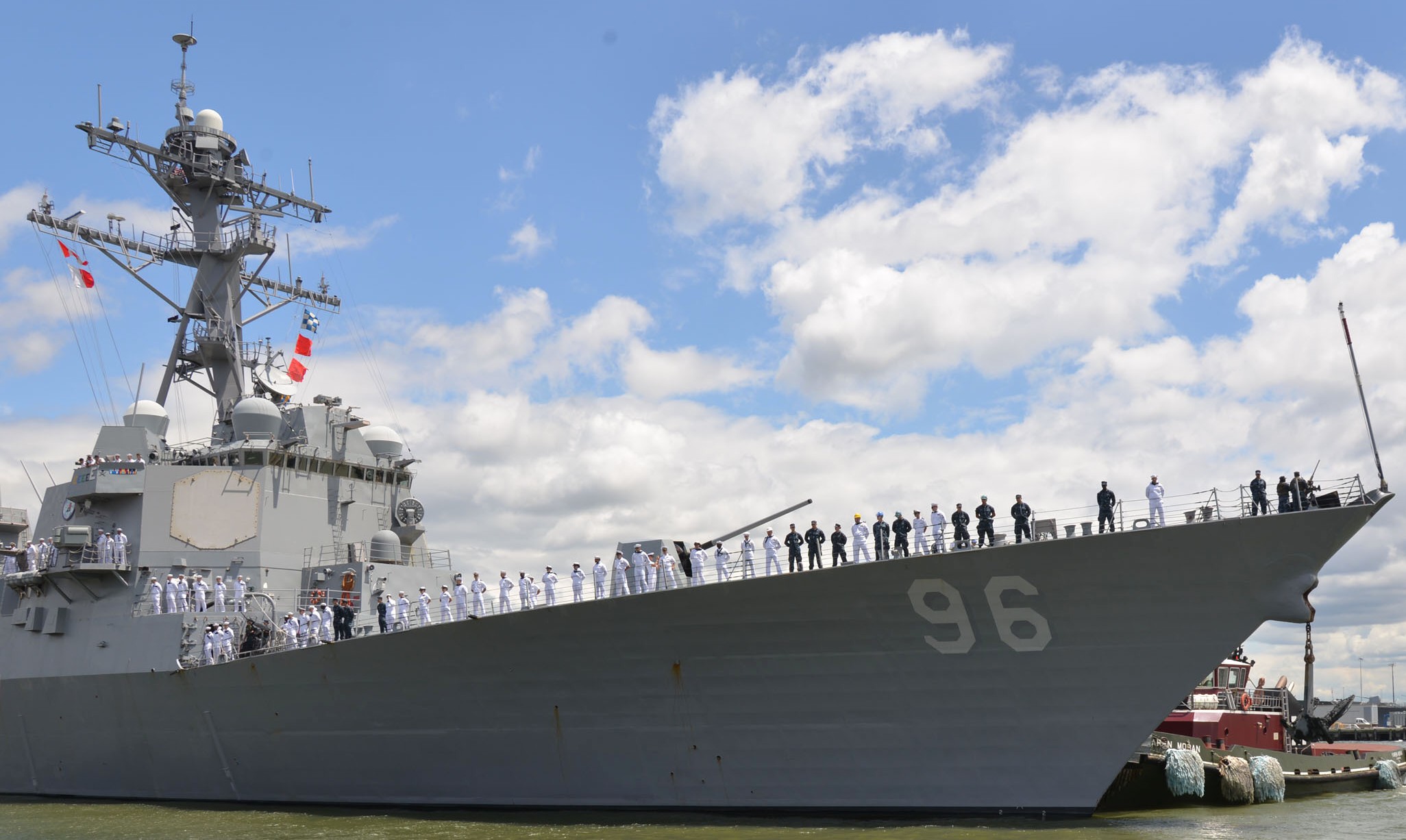 departing Naval Station Norfolk, Virginia for a scheduled deployment - June 14, 2013 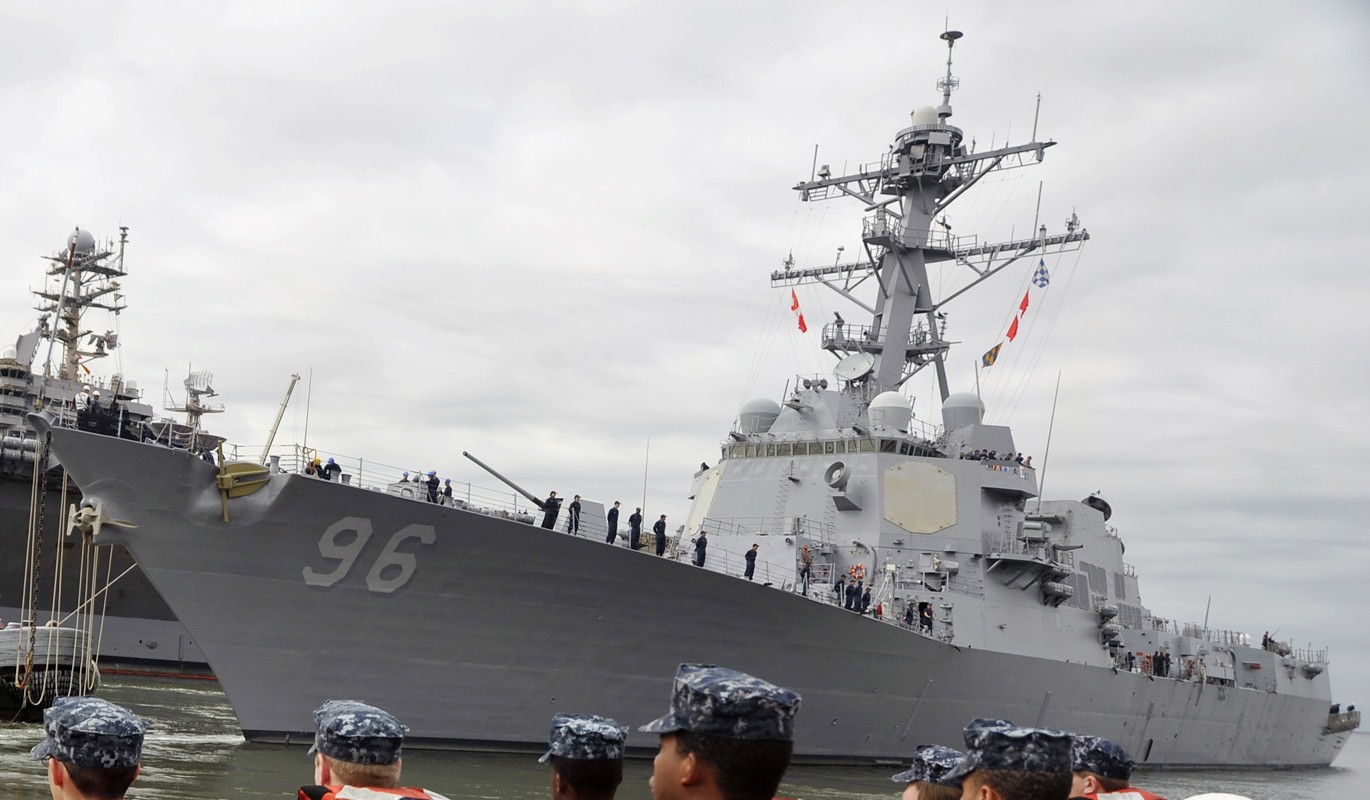 departing Naval Station Norfolk, Virginia for tests - September 17, 2012 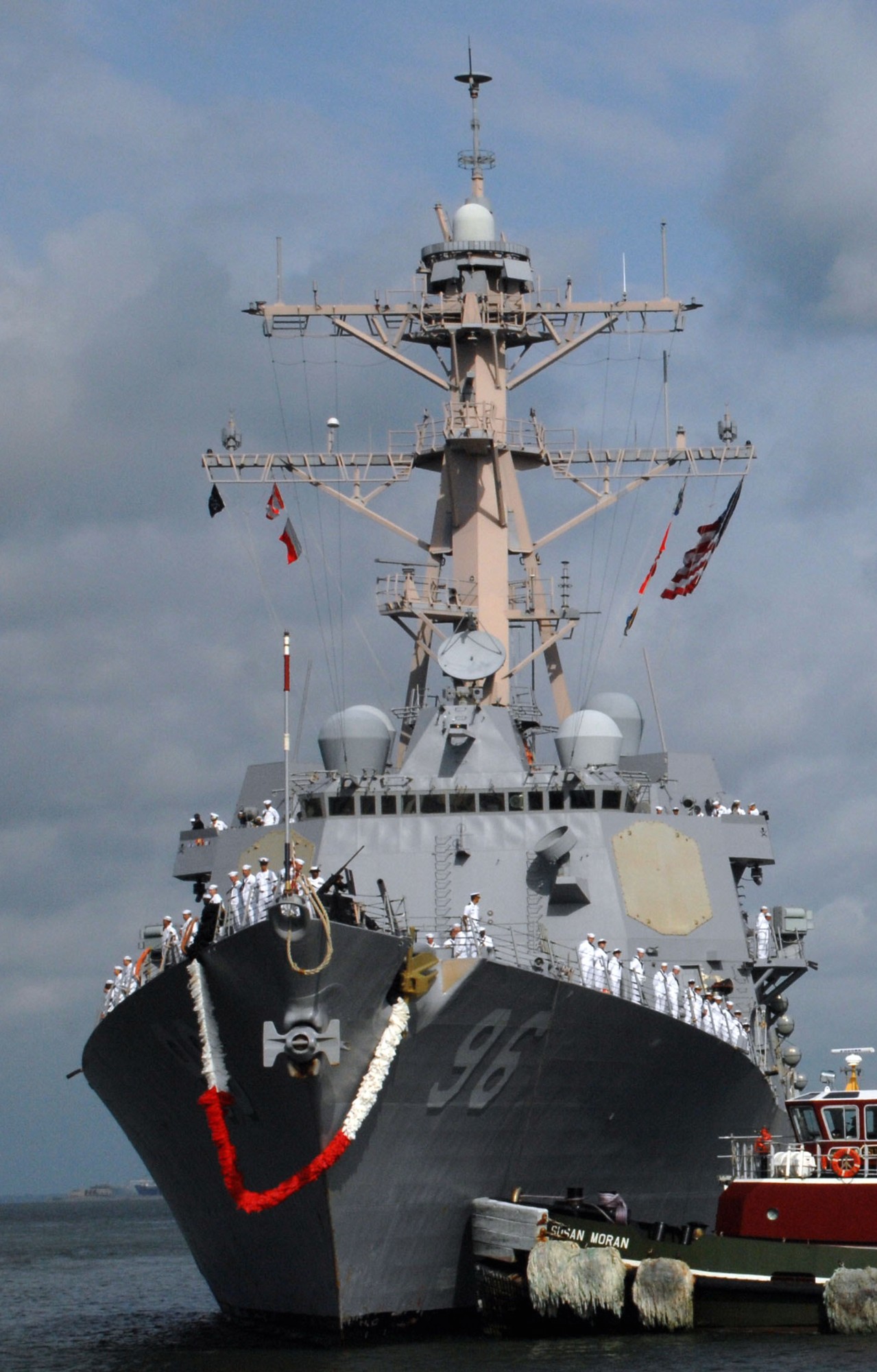 returning to Naval Station Norfolk, Virginia - August 5, 2011 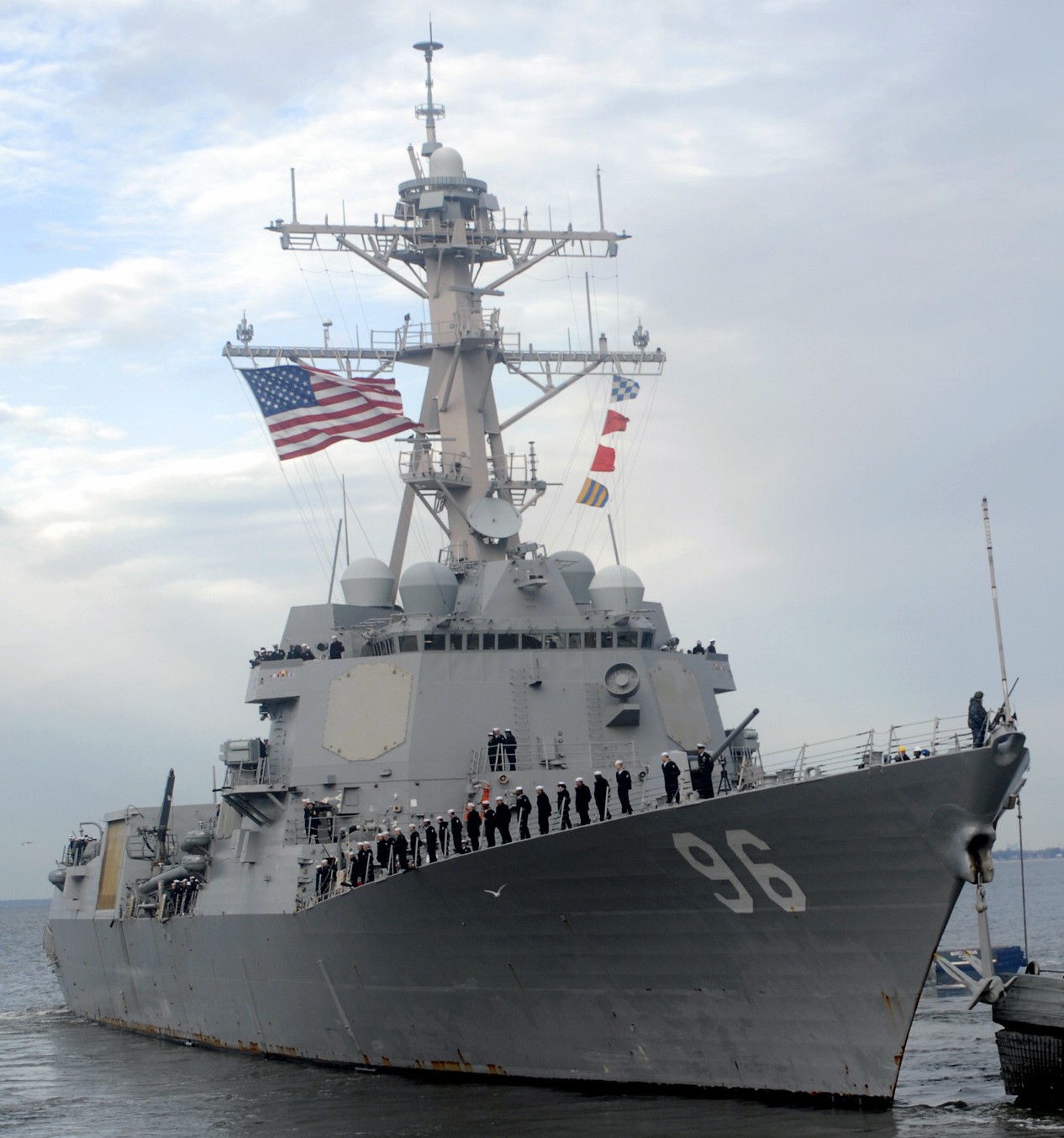 departing Naval Station Norfolk, Virginia - January 4, 2011 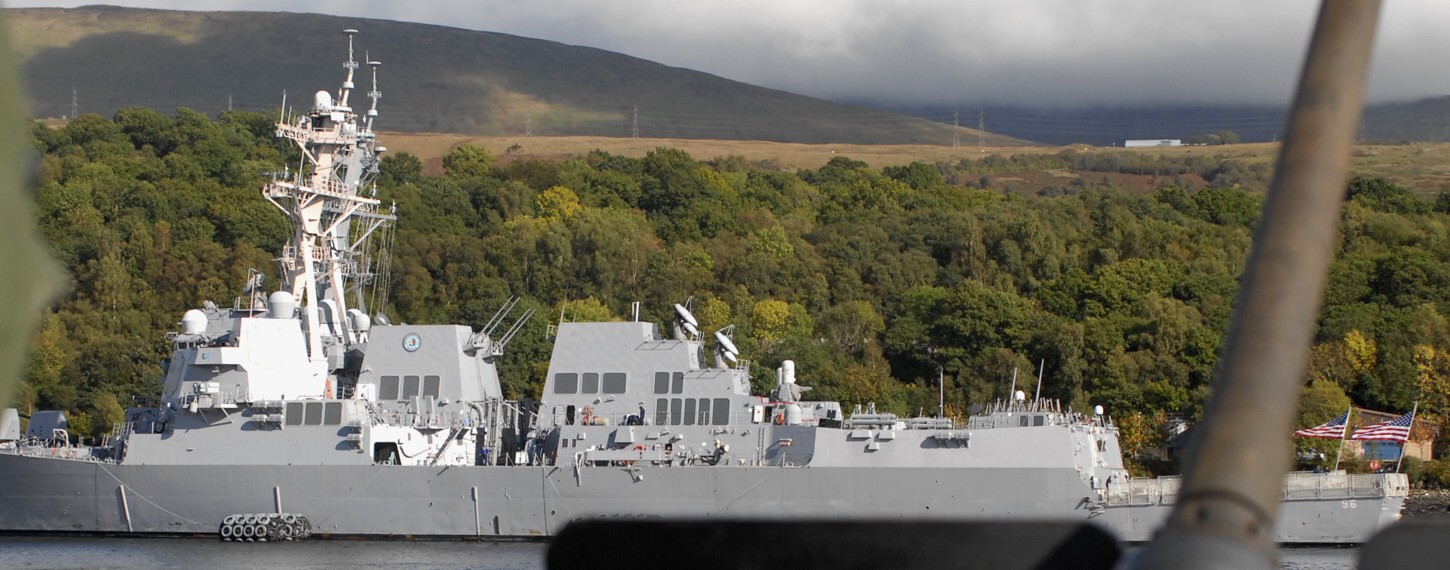 Faslane, Scotland - October 2010 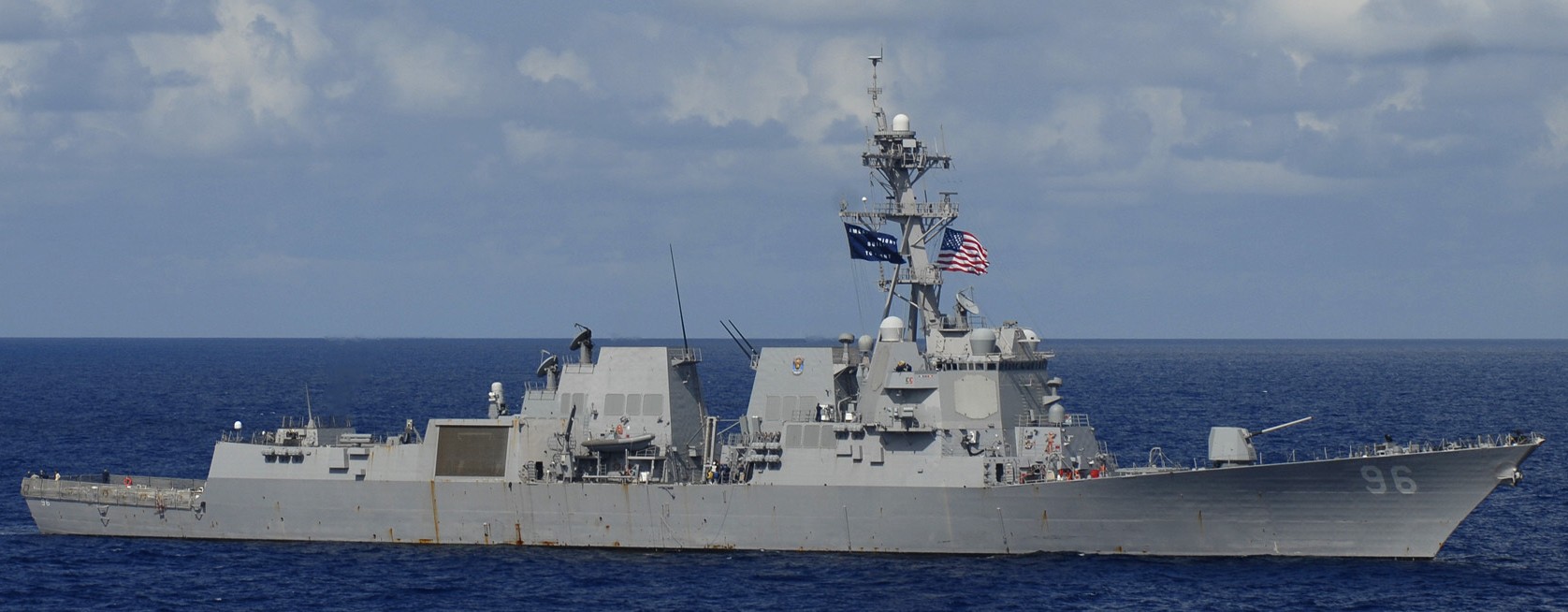 off Somalia - April 2009 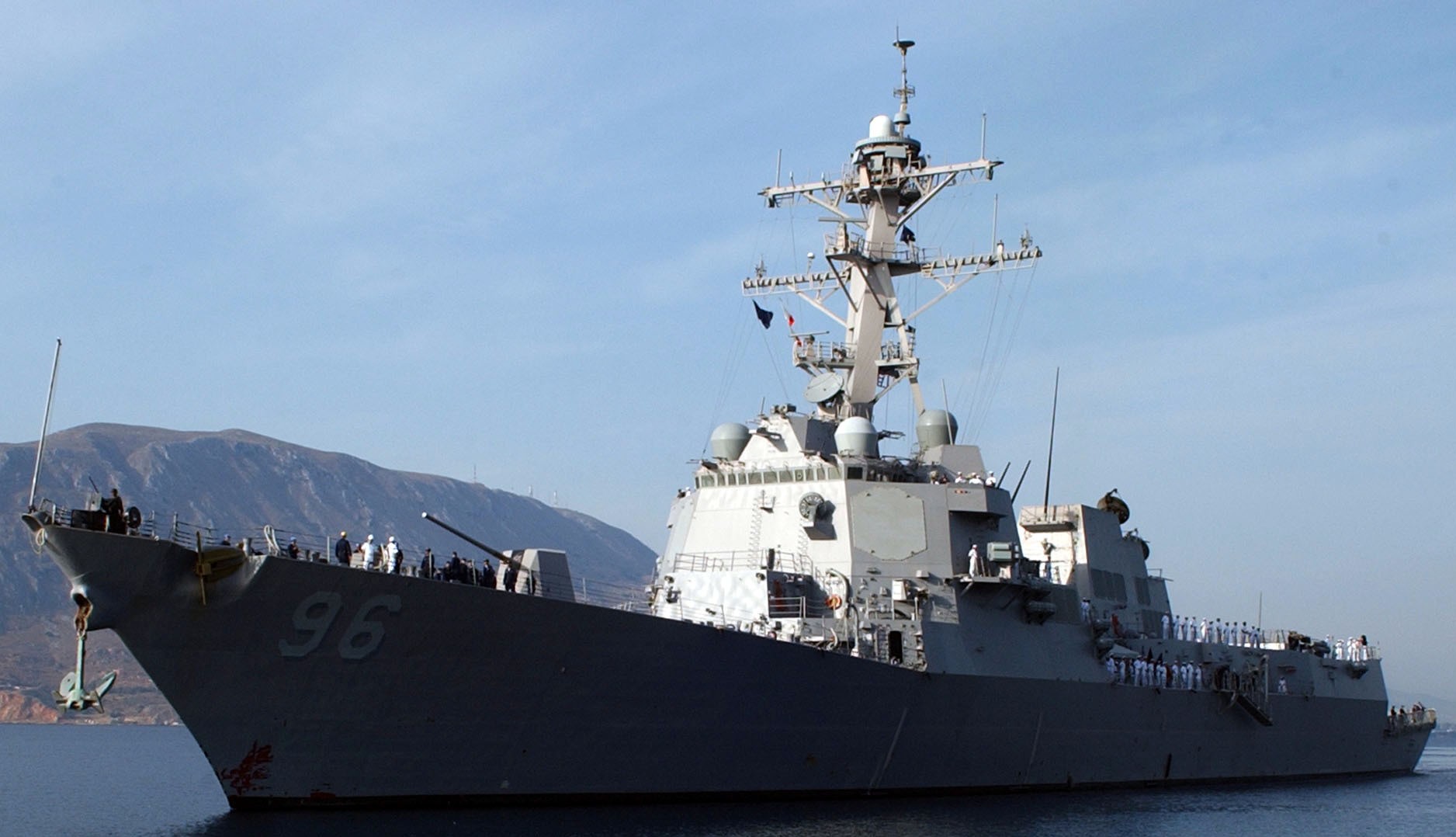 Naval Support Activity Souda Bay, Crete, Greece - October 2007 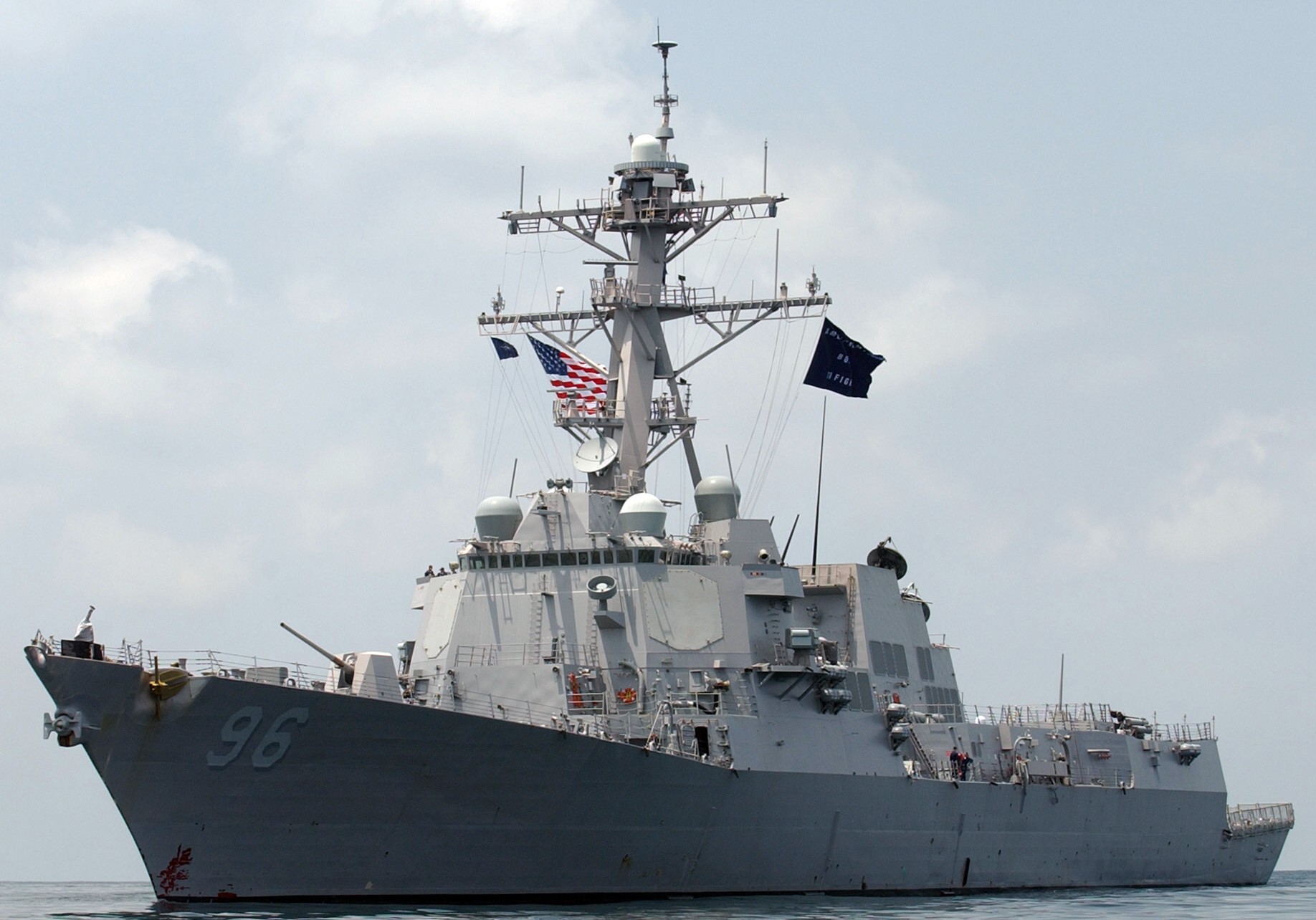 off Somalia - September 2007 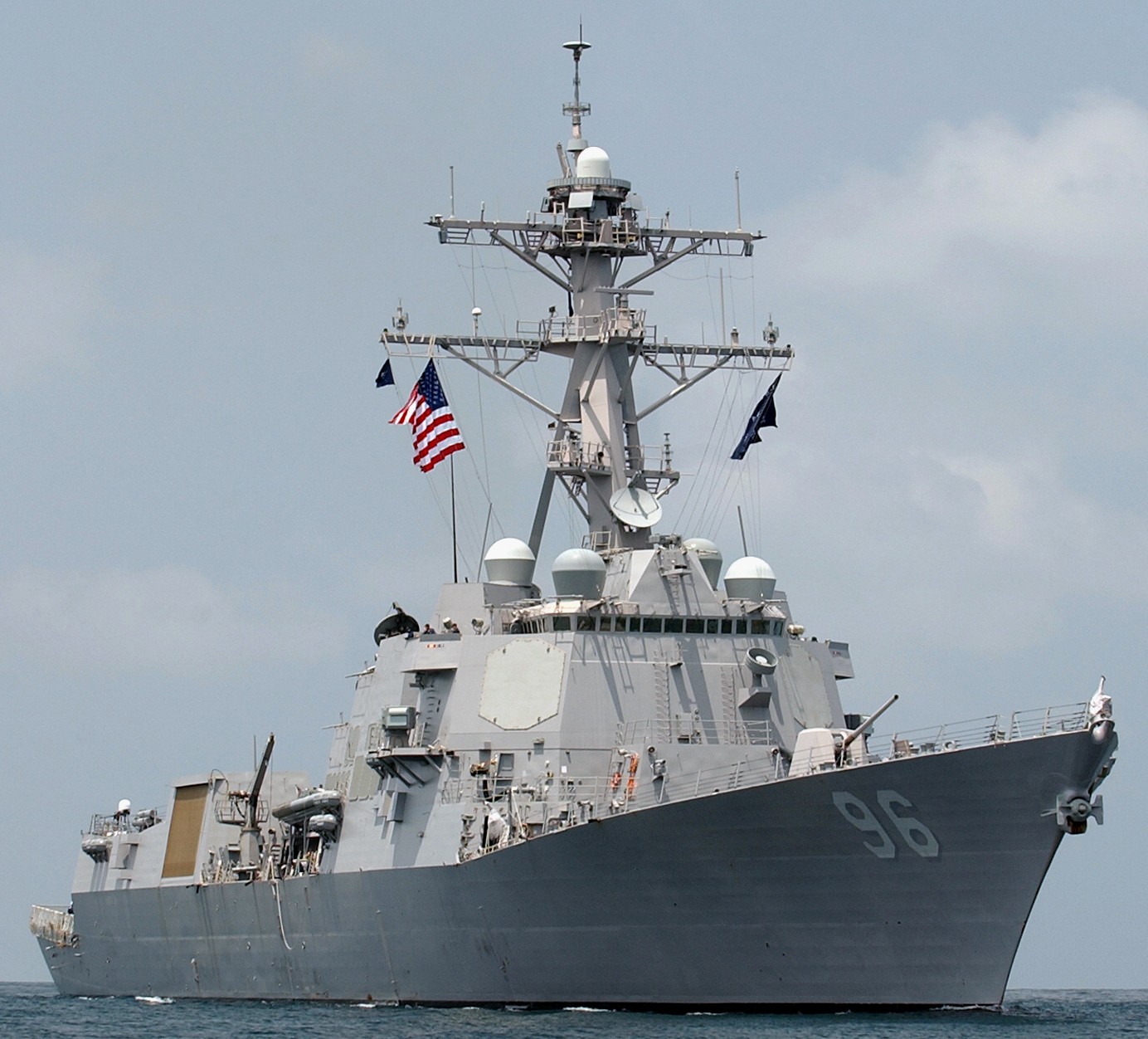 off Somalia - September 2007 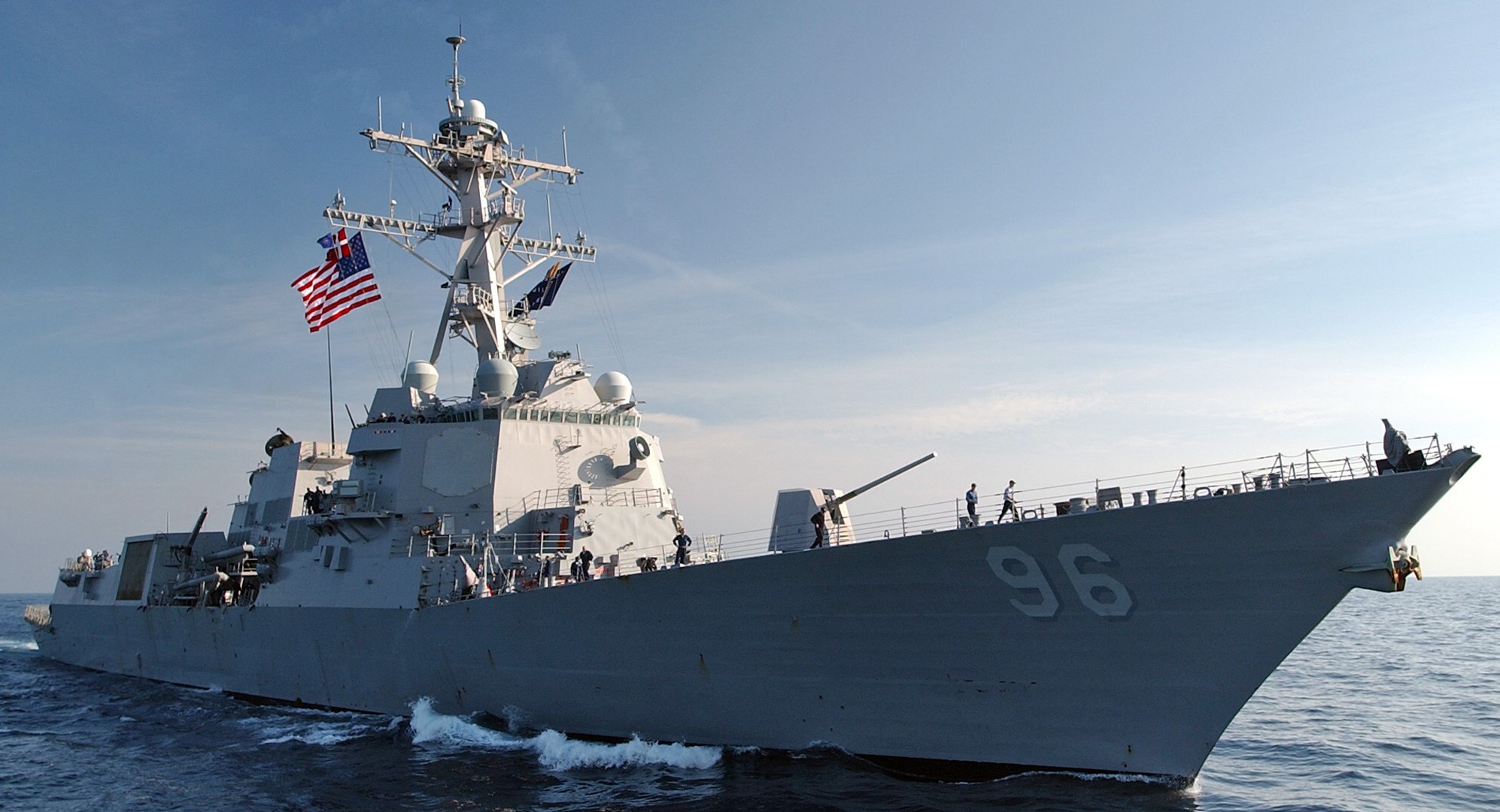 off Somalia - September 2007 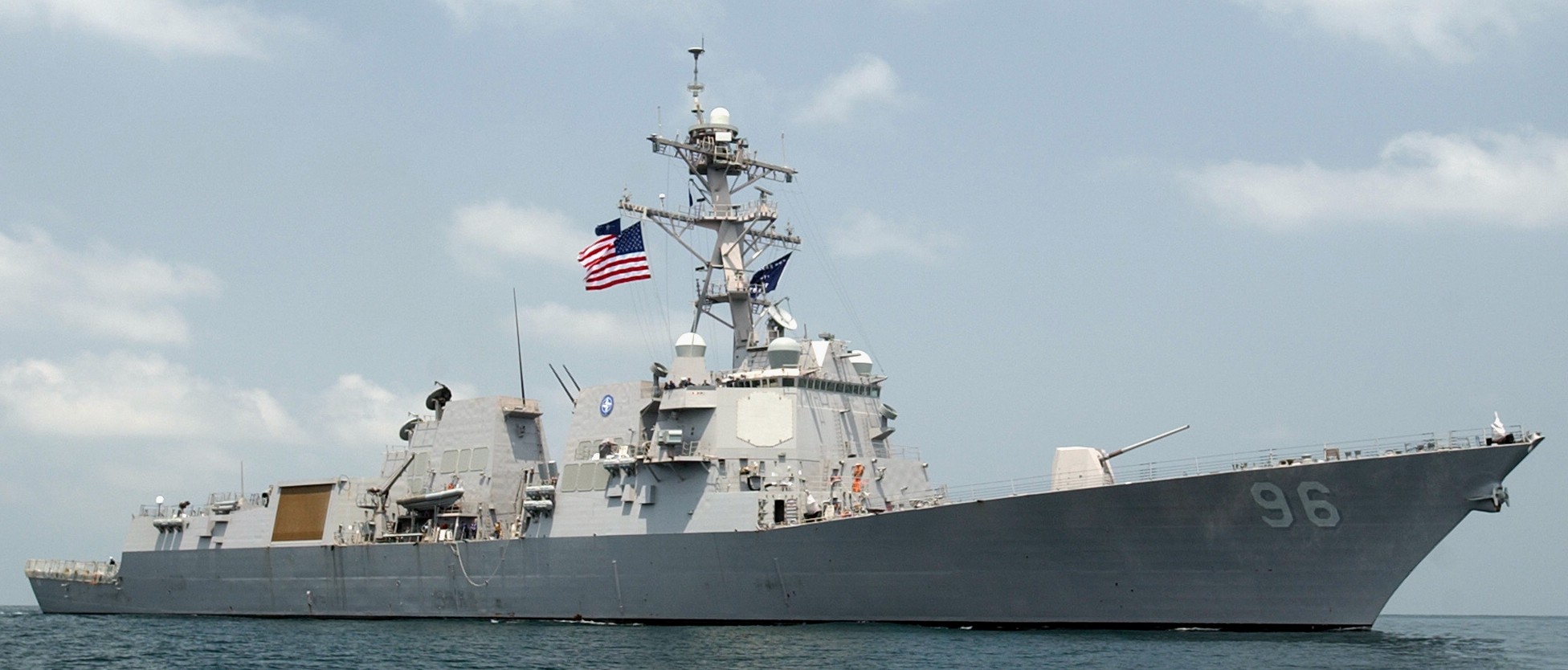 off Somalia - September 2007 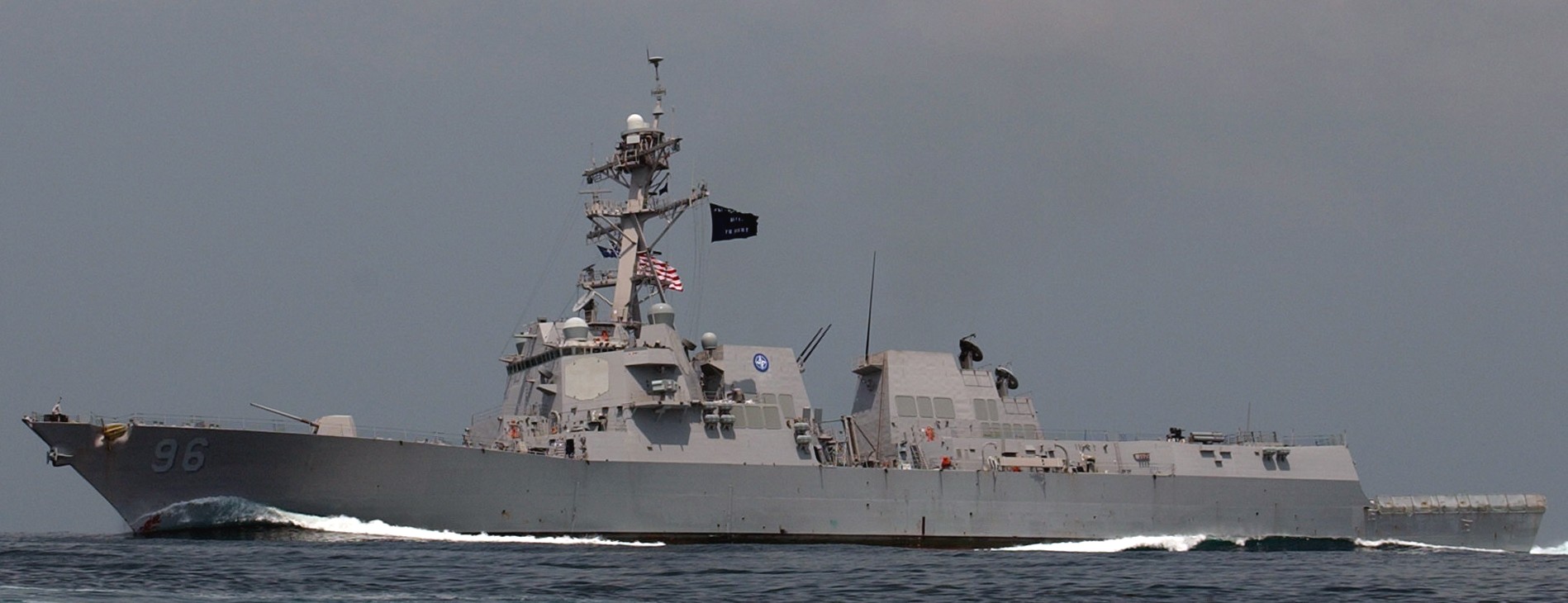 off Somalia - September 2007 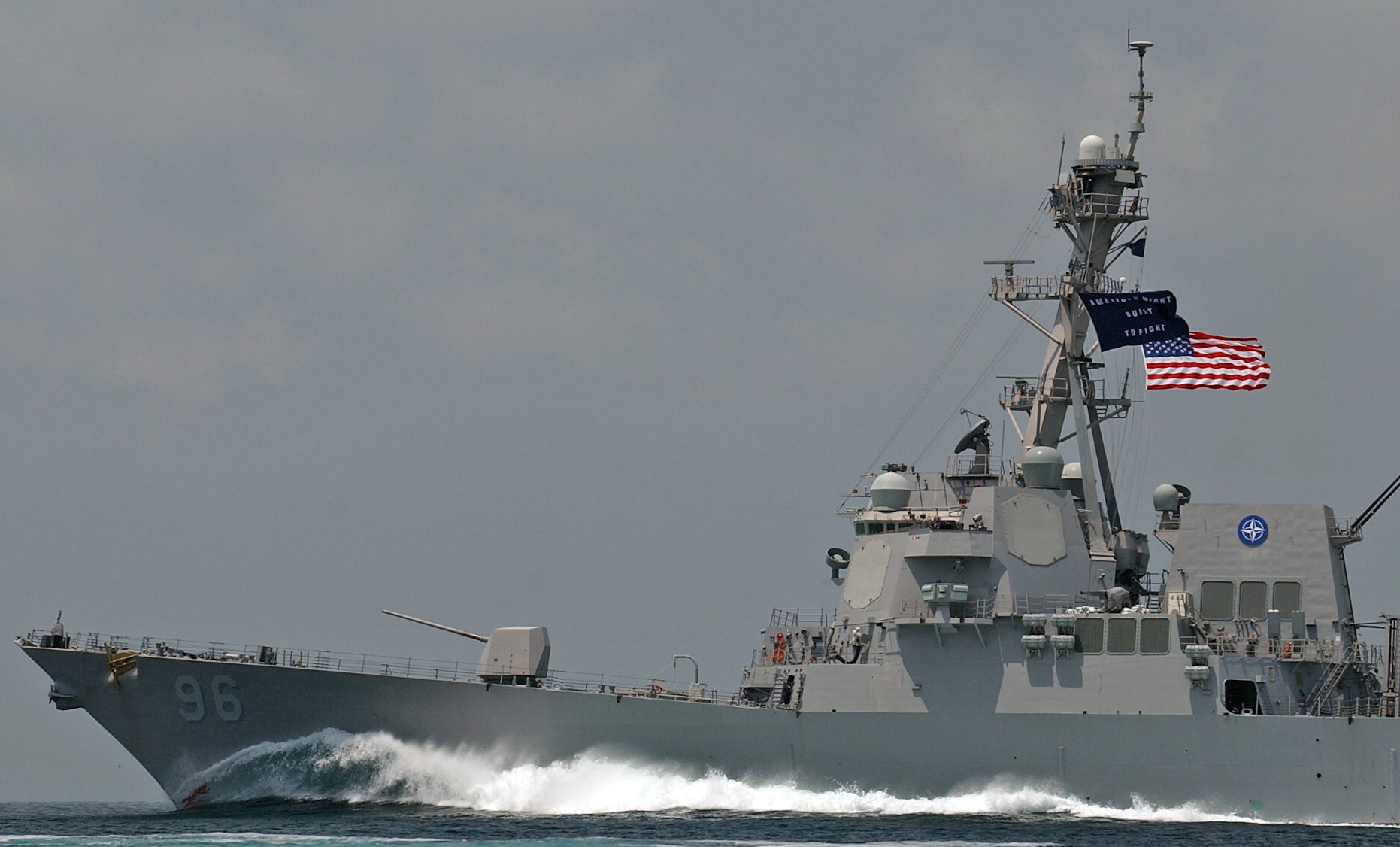 off Somalia - September 2007 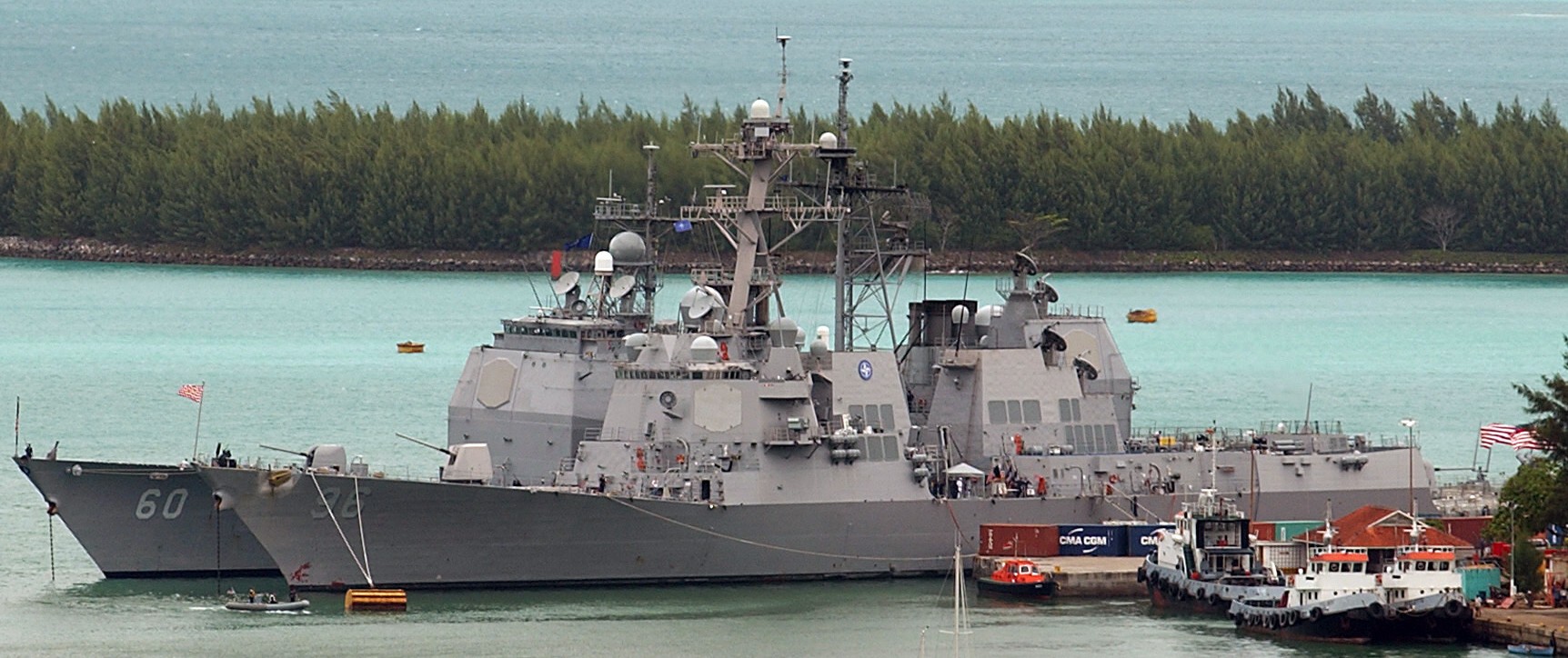 Victoria, Seychelles - September 2007 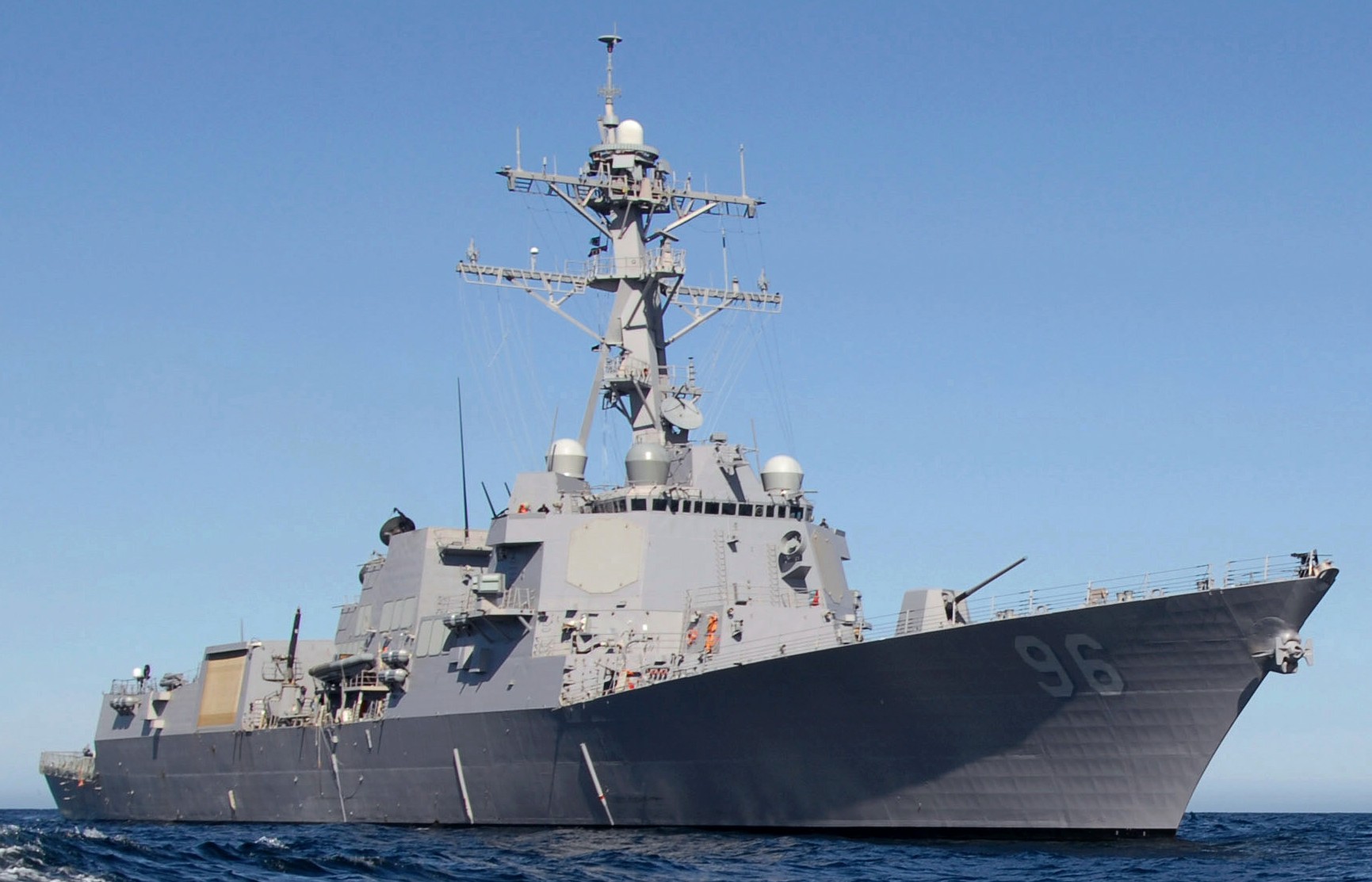 Atlantic Ocean - April 2007 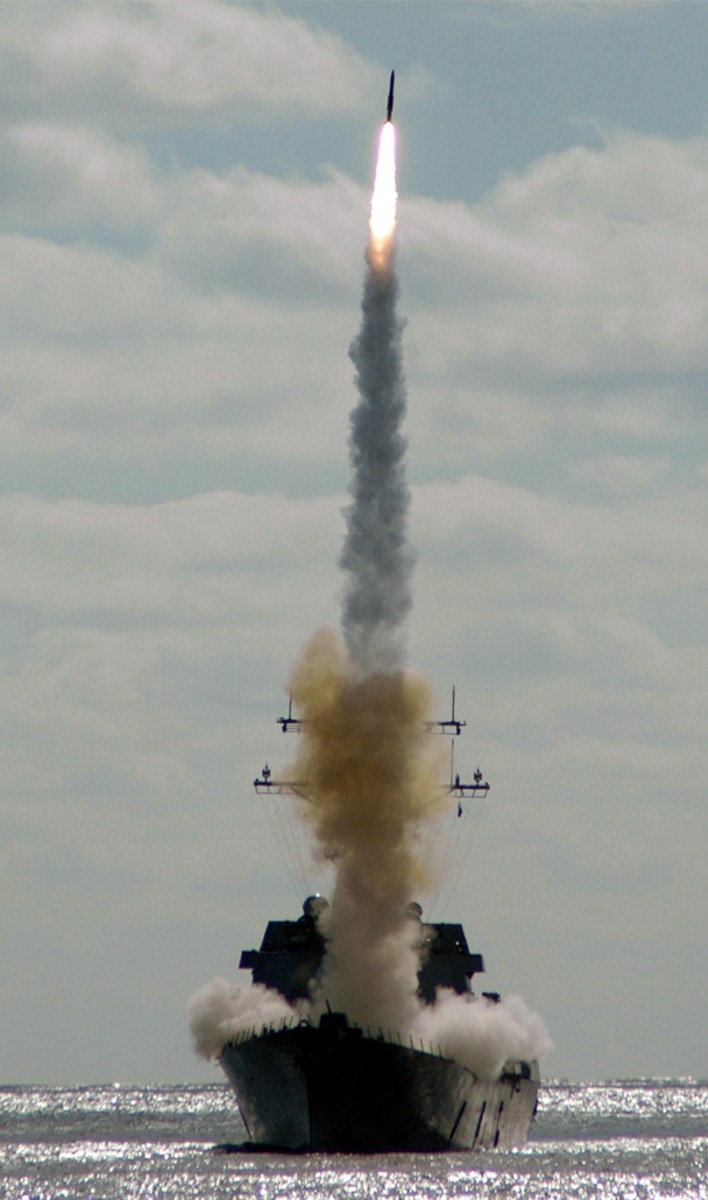 missile exercise - off Maine - July 2005 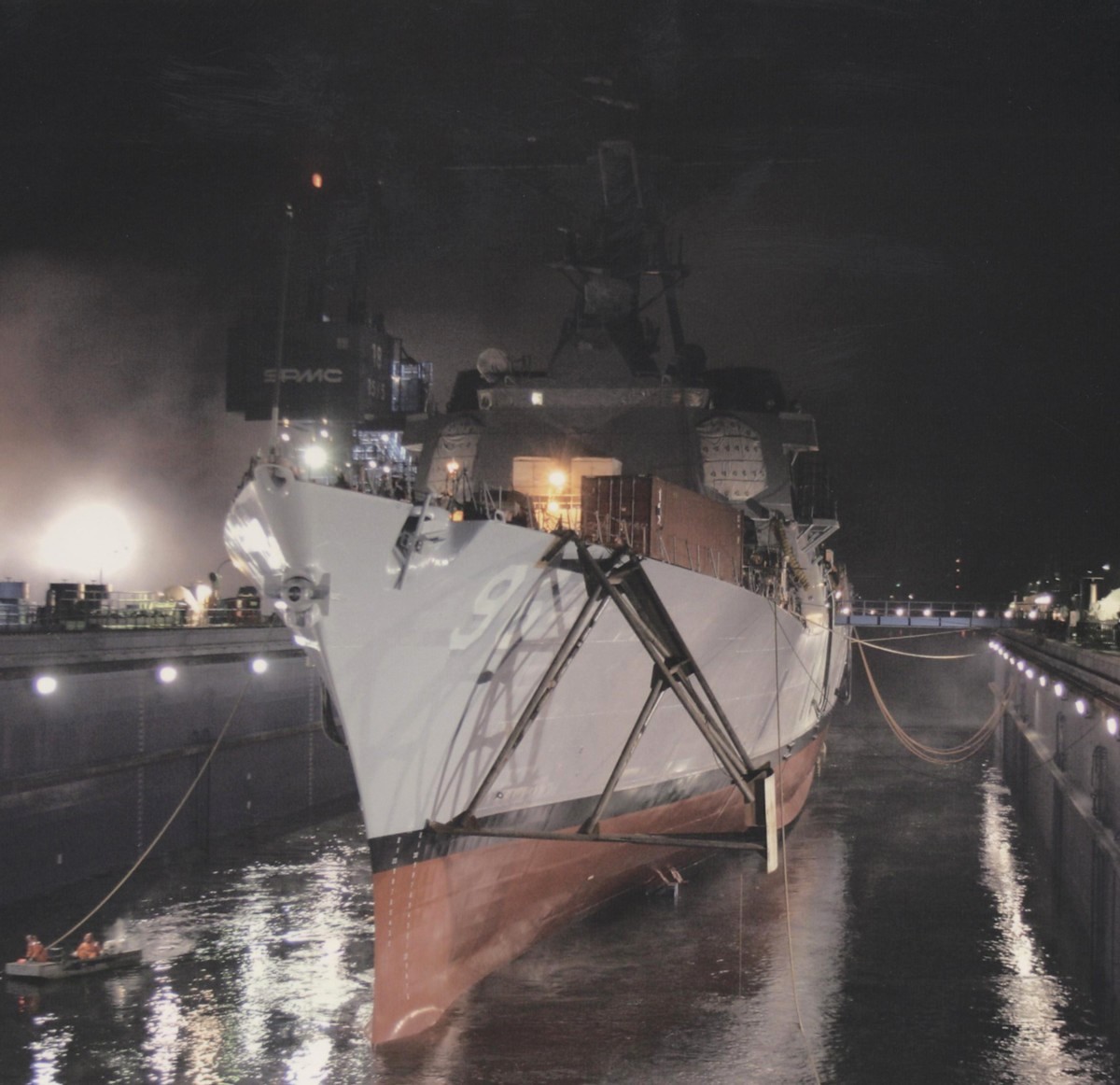 floating off at Bath Iron Works, Maine - November 12, 2004 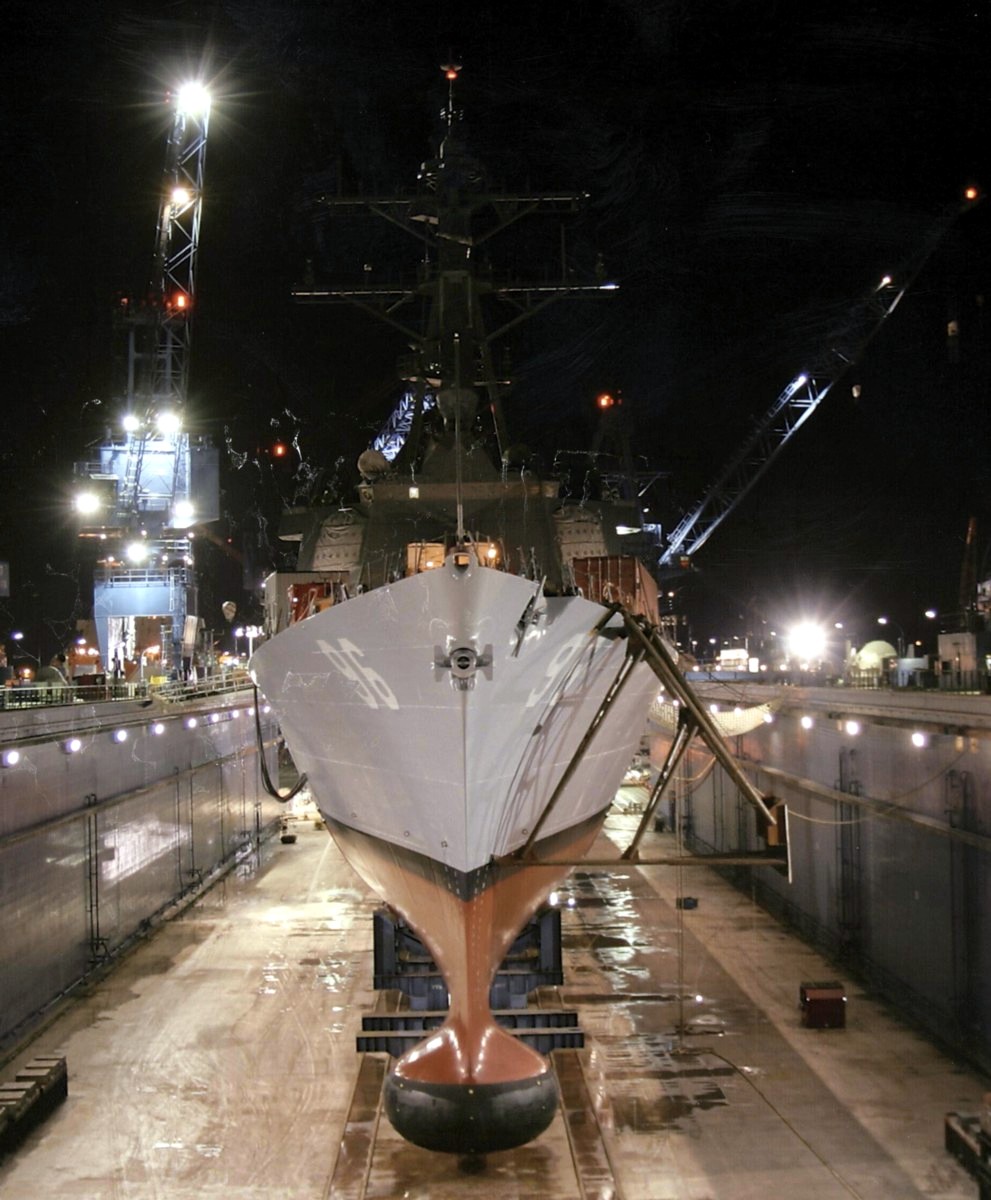 floating off at Bath Iron Works, Maine - November 12, 2004 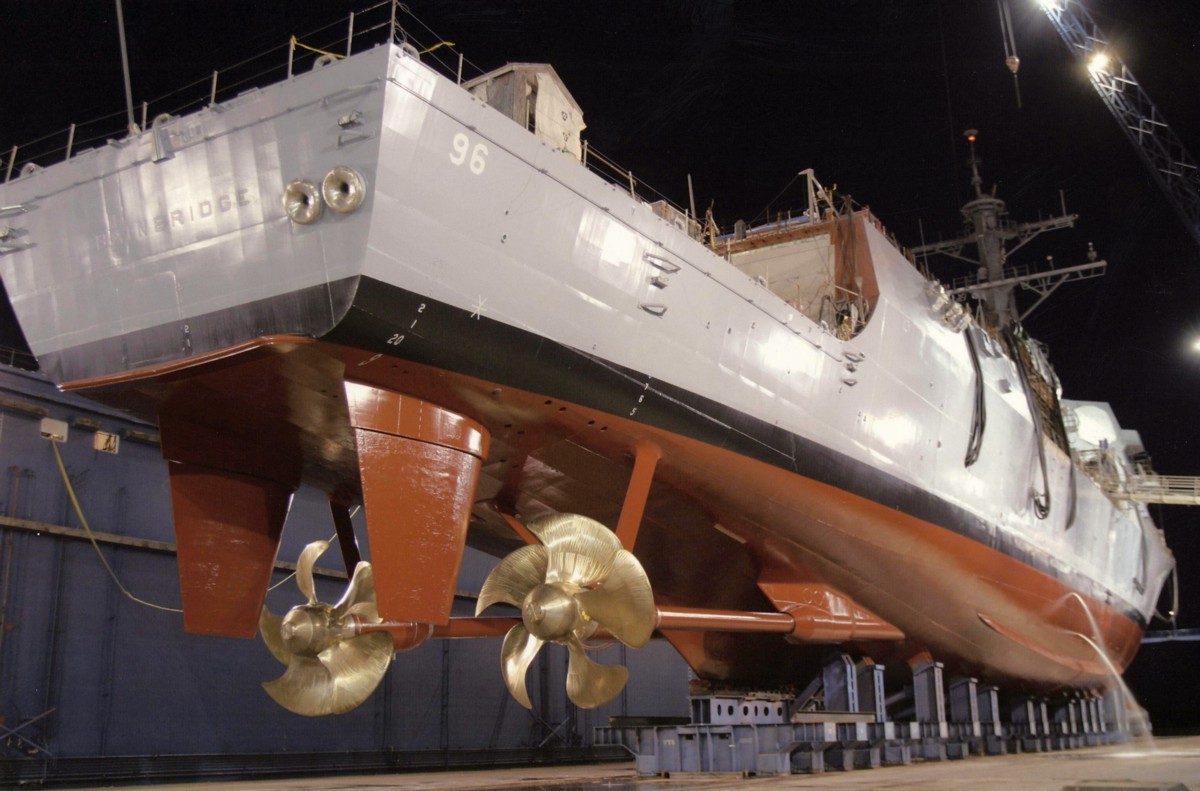 floating off at Bath Iron Works, Maine - November 12, 2004 |
||
|
USS Bainbridge (DDG 96): USS Bainbridge was floated from drydock and christened on 13 November 2004 at Bath Iron Works, Bath, Maine, sponsored by Susan Bainbridge Hay, Commodore William Bainbridge's great-great-great-granddaughter. She was commissioned on 12 November 2005, with Commander John M. Dorey commanding in Port Everglades, Florida. Bainbridge assumed flagship for Standing NATO Maritime Group 1 (SNMG-1) from USS Normandy (SNMG-1 April 2007 - August 2007) and remained flagship from August 2007 until February 2008. While on deployment under SNMG-1, they visited various ports across the Mediterranean such as Valletta, Malta; A Coruna, Spain; Istanbul, Turkey; Crete, Athens, Greece; as well as Port Louis, Mauritius; Port Victoria, Seychelles in the Indian Ocean. On 8 April 2009, Bainbridge was dispatched in response to a hostage situation in which Somali pirates had seized control of an American-flagged container vessel, Maersk Alabama. The crew of Maersk Alabama were able to get to safety, after their captain had been taken hostage by the pirates. The captain Richard Phillips was taken to and held on a lifeboat, and refused release in an unsuccessful attempt to exchange him for a pirate the ship's crew had captured. The destroyer shadowed and later encircled the Somali pirates during the standoff, at which time the pirates and Bainbridge began negotiating for the safe release of the captain who was held captive. On 12 April 2009, Captain Phillips was freed - reportedly in good condition - during a US Navy SEAL team assault. Three of the Somali pirates were killed by US Navy SEAL sharpshooters aboard Bainbridge, and one was captured. In January 2014, Bainbridge completed a six-month deployment to Sixth Fleet and returned to her homeport of Norfolk, Virginia. Upon returning to Norfolk, Virginia, in December 2015 following another deployment with the United States 6th Fleet, an investigation was conducted that resulted in the three senior commanders being removed from duty. In a press release, a spokesperson says the Navy investigated Commander Sean Rongers for allegedly allowing gambling and storing fireworks on the ship, and for "poor program management and a poor command climate." The Navy also fired the ship's former Executive Officer, Commander Brandon Murray, and Command Master Chief Richard Holmes. Commander Martin "Marty" Robertson assumed command on 8 April 2016. In the 13 June 2019 Gulf of Oman incident, Bainbridge responded to a distress signal from Kokuka Courageous, a Japanese oil tanker which caught fire after an apparent explosion while transiting the Gulf of Oman. According to US Defense officials, Bainbridge picked up all 21 crew members who had been rescued by a tugboat. In May 2022, Bainbridge was homeported out of Naval Station Norfolk and a part of Destroyer Squadron 28, along with Carrier Strike Group 8 led by the USS Harry S. Truman. source: wikipedia |
||
|
Commodore William Bainbridge (May 7, 1774 - July 27, 1833): William Bainbridge, born on 7 May 1774 at Princeton, New Jersey, went to sea in a Philadelphia merchantman at the age of 15. He developed rapidly as a seaman and leader and attained command of the ship Hope by the end of 1793. During ensuing years, he took her on trading voyages to European ports - calling often at Bordeaux - as well as to the islands of the West Indies. After trouble with Republican France and with the Barbary pirates prompted the United States to revive its Navy, Bainbridge was commissioned a lieutenant and given command of Retaliation. While that 14-gun schooner was protecting American merchantmen in the Caribbean on 20 November 1798, Retaliation encountered the French frigates L'Insurgente and Volontaire and their superior firepower forced him to surrender. As a prisoner on board Volontaire, Bainbridge tricked the senior French officer into recalling L'Insurgente which had been pursuing Montezuma and Norfolk and thus permitted these small American warships to escape. During his imprisonment at Guadaloupe, Bainbridge did everything in his power to protect and to further the interests of his countrymen who were also held captive, and he was later permitted to return to home in Retaliation as a cartel ship carrying other Americans who had been held captive on the island. Promoted to master commandant and given command of Norfolk, one of the warships he had saved from capture, Bainbridge joined Commodore Thomas Tingey's squadron in waters surrounding the Leeward Islands on 24 May 1799. On 5 June, his brig engaged a 14-gun French privateer and was about to force the enemy ship to surrender when the wind of a sudden storm carried away Norfolk's two top masts, allowing her opponent to escape. Following repairs at St. Kitts, Norfolk cruised with Ganges and assisted that flagship in capturing the French privateer Vainqueur. At the end of July, Norfolk and Retaliation - recently recaptured and once more flying American colors - left St. Kitts escorting a large group of merchant ships. When the convoy encountered a large French frigate, Bainbridge ordered his charges to scatter and then lured the enemy warship away from the merchantmen, beginning a long chase in which the American brig finally escaped. The American convoy later reassembled and proceeded on to New York where it arrived on 12 August without having lost a single ship. In September, Bainbridge got underway in Norfolk for Hispaniola to combat both picaroons and French privateers. In one instance, the brig acted as a forerunner of a World War I "Q" ship. On 30 October, off Gonaive Island, she pretended to be a defenseless merchant ship, keeping her gunports closed to lure pirates. A barge manned by about 50 men approached her; but, after coming within cannon range, became suspicious and shied off under "...a broadside of round and canister which sprinkled all around them." Unfortunately, the wind failed as the Americans were beginning the pursuit and allowed the picaroons to row frantically away. A short while later, Norfolk joined the frigate Boston; and, on 7 November, they captured a French armed sloop. Norfolk then sailed to Cuba for patrol duty in the vicinity of Havana. On 20 February 1800, she chased the French schooner Beauty into shallow water where the American brig could not follow. Bainbridge then used Norfolk's guns so effectively that he battered the enemy privateer - which had been a great plague to American commerce - to pieces. Thereafter, while Norfolk neither captured nor sank any enemy ships, she kept the coast of Cuba free of enemy warships until sailing for home escorting 23 merchantmen. The convoy reached Philadelphia on 12 April 1800; and, a bit more than a month later, the 25-year-old Bainbridge received his commission as a captain. The Treaty of Mortfontaine soon ended hostilities with France obviating another voyage to the West Indies for the successful young officer, but a task far less to his liking awaited. The Barbary Powers - city states along the coast of North Africa - had long claimed hegemony in the Mediterranean Sea and were demanding tribute from all nations whose ships traded in its waters. Placed in command of George Washington, a merchantman converted to a 32-gun warship, Bainbridge was charged with carrying the American payment for the year 1800 to the Dey of Algiers. After delivering the tribute, a cargo of stores and timber, to Algiers and while preparing to sail for home, Bainbridge was surprised to receive instructions from the Dey to carry a special mission to the Sultan in Constantinople. Although he did so under protest, Bainbridge took the opportunity to make friends there and received a letter of protection from the Capudan Pasha which enabled him to free several enslaved Americans and to sail for home with them unmolested. Upon returning to the United States, Bainbridge took command of the frigate Essex and sailed back to the Mediterranean with Commodore Richard Dale's squadron. He arrived at Gibraltar on 1 July 1801 and cruised the "middle sea" protecting American trade until the summer of 1802 when he returned home. Following leave and shore duty, Bainbridge assumed command of the frigate Philadelphia and set out for the Mediterranean to join Commodore Preble's squadron in operations against Tripoli. Soon after reaching Gibraltar on 24 August 1803, the frigate began to hunt two corsairs reportedly preying upon American shipping near Cape de Gata, Spain. Two days later, Bainbridge captured the Moroccan ship Mirboka - operating under a commission of Tangier - and freed the privateer's prize, the American merchant brig Celia. Philadelphia - accompanied by schooner Vixen - next escorted American merchantmen along the southeastern coast of Spain and then visited Malta en route to Tripoli where they established a blockade. Soon after, Bainbridge sent Vixen to sea to hunt for two Tripolitan warships which had been reported to be preying on merchantmen in the Mediterranean. While the schooner was away, Philadelphia ran aground off Tripoli harbor on 31 October while chasing a corsair vessel. Efforts to refloat the frigate failed and, to make matters worse, Philadelphia's guns could not bear on the attacking Tripolitan gunboats, who began firing on the frigate with impunity. Able neither to defend his ship nor to escape, Bainbridge surrendered. Freed some 19 months later, Bainbridge came home late in 1805 and received assignment to the New York Navy Yard. Financial embarrassment as a result of his extended captivity, however, forced him to request release from active duty in order to enter merchant service. He continued so engaged until the spring of 1808 when he received orders to command frigate President. Not only did he take command of that 44-gun frigate but also, in her, broke the broad pennant of a commodore for the first time, taking command of the station comprising the waters along the southern Atlantic coast. That duty lasted until 1810 at which time Bainbridge took up merchant service once again. Yet, by 1811, it seemed unlikely that circumstances would permit him his commercial ventures for long. For years, the Wars of the French Revolution and the Napoleonic Wars had resulted in friction between the United States and the warring powers. Since the Royal Navy generally controlled the oceans, Great Britain abraded American sensibilities much more than did France; and war with the old mother country became increasingly more probable with each succeeding provocation. When Bainbridge heard of the incident between his former command, President, and HMS Little Belt just 50 miles off Cape Henry, Va., he made haste to get home and offer his services in Washington. He performed his first important deed for the country in the War of 1812 when he joined Commodore Charles Stewart at the outset in opposing the Madison administration's overly cautious and purely defensive naval policy and to convince influential members of Congress to champion an aggressive approach to the sea war. This campaign not only succeeded in altering the policy but also quickly brought enduring fame to the Navy in the form of some of its most spectacular single-ship victories. Moreover, Bainbridge later contributed one of those brilliant victories himself. After serving ashore initially at the Charlestown (Boston) Navy Yard in 1812, he relieved Isaac Hull as captain of Constitution when Hull asked for and received a leave of absence after his own great triumph over HMS Guerrière. Sailing in command of a small squadron made up of Constitution, Essex and Hornet, Bainbridge took his unit south to hunt British shipping and to protect American shipping in the waters off Brazil. On 29 December 1812, he encountered the 38-gun British frigate, HMS Java, near Bahia, Brazil. Bainbridge cleared his ship for action and attacked straightaway. There followed a lively action of maneuver and cannonade, each frigate striving to cross the other's "T" without being overtaken by that fate herself. Bainbridge suffered two wounds during the fight. Early on a sniper's ball struck him in the hip; and, later, he sustained grievous splinter wounds when a cannonball shattered Constitution's wheel. Nevertheless, Bainbridge retained command and fought his ship superbly. Steering by means of tackles below decks, he succeeded in raking Java time and again until his battered adversary could do nothing but strike her colors. So badly damaged was the British ship that Bainbridge took off her surviving crewmen and burned her. In February 1813, he returned to Boston where he spent the rest of the war supervising the construction of the 74-gun ship-of-the-line Independence. When that ship-of-the-line finally put to sea from Boston on 3 July 1815, she wore the pennant of Commodore Bainbridge and led a squadron headed for the Mediterranean to chastise the Algerine pirates. By the time that Bainbridge's squadron arrived, however, Commodore Stephen Decatur had already accomplished the mission for which both his and Bainbridge's squadrons had been dispatched. Though his squadron had arrived too late to help impress upon the Barbary pirates the virtues of restraint, Bainbridge took over as commander of the American naval forces in the Mediterranean when he arrived and Decatur, his junior, went home. In that role, he performed a service just as important as, if less glamorous than, Decatur's by keeping the pressure on the Barbary states to adhere to their newly learned behavior. Bainbridge himself returned to the United States late in 1815, sailing Independence into Boston in November. There, he remained, still flying his commodore's flag in Independence, for a little over four years. In April 1820, he put to sea in the ship-of-the-line Columbus and embarked on his last duty afloat. Once again, he cruised the waters of the Mediterranean Sea in command of the squadron that maintained respect for the commerce that travelled under the American flag. Bainbridge came back to the United States in 1821 and, after failing to supplant Isaac Hull at the Charlestown (Boston) Navy Yard, served as the president of the Board of Naval Commissioners in Washington during the mid-1820s. After that assignment, Bainbridge became commandant of the Philadelphia Navy Yard, a post he held until 1831 and again briefly in 1833. Commodore Bainbridge died of pneumonia at Philadelphia on 27 July 1833 and was buried there at Christ Church. |
||
William Bainbridge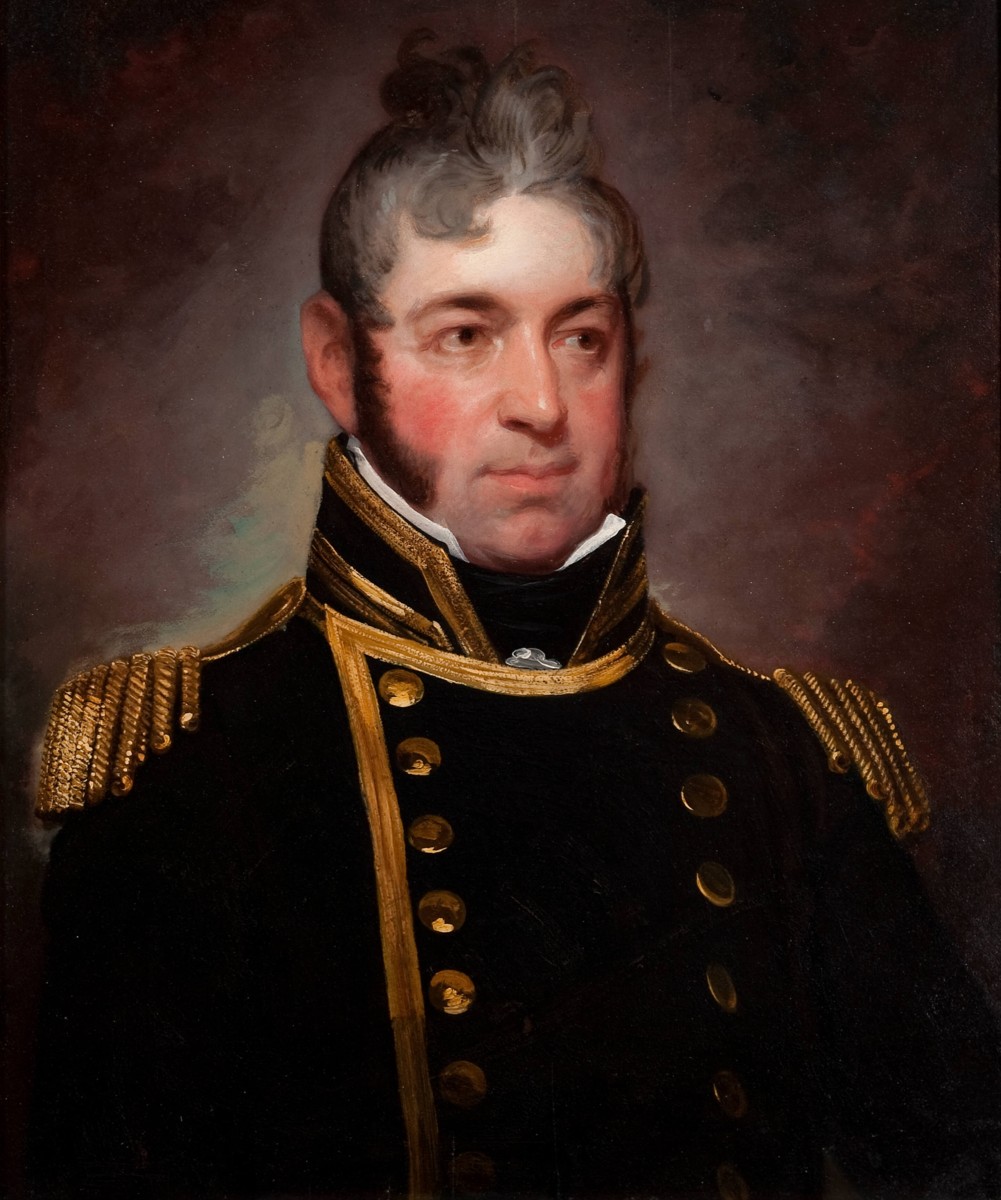 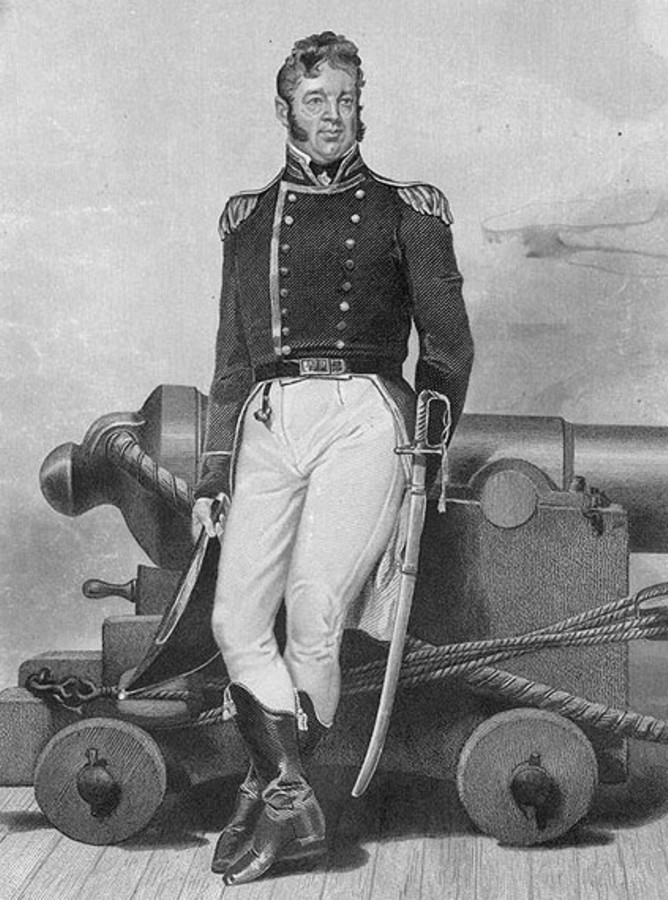 |
||
| patches + more | ||
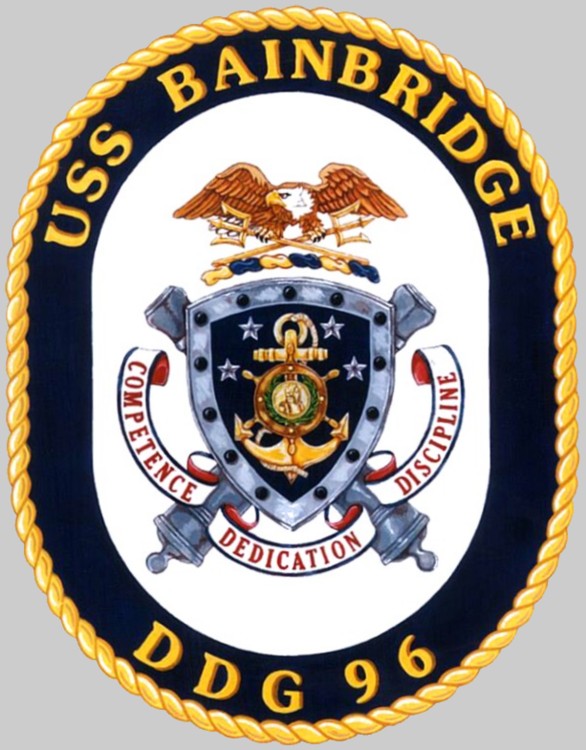
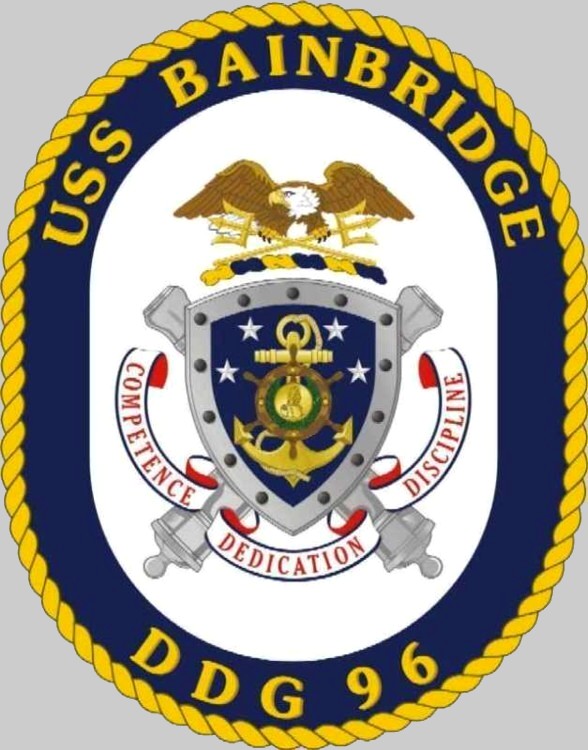 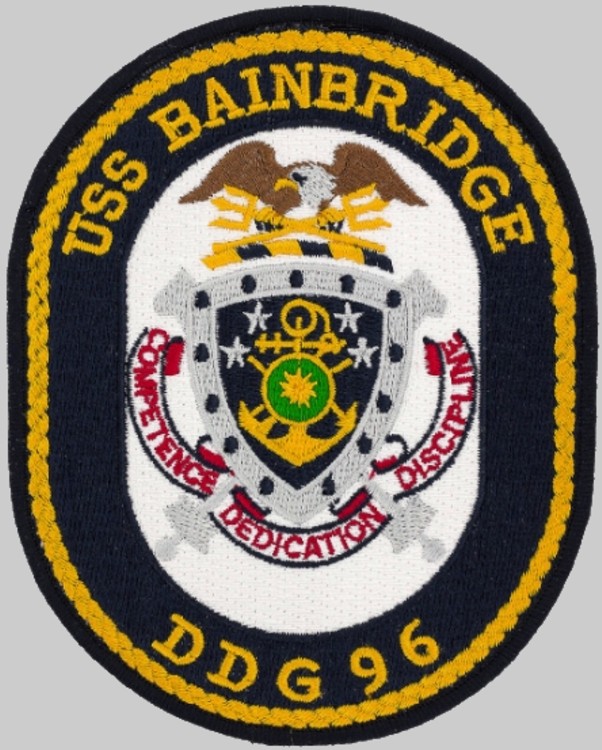 |
||
|
|
seaforces.org
|
USN ships
start page | |